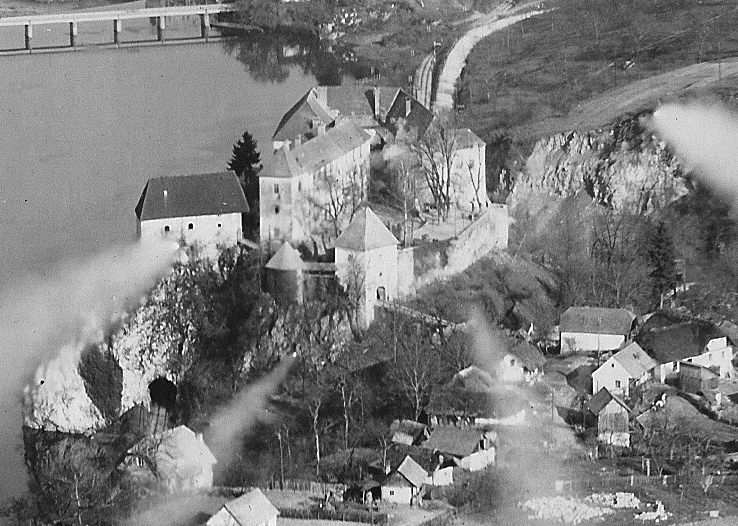On the SAAF’s (16 & 19 Squadron) trail in Croatia/Slovenia , June/July 2017
Tersia and I went on a holiday trip to Croatia/Slovenia. In between our holiday we also visited some SAAF WW2 target sites and met many interesting people who also love this history.
I took along hundreds of high resolution strike photograph scans on I-pad obtained from the archive in Pretoria and showed it to people who live there. Amazing response. These photographs are mostly unknown and unpublished and of great historical value to the locals. (Click HERE to view all the strike photographs)
Also very interesting to experience the target sites and do a comparisons of then and now.
Quite a surprise that the Croats/Slovenians today see the SAAF as heroes with the greatest of respect because we supported Marshall Tito’s Partisans.
I also took along special colour prints of the SAAF Beaufighter aircraft used by our SAAF 16 and 19 squadrons and hand it out to people we met as a memento. The graphics was done by my friend Brent Best.
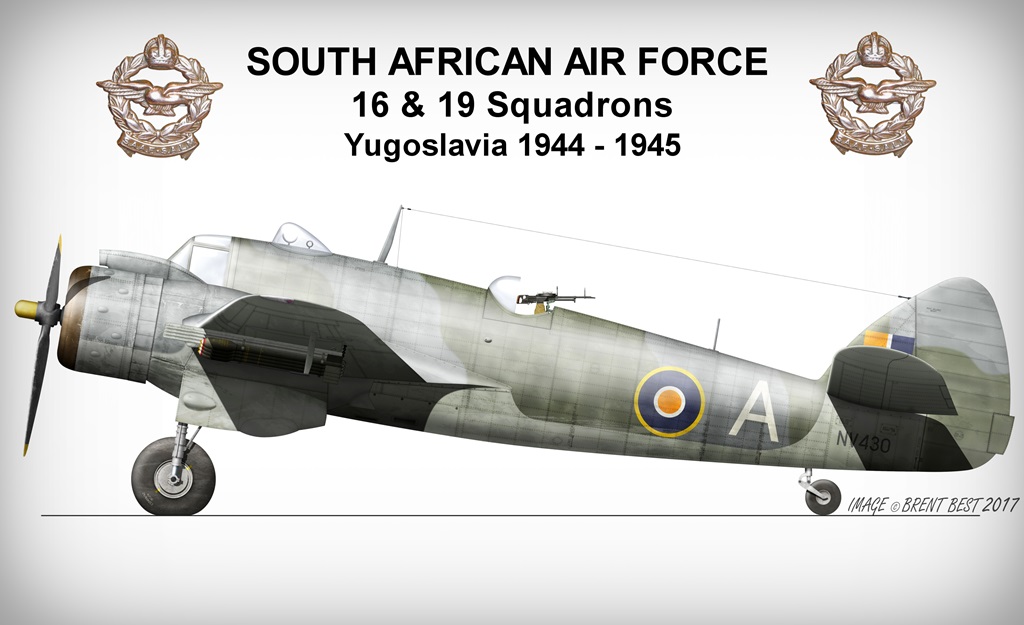
Selfies haha
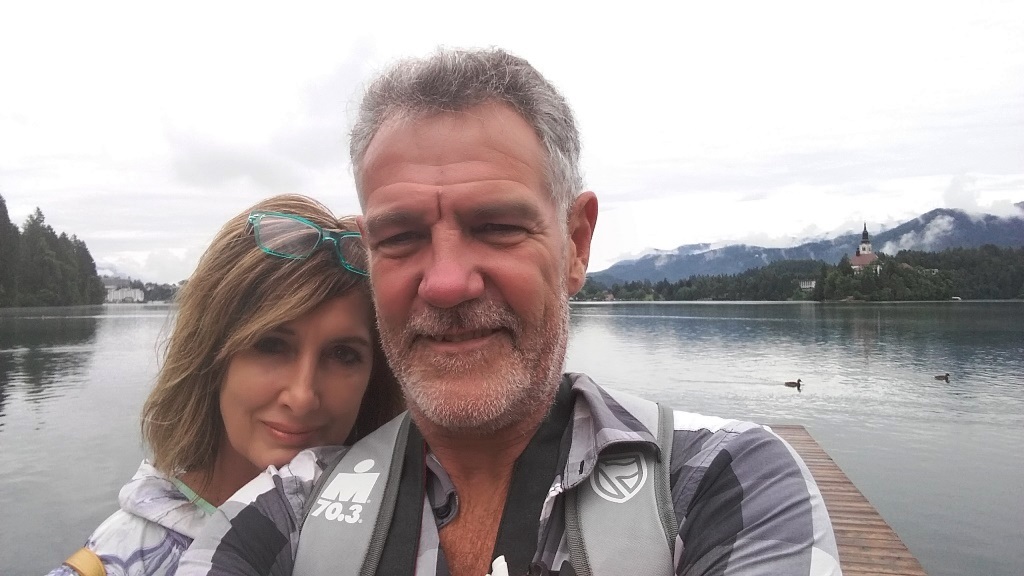
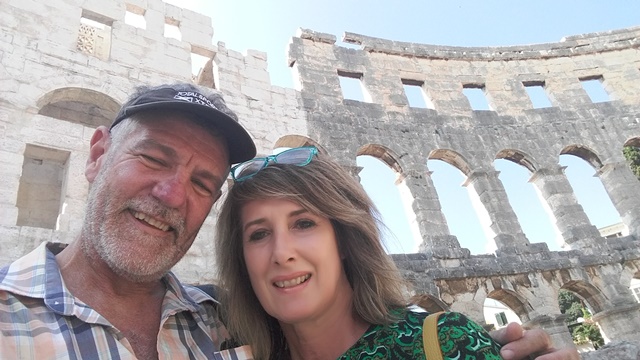
Lake Bled Pula

Plitvice Lakes
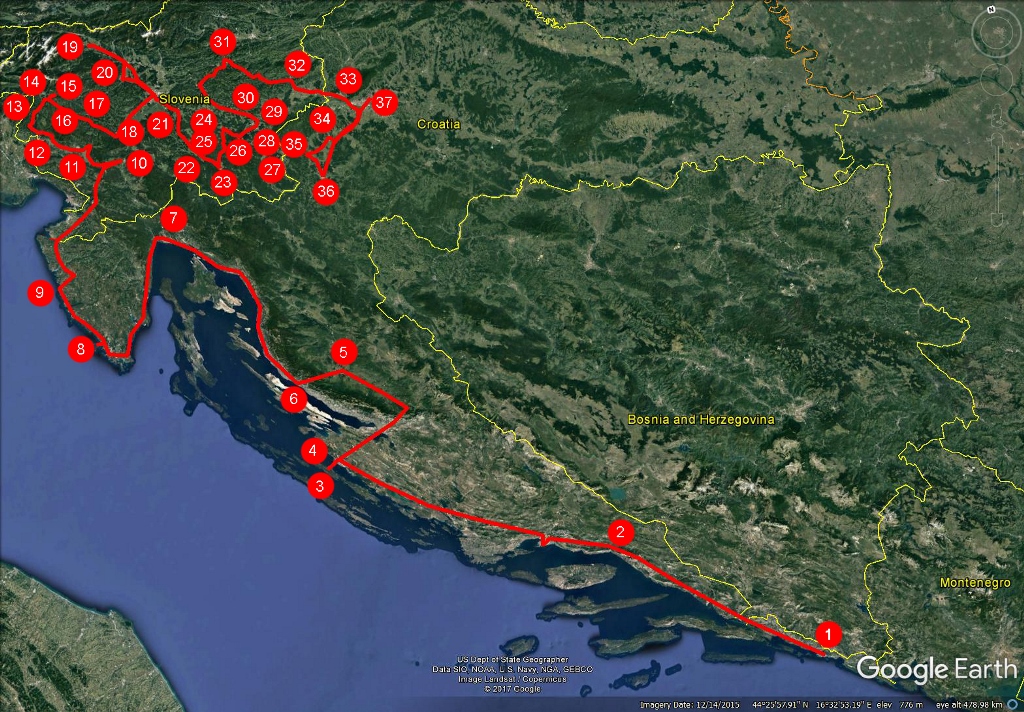 Map of SAAF target sites visited during our trip.
Map of SAAF target sites visited during our trip.
Here a list of places visited with similar numbers as indicated on the map, scroll down to view images of the specific site:
CROATIA
1) Dubrovnik; Hotel Excelsior
2) Zadvarje; Attack on power station
3) Ugljan (Uljan) island; attack on St. Michael’s fortress
4) Zadar (Zara); met WW2 historians
5) Gospic; attack on village
6) Karlobag; church destroyed
7) Rijeka (Fiume); mine sweeper “Kuck-Kuck” sunk, meet historian
8) Brijuni (Brione) island: attack on Neptune and Karmen hotels.
9) Porec (Porenza): ship sunk moored next to hotel “Palazzo”.
SLOVENIA
10) Postojna (Postuma); attack on village, rail yard and barracks
11) Col (Zolla): multiple attacks on village
12) Trnovo (Taranova): attacks on village
13) Kanal (Canale Disonza): attack on village
14) Most na Soci (St. Lucia): attack on village
15) Baca pri Modreju: attack on bridge
16) Dolenja Trebusa (Trebussa): attack on barracks
17) Idria: multiple attacks on village, meet historians
18) Hotedrisca: attacks on village
19) Radovljica: attacks on barracks
20) Skofja Loka: attacks on barracks and village, meet historian
21) Grosuplje: attack on rail yard and village
22) Ribnica: attack on village
23) Kocevje: attack on rail yard and village
24) Zuzemberk: Multiple attacks on castle and village
25) Zafara: attack on church and buildings
26) Dvor: attacks on village
27) Vinkov: attack on village
28) Straza: attack on village
29) Novo Mesto: multiple attacks on city
30) Grad Hmeljnik (Brsljin castle): attack on castle
31) Tribovlje: attack on village
32) Sevnica: attack on rail yard
CROATIA
33) Prudnice: attack on rail yard
34) Jastrebarsko: attacks on village
35) Ozalj; attack on village and castle
36) Karlovac; attack on rail yard
37) Zagreb; National History Museum
1 DUBROVNIK
We visited the Excelsior hotel that was attacked by 16 and 19 squadrons in August 1944. We met a staff member of the hotel and handed over a SAAF Beafighter picture.
Click HERE to go to the page of SAAF attacks on Excelsior hotel, Dubrovnik.
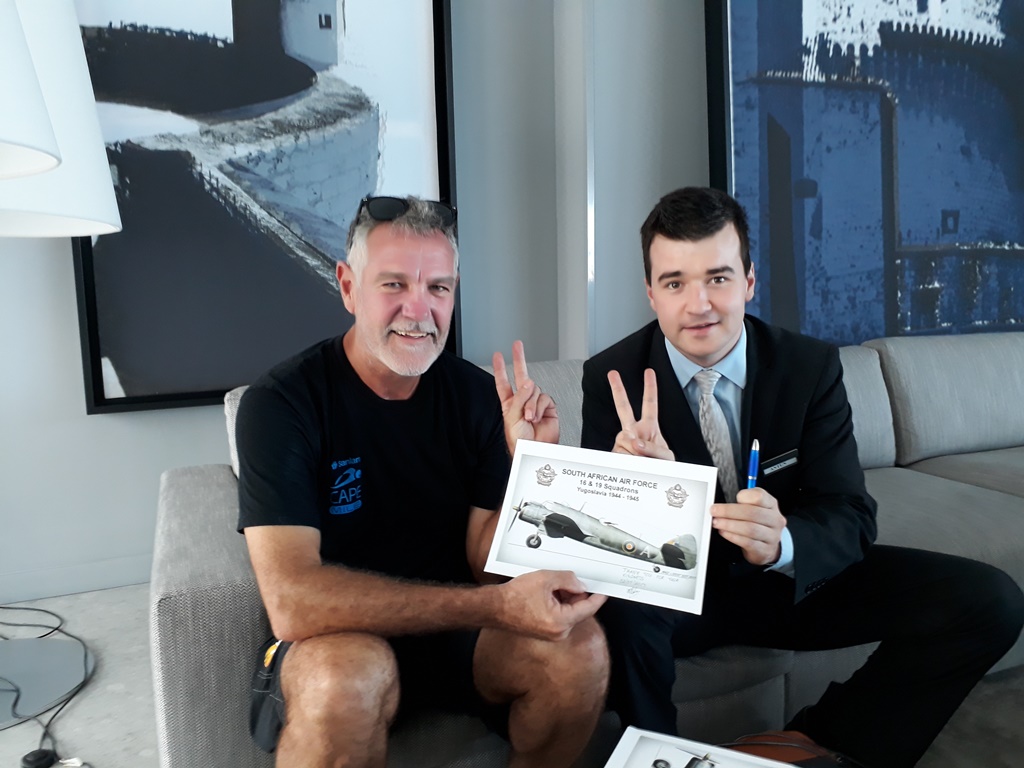 Together with Antun in the Hotel Excelsior where we discussed the attacks on this hotel by the SAAF in August 1944.
Together with Antun in the Hotel Excelsior where we discussed the attacks on this hotel by the SAAF in August 1944.
Email from Antun:
Dear Tinus
Thank you very much for sharing this info with me and for sending me these picture without high resolution. So i am waiting to receive better pictures with high resolution when you come back in South Africa. Please try to send me that when you come home. Thank you for your understanding and best regards Antun Rakigjija from Dubrovnik
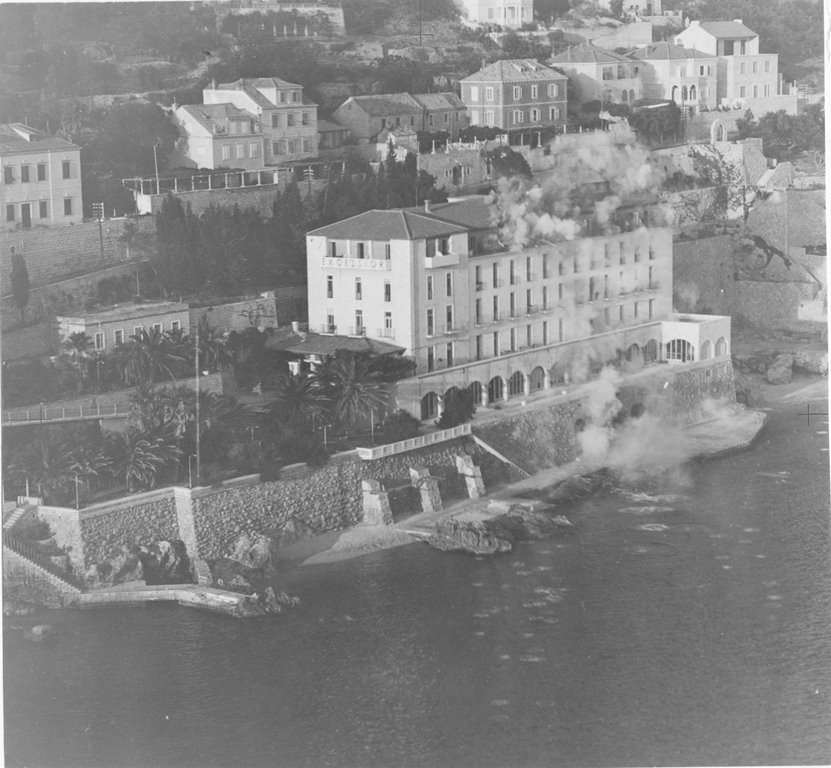
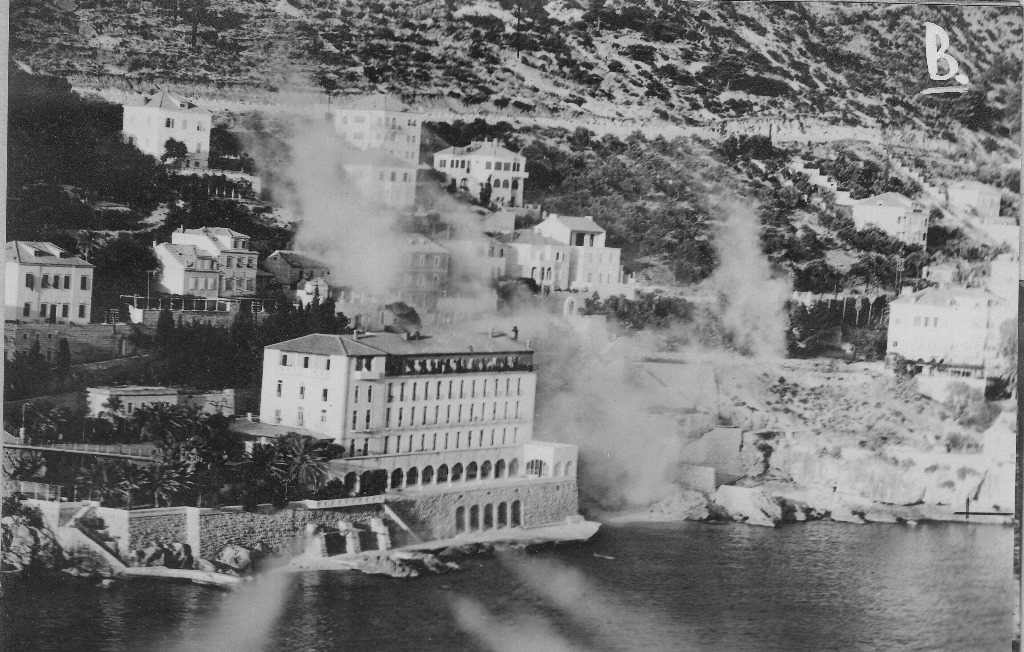
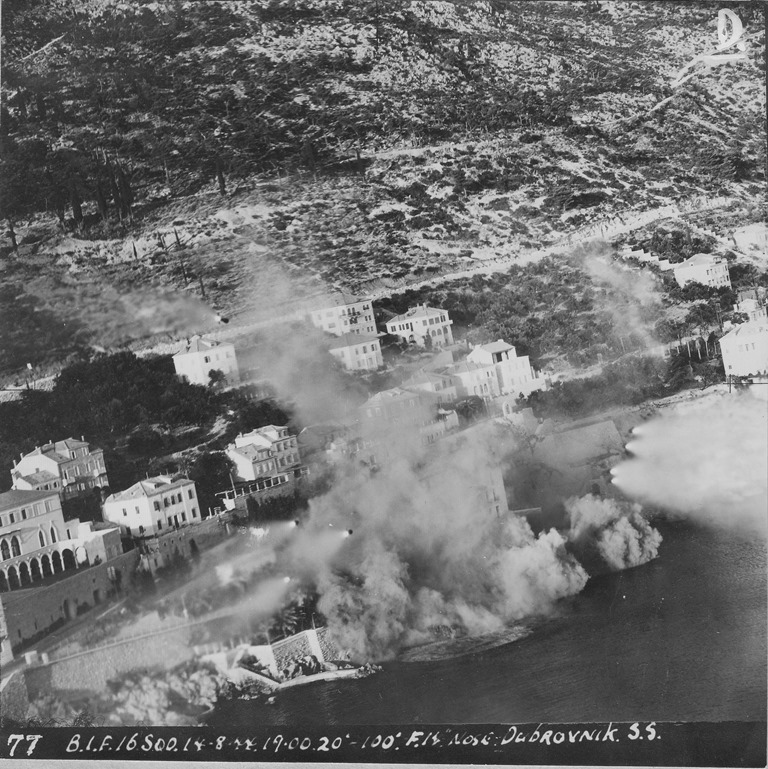
View on the Excelsior hotel from the old city
Hotel Excelsior with the new wing added
On the veranda of the hotel Excelsior enjoying a beer. On the hotel wall seen here many SAAF rockets struck and killed several German officers inside the hotelaccording to Partisan reports.
On these walls several rockets made their impact but no visible damage observed.
 Walls of the old city then and now
Walls of the old city then and now
2 ZADVARJE
Zadvarje power station was attacked by the SAAF on Aug 1944. One aircraft crashed killing Lt Russell and Lt Stanbury.
Tonci Cizmic organised for a memorial that was erected at the crash site.
Tonci and his daughter Jelena were our hosts for the day of our visit showing us around and also organised a visit to the power station.
They also showed us the surrounding area and the visit ended with a lunch at Tonci's house with the most wonderful food made by Tonci's wife, Dinka.
Click HERE to go to the page of SAAF attacks on Zadvarje power station.
Click HERE to go to Lt. Russell's tribute page.
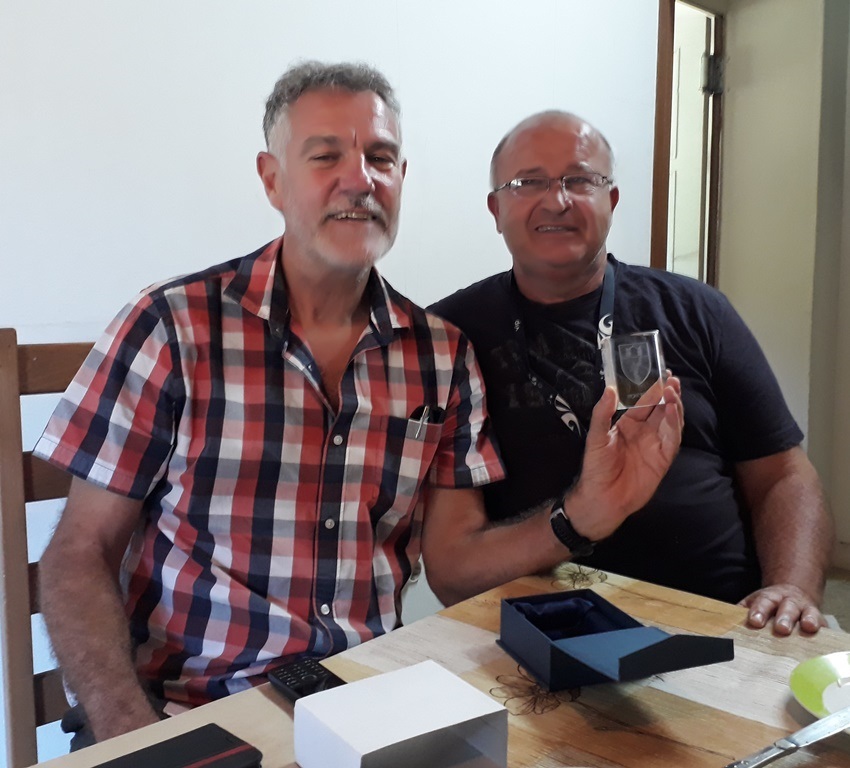
Tonci gaveme a wonderful gift from with an Zadvarje emblem engraved to it.
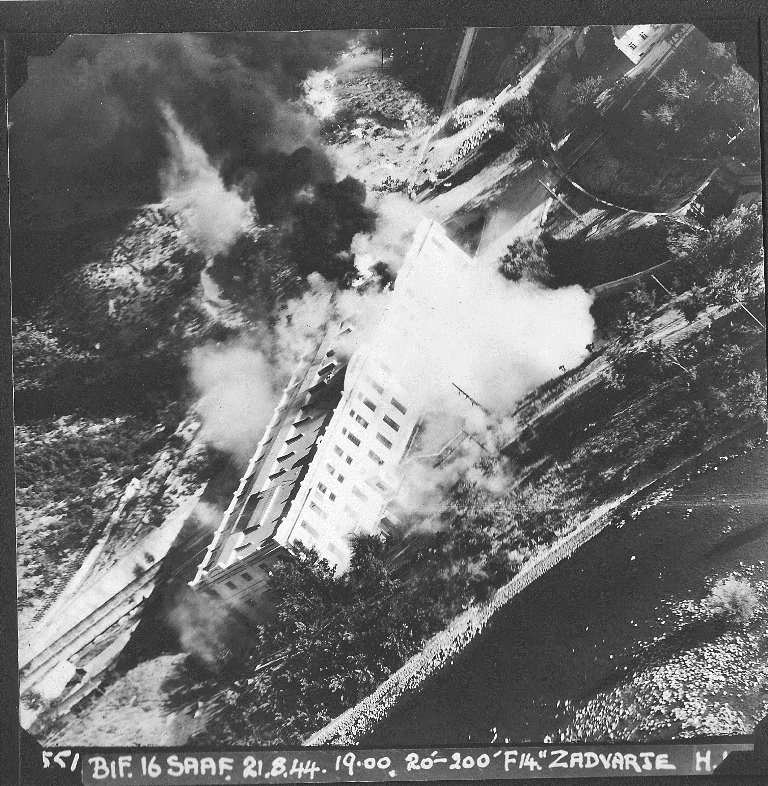
The strike photograph showing the power station and smoke and flames from Russel's crashed aircraft.
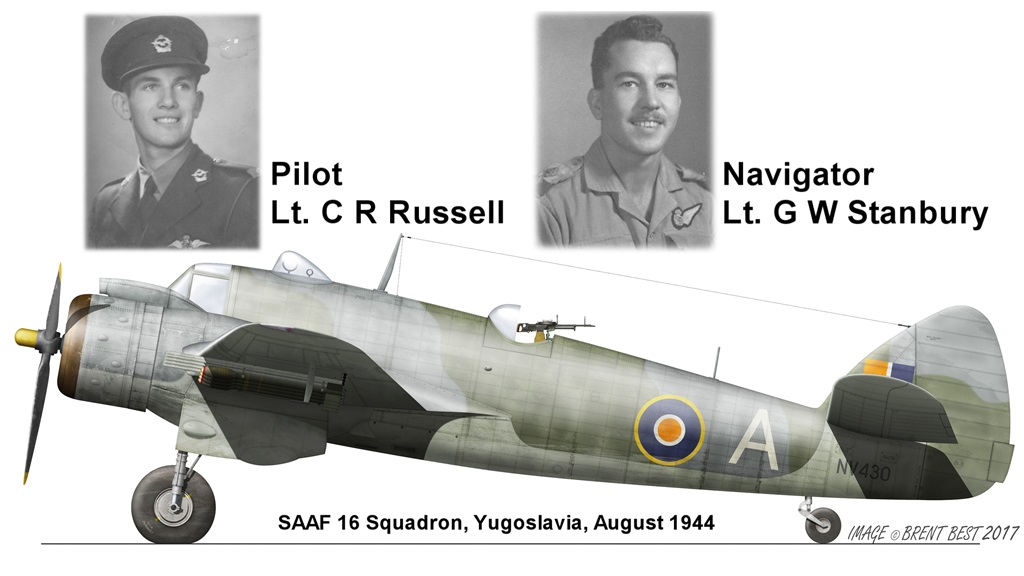
The power station today from up above the pass
Power station from outside
Inside the power station showing the ancient turbines/generators
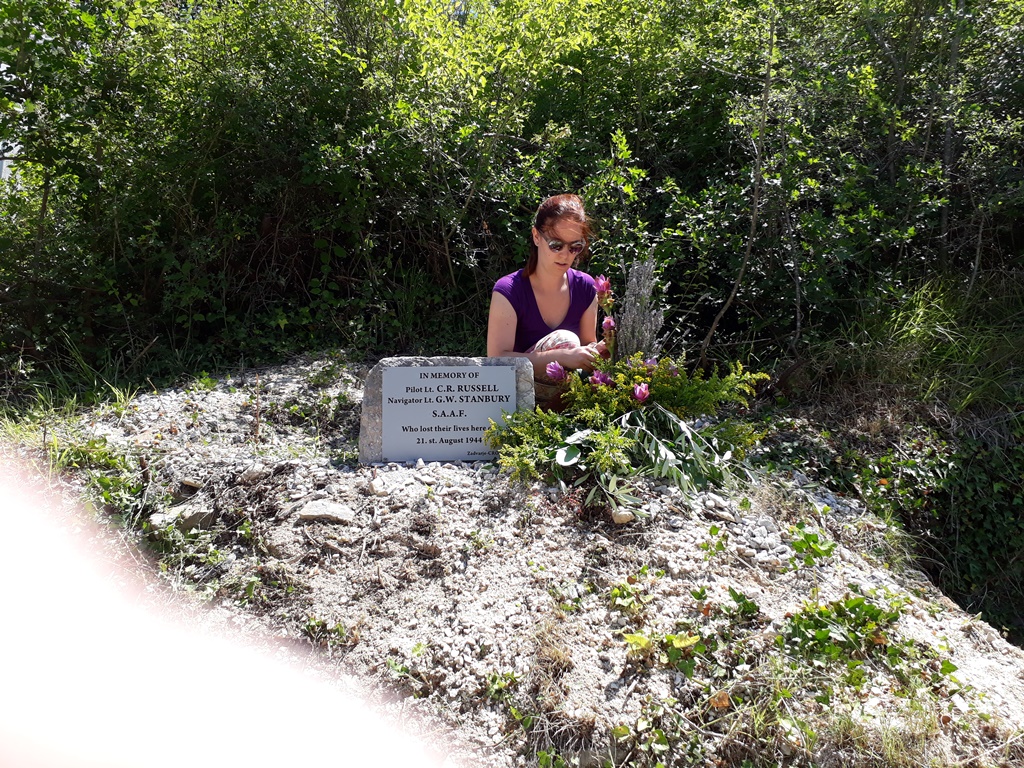
Antonija laying a flower wreath at Russel/Stanbury's memorial'
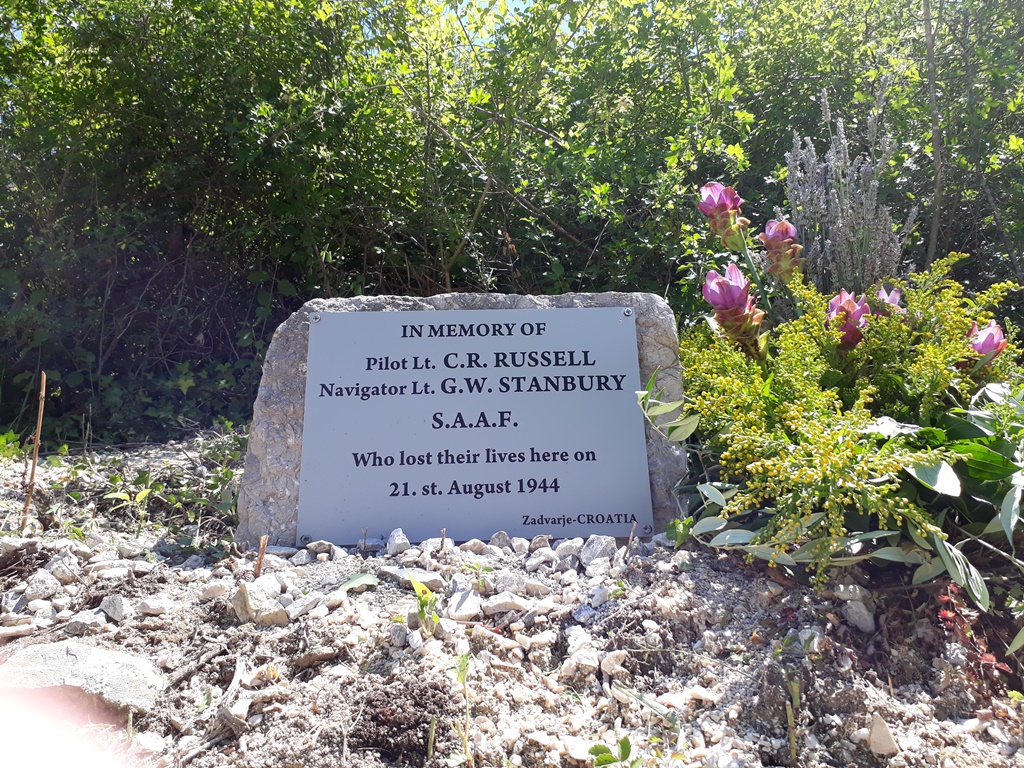
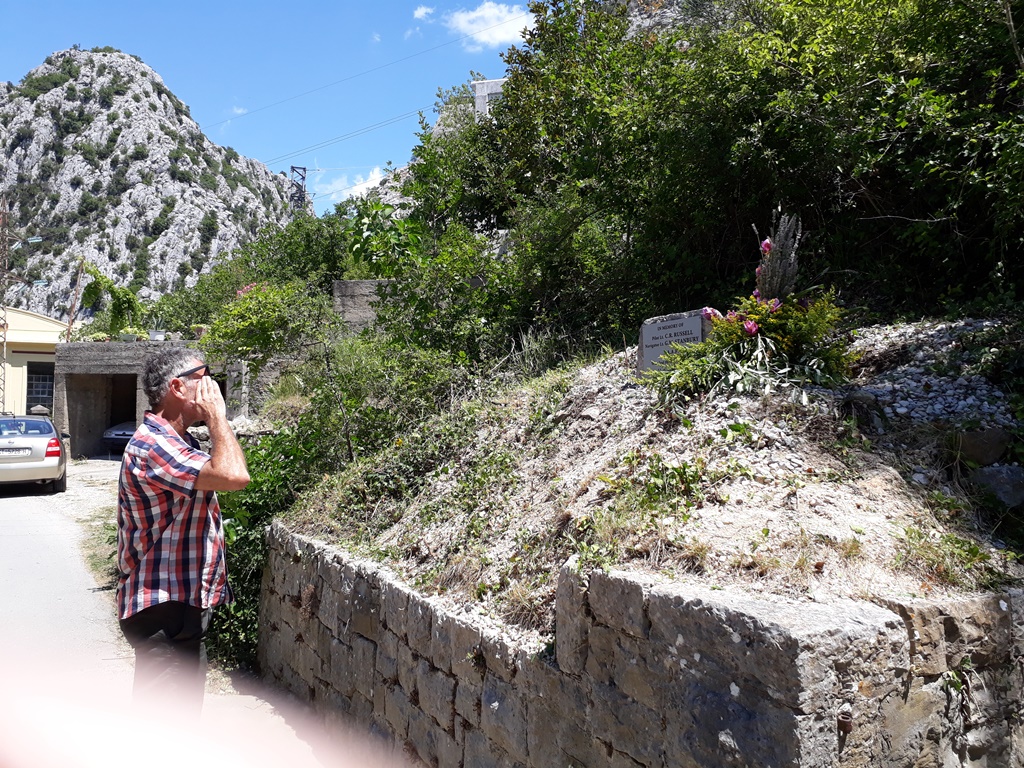
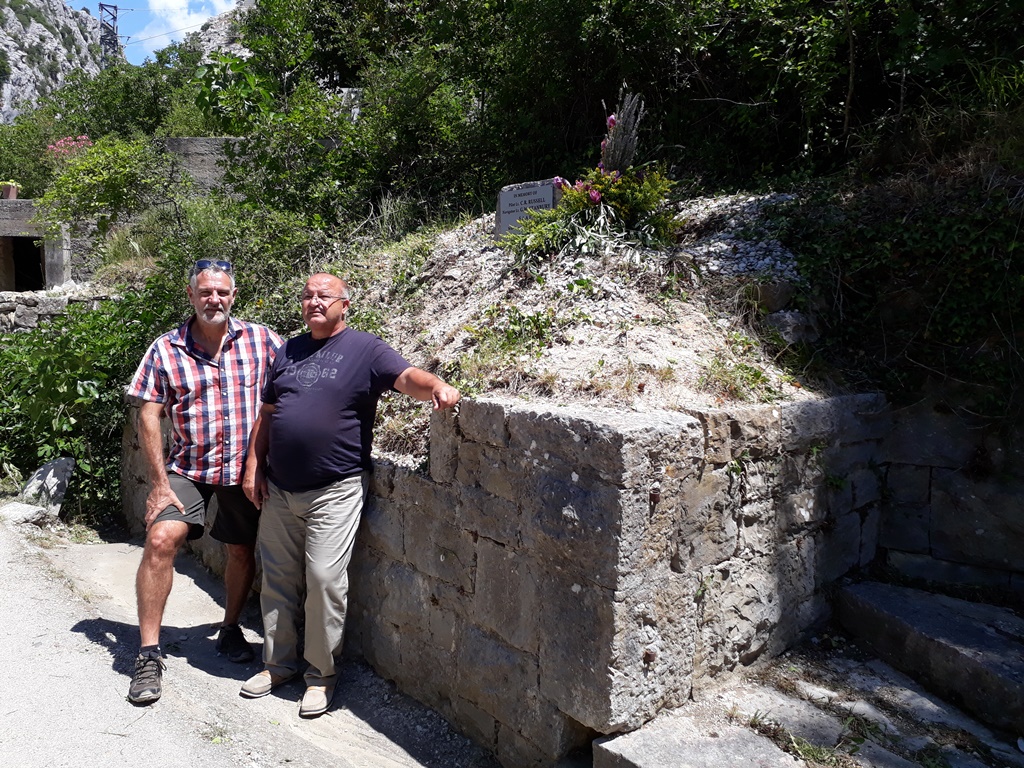
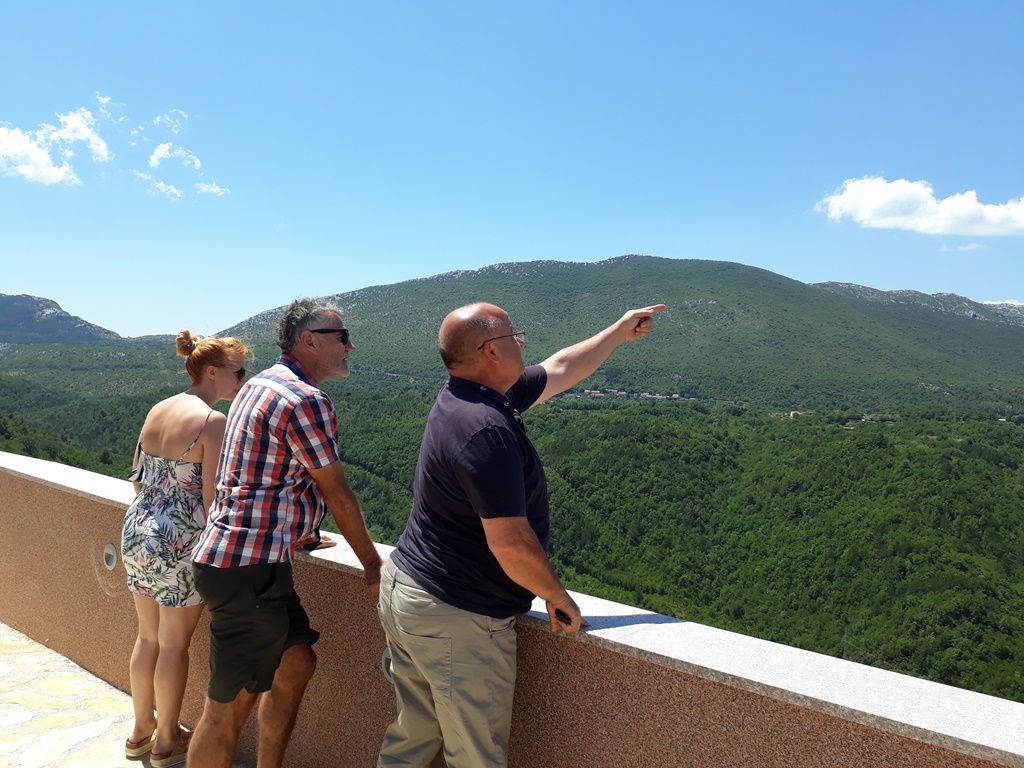 Tonci shows where the attacking aircraft came down for the attack on the power station
Tonci shows where the attacking aircraft came down for the attack on the power station
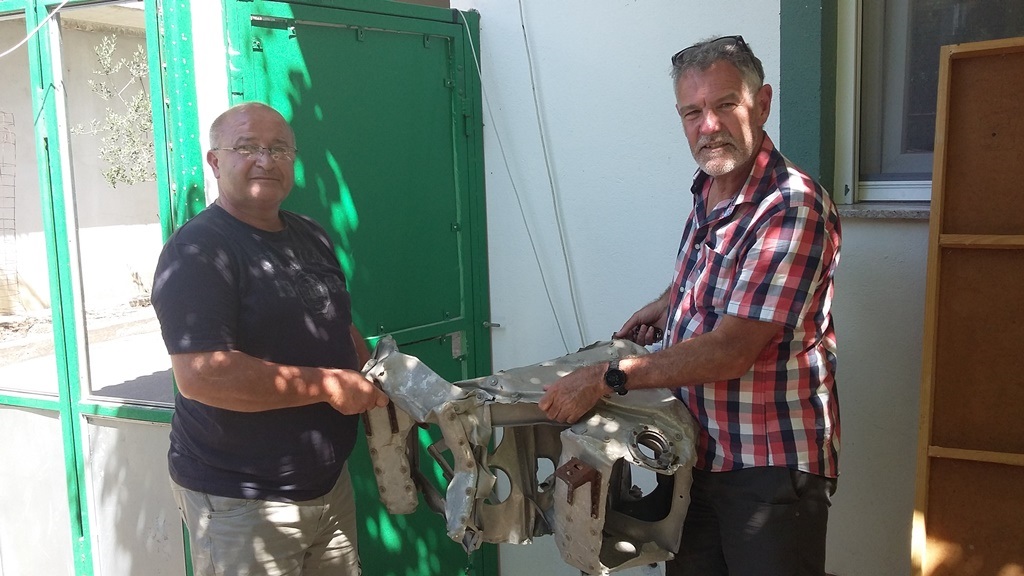 Piece of the Beaufighter wreckage found by Tonci's son, Stanko.
Piece of the Beaufighter wreckage found by Tonci's son, Stanko.
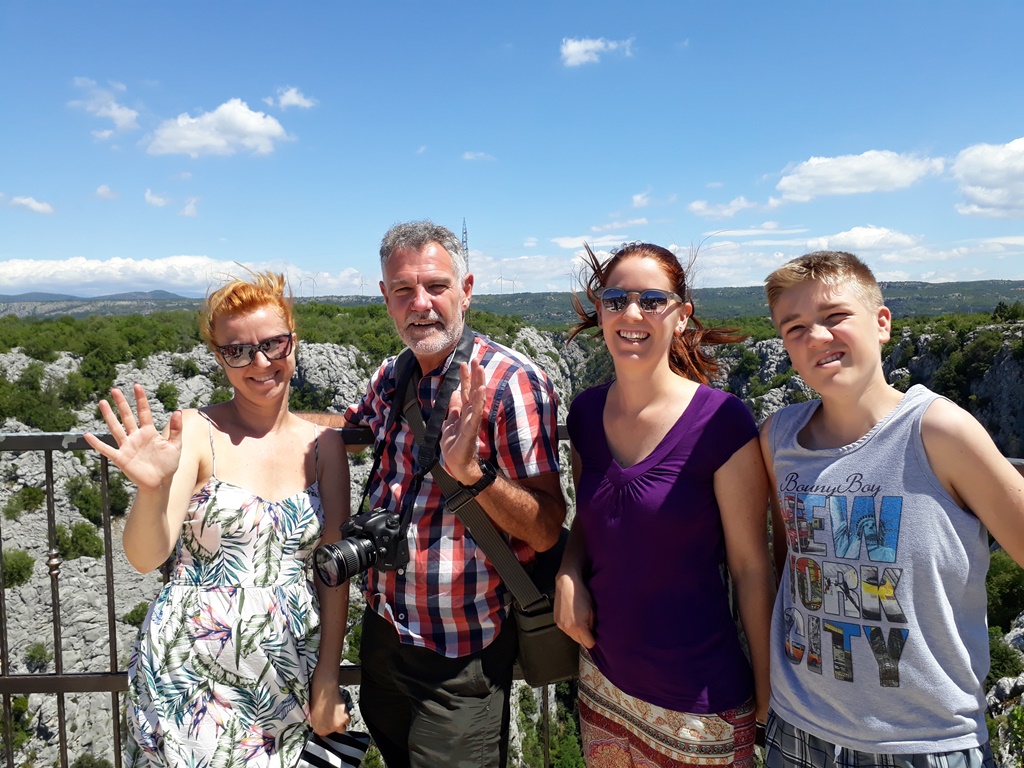 Jelena, Tinus, Antonija and her brother Ante.
Jelena, Tinus, Antonija and her brother Ante.
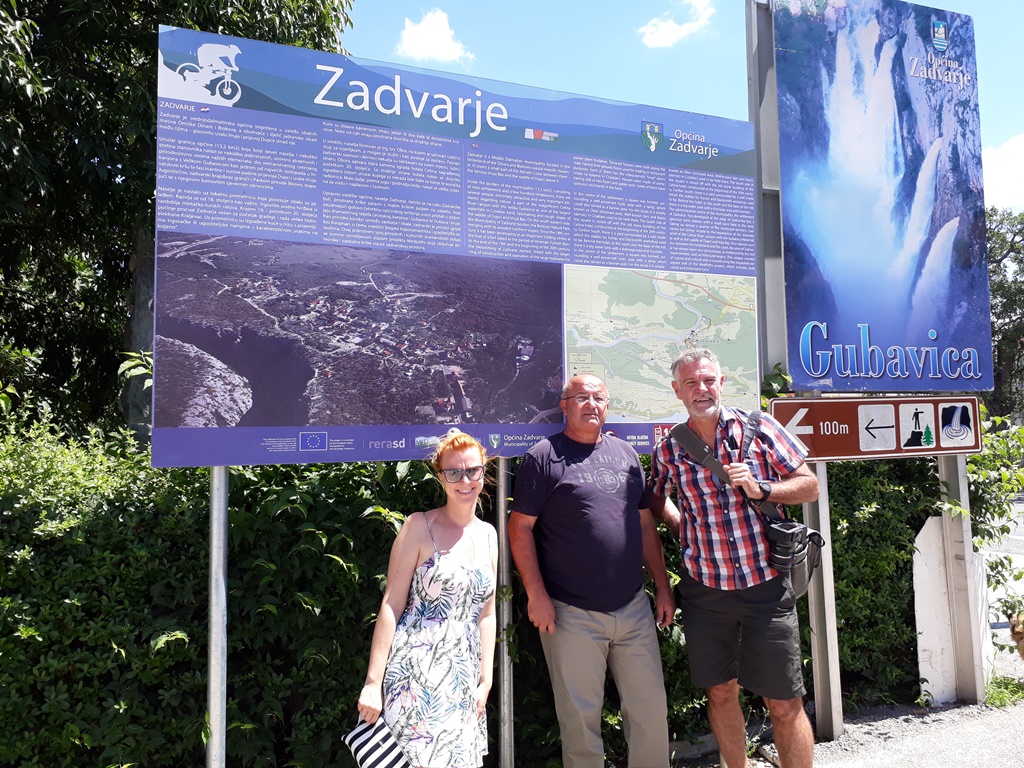
Bill board on top of the pass going down to the power station
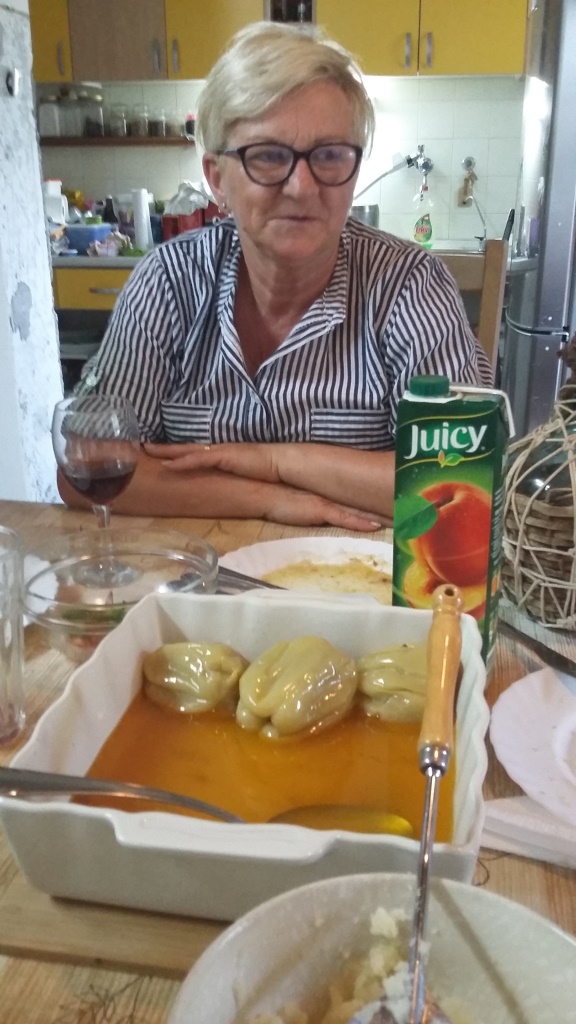
Tasty traditional lunch made by Tonci's wife Dinka.
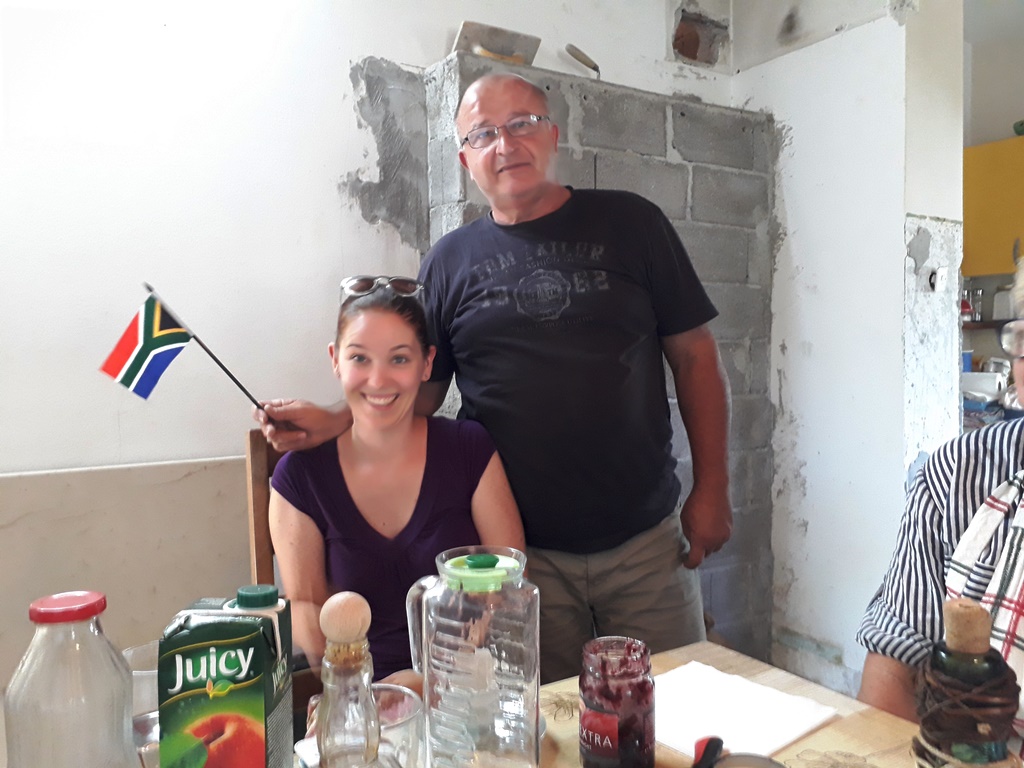
Tonci and Antonia.
3 UGLJAN FORTRESS
This medieval castle/monastery was attacked on two occasions in 1944 by 16 squadron.
It is known as the "St Michael's fortress"
We took a ferry from ZADAR to Ugljan island and went on a fantastic hiking trip up to the castle. Fantastic scenery up there!
We learnt that the building was also further destroyed in the opening stages of the homeland war.
Click HERE to go to the detail Ugljan attack page


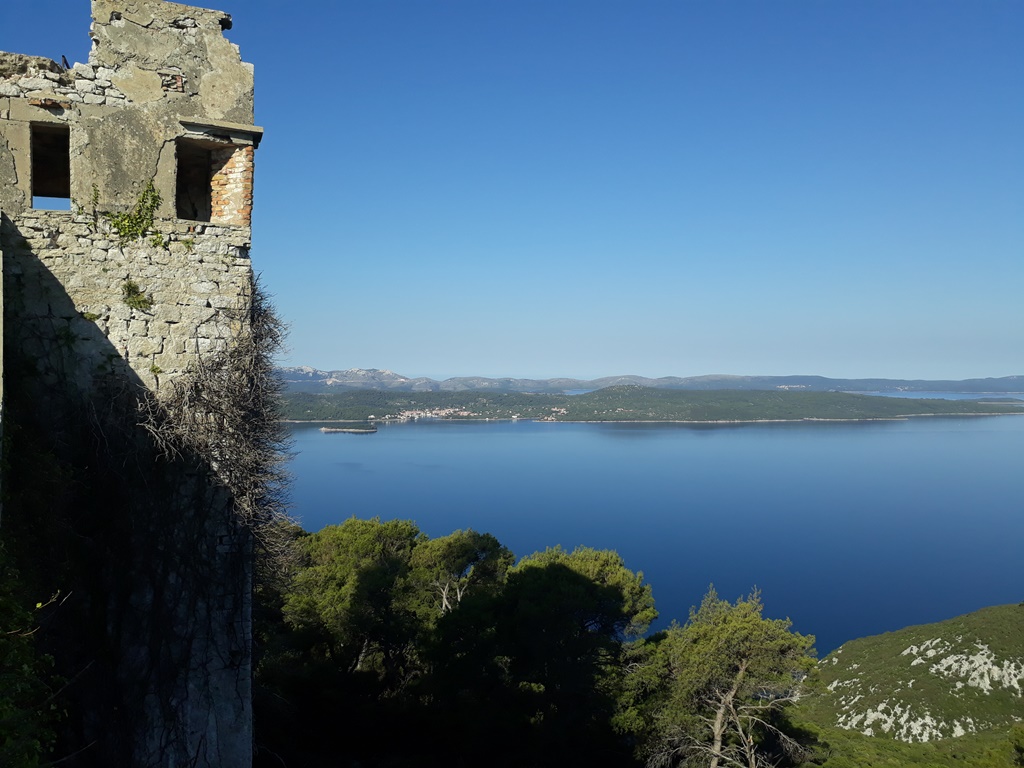
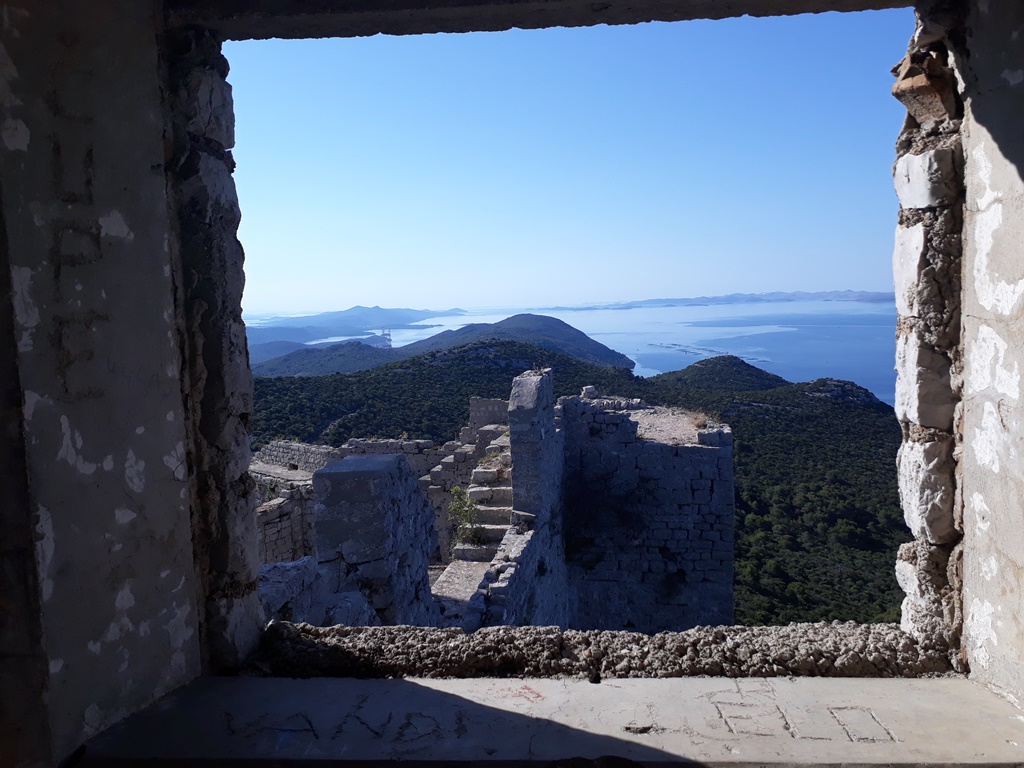
4 ZADAR
In Zadar we were invited by Internet historian friends Sime Lisica and Jurica Vucetic for a sea front Barbeque at the house of Sime Lisica. We had a most memorable evening with superb wine from the region. In the past we did exchange historical information via the internet.
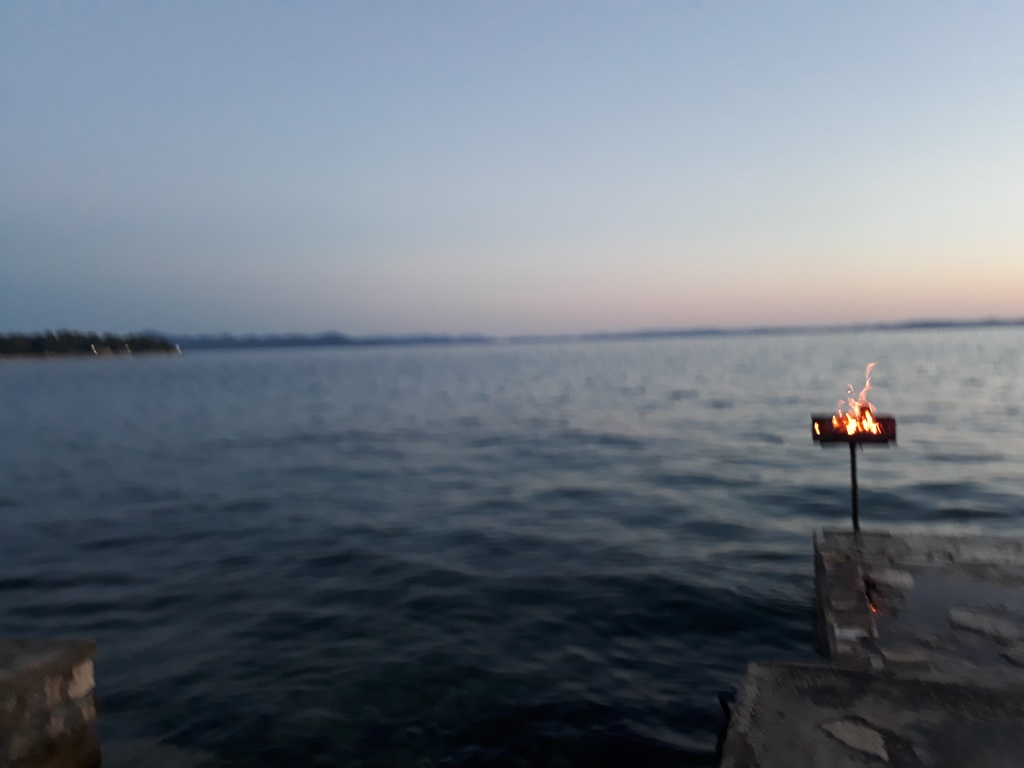
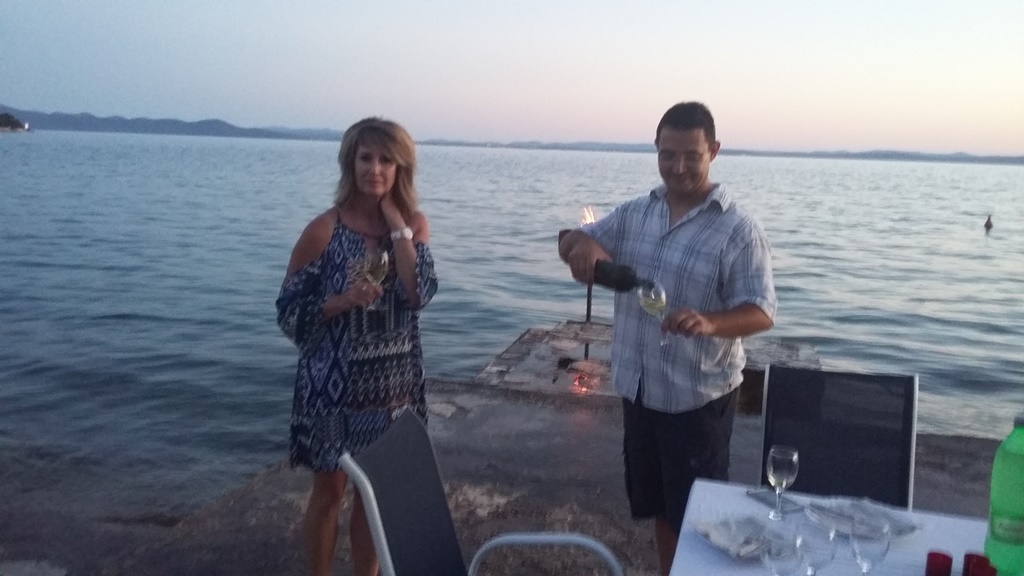
Tersja and Sime
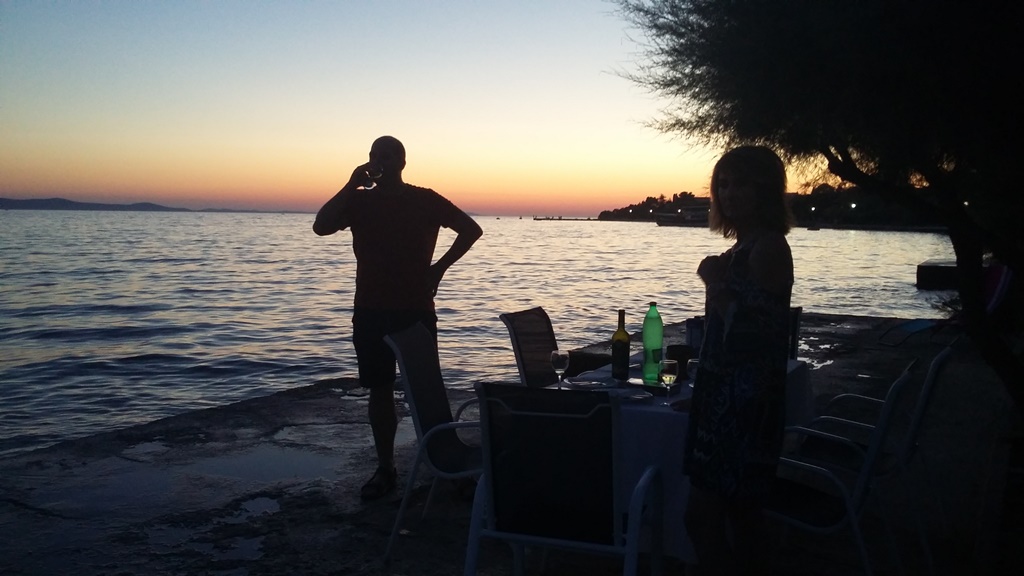
5 GOSPIC
Gospic was attacked by SAAF 16 squadron in Feb 1945.
We walked in the town and visited the information buro where we met Ivica who was kind to us and told us his mother told him about the Aerial attacks during WW2. He told us that the Homeland war was terrible in the town of Gospic and was under bombardment for several years.
We also visited the Church and met a lady who told us that the church was very badly damaged during the homeland war. She told us that as a child she lived for 4 years in a bunker during the homeland war.
Click HERE to see the page on SAAF 16 squadron attacks on Gospic.
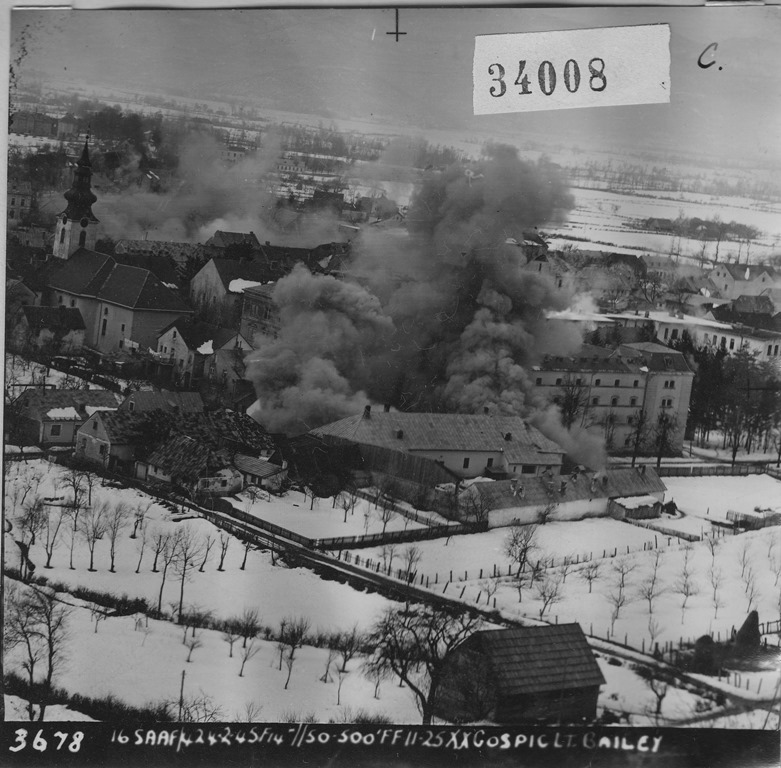
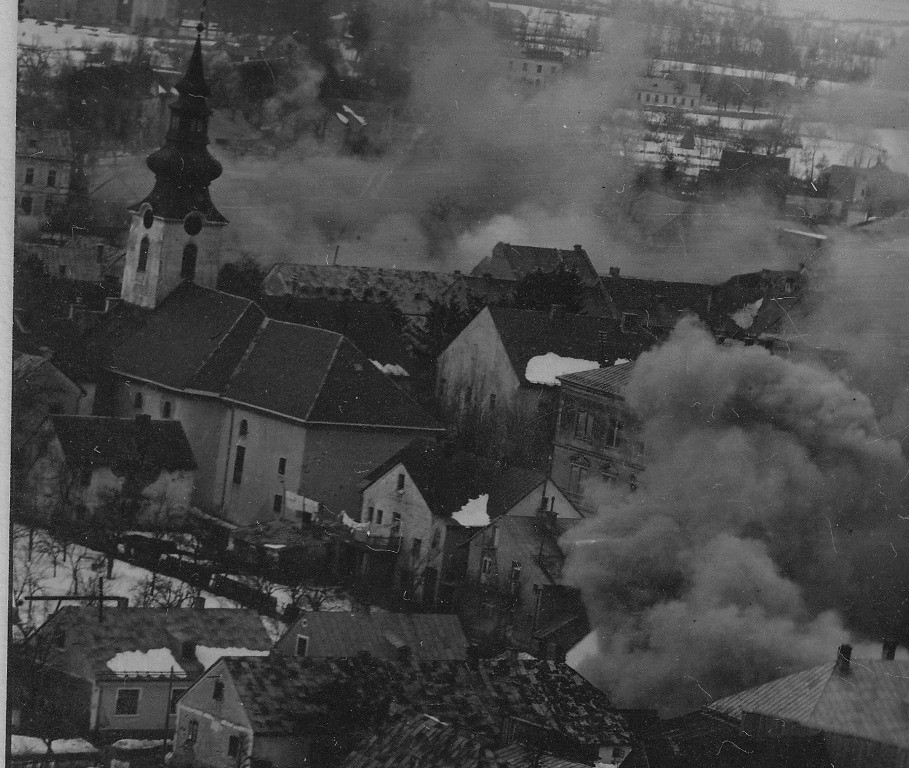
Church
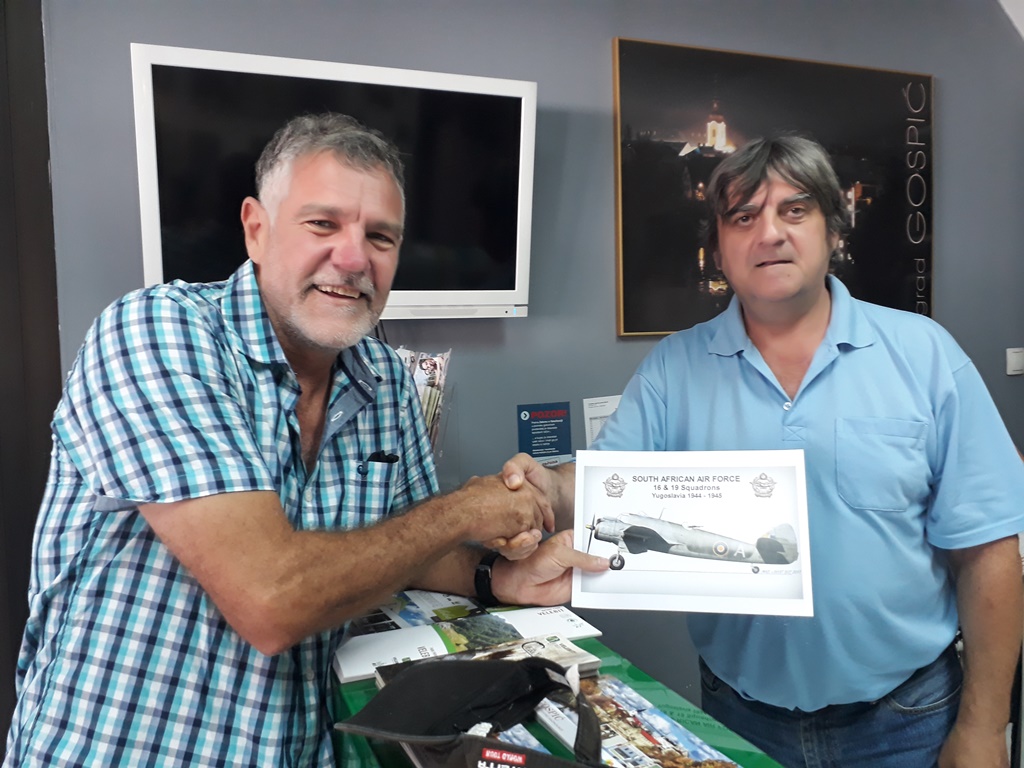
Ivica who helped us at the information bureau at Gospic.
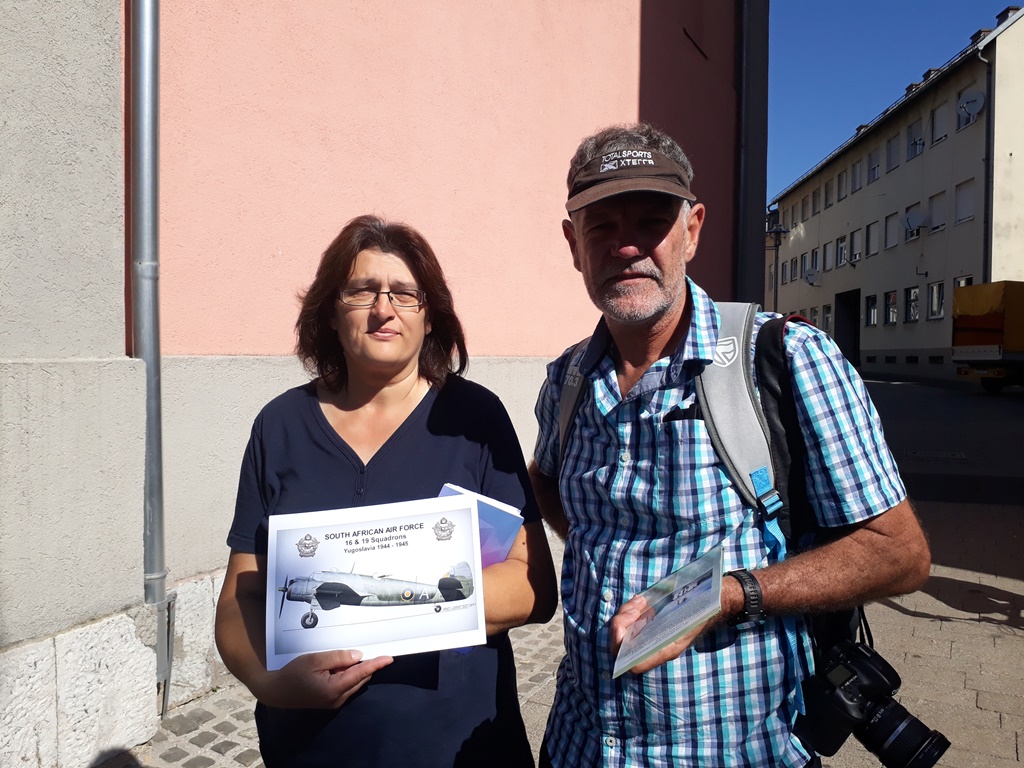
This lady helped us at the church
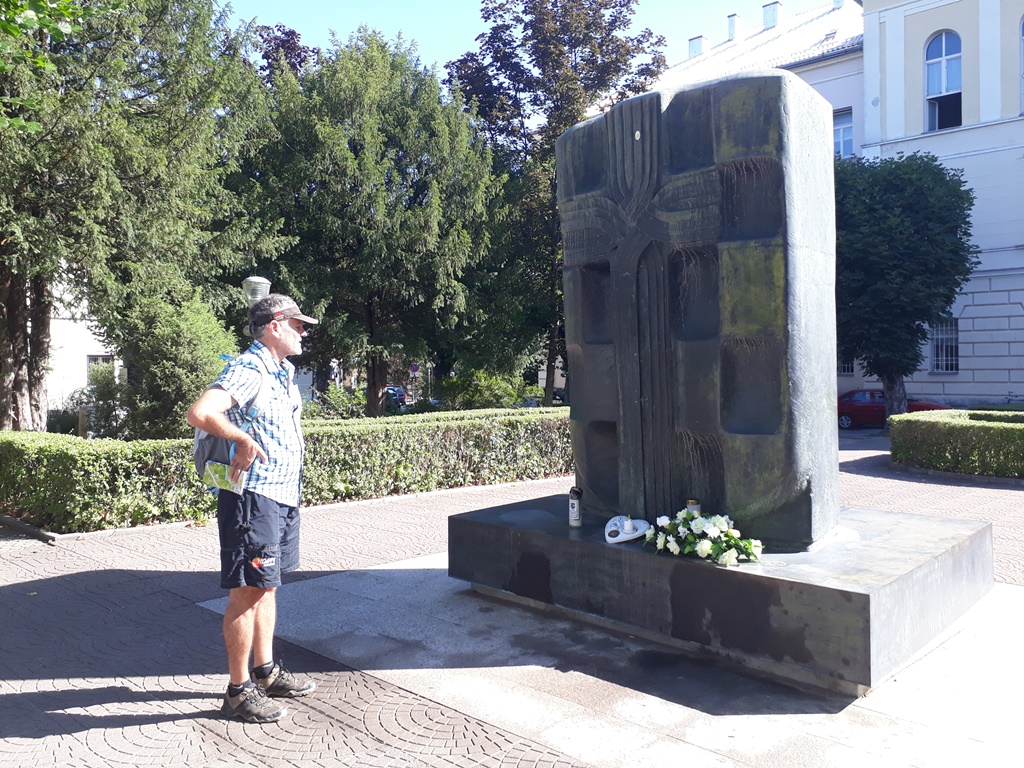
Homeland war memorial: terrible bombardment and loss of life in Gospic.

Church inside
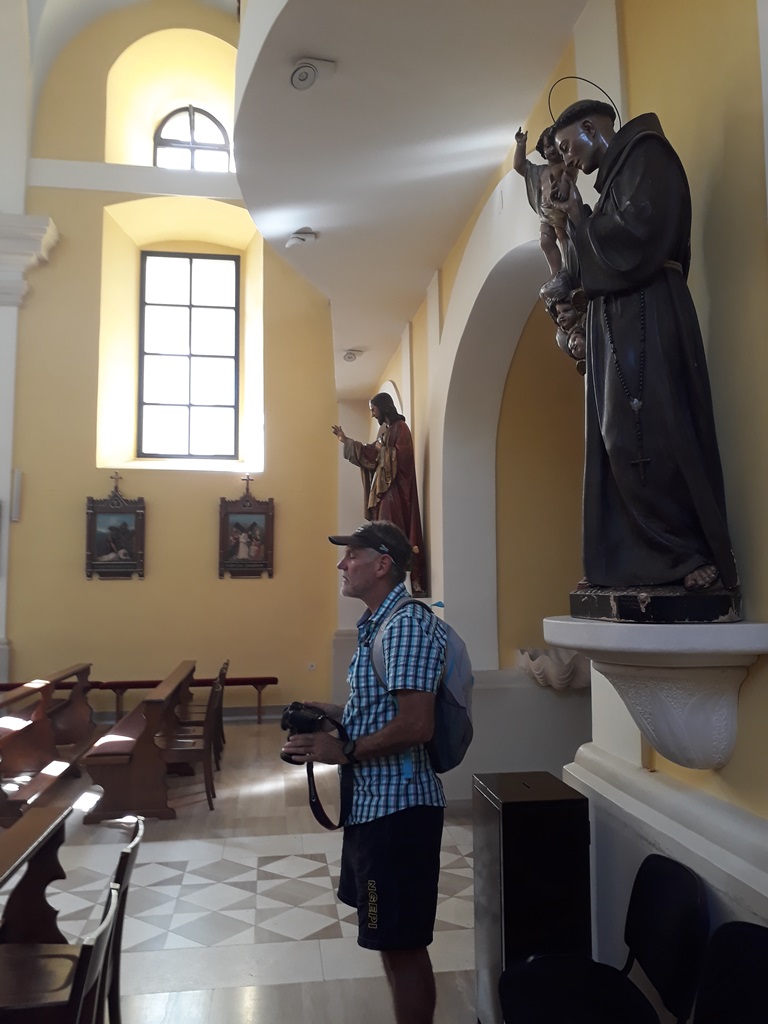
Church
6 KARLOBAG
Karlobag is a beautiful small little coastal village on the Adriatic. !6 Squadron attacked the church with rockets believed to be an ammunition store for coastal guns up the mountain. The church was destroyed never to be restored. These photographs present the very last photos of the church before total destruction.
We visited the information bureau and sent them the high resolution photographs. We got some positive response afterwards.
Click HERE to see the page on SAAF 16 squadron attacks on Karlobag.
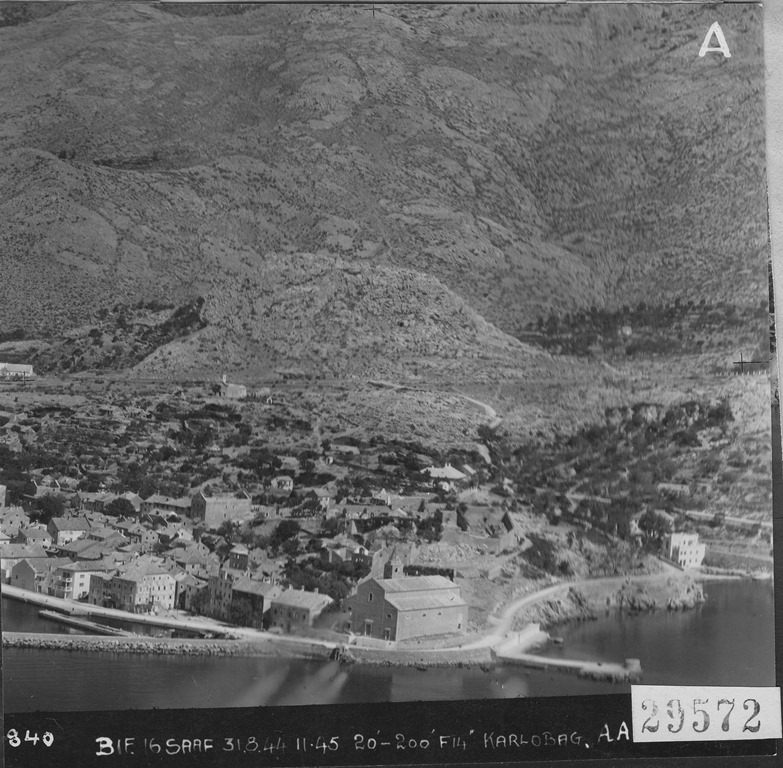

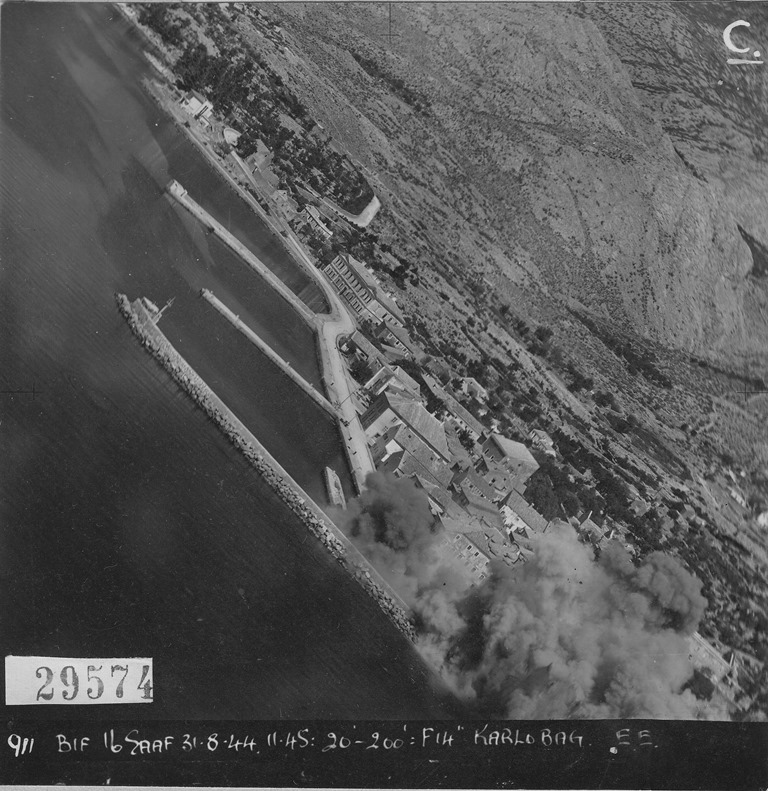
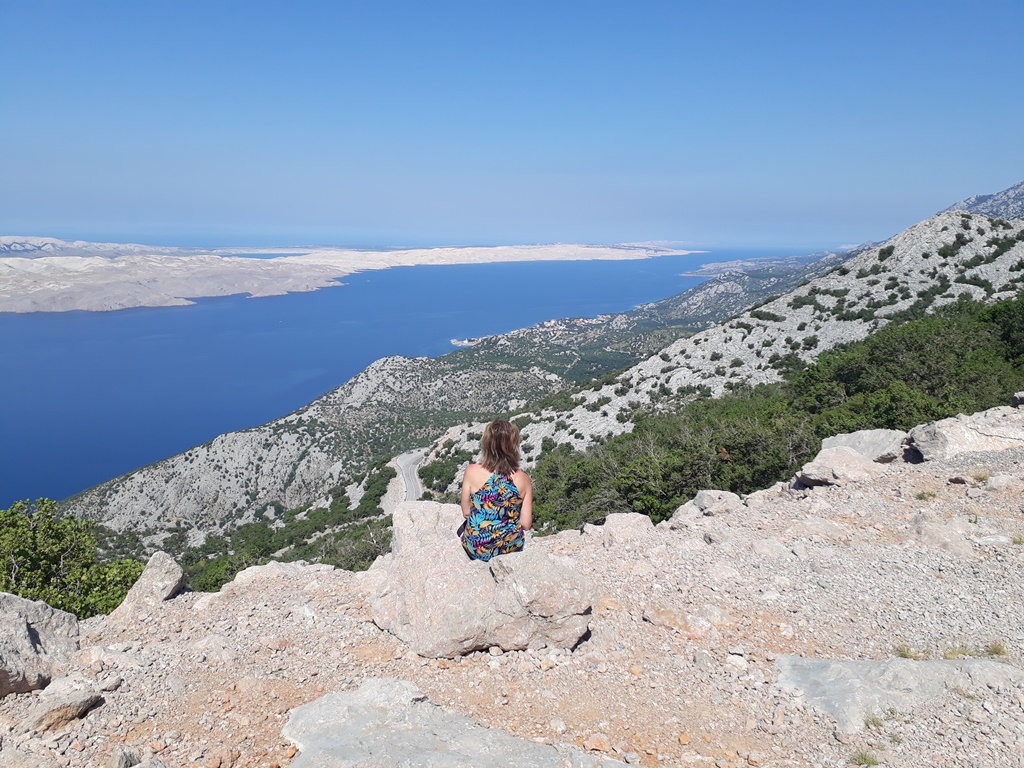
Driving down the pass on the Gospic road to Karlobag visible far down under.
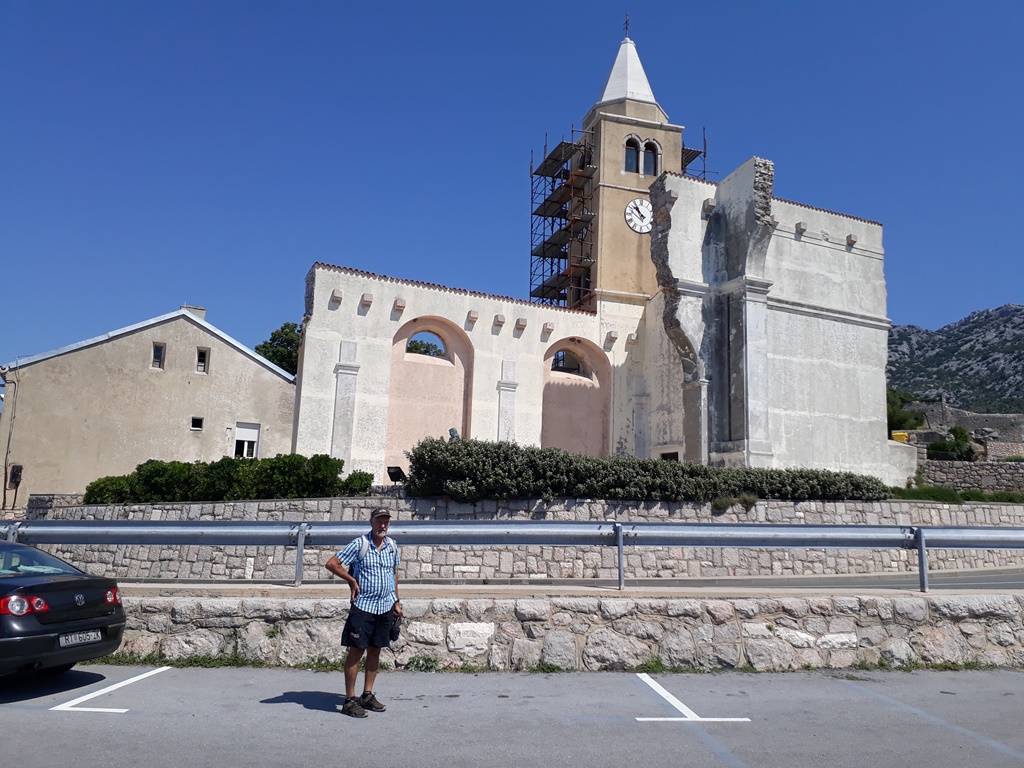
All that is left of the church today presented as a memorial. They got the date wrong indicating 1943...Sad to think that South Africans was the cause of destruction, but of cause directed by the Partisans who did the target identification.
Another view of Karlobag with the church tower sticking out
Sent: 09 August 2017 09:32 PM
To: wcmilling@iafrica.com
Subject: Bombing of the church in Karlobag
Dear Mr. le Roux,
I am spending my summer holidays in Karlobag where we have a house of my wife's grandmother (hit in the roof by rocket during the bombing of the church). The lady from the Touristic board, Ivanka, told me about your short visit and proceeded me your e-mail with photographs of the bombing of Karlobag's church in 1944. As I am the historian by profession and much interested in military history I was delighted with this information. Although I am the historian I work as a journalist on Croatian television where I have published the story about the crushing of the Karlobag's church instead of renovation because communists were building the road and were not much interested in the renovation of the church. The story was broadcasted in television broadcast TV Calendar of Croatian television of which I am an editor:
https://www.bitno.net/mulitmedija/karlobag-crkva-srusena-crkva-u-karlobagu/
I would like to update this story so I would like to ask if those are all the photos or is there some more, and if you could send them to me in higher resolution? I have visited your web page and it is quite interesting so I would also like to write a newspaper article about it. Could you provide me with some additional picked photos for that?
For some stories on bombing of
Croatian's town in WW2 I bought some films (nose cameras of P-40 but also some
Beaufighters) from Imperial War Museum in London (Zadar, Mali Lošinj (Lussino),
etc)
https://www.youtube.com/watch?v=Za2UuLeWers
(1'54)
http://www.iwm.org.uk/collections/search?query=yugoslavia&f%5B0%5D=department%3AFilm&f%5B1%5D=contentDate%3ASecond%20World%20War&items_per_page=50
There is a lot of footages of attacks by a Bristol Beaufighter from SAAF 16 Squadron on coastal defence guns on the island of Lussinpiccolo (Mali Lošinj), Yugoslavia (Croatia) in IWM but maybe you know abbout it.
There I have tried to find footages of attack on Karlobag but iI couldn't. Do you have just photos or is there maybe some cameras footages like this?
Thank you very much in advance and best regards!
Vladimir Brnardić
Zagreb, Croatia
Dear Tinus,
as I told you last year I wrote an article about the actions of 16&19 squadron of SAAF during WW2 over Croatia. It is based on the information from your web page as well as the photos you have put there. In the attachement you can see how it would look like and it is going to be published in August. There still missing some sub-headlines. In the article at the end I mentioned your trip to Croatia and Slovenia and your web page as a precious source for informations about the history of some places in WW2.
I am now in Karlobag and yesterday Ika from Tourist board opened an exhibition about old pictures and postcards of Karlobag. They presented also your illustration of Beaufighter and photos of the destruction of the church. This was the first time that people here could see them. Next week I am going to visit Mr. Čizmić in Zadvarje.
Thank you very much that you made this precious informations about our history available
Best regards!
Vladimir Brnardić
7 RIJEKA
We visited Rijeka but could not get access to the mole area where the SS Kuckuck was sunk by 19 squadron in 1944.
We met up with Radovan who is an amateur historian and specialize in the tracing and investigation of WW2 crashed aircraft in Croatia.
Up to date he has discovered and investigated over 100 crash sites, including 5 SAAF aircraft.
Radovan has a huge collection of crashed aircraft relics and showed this fabulous collection to us.
Thanks Radovan!
Click HERE to see the page on SAAF 16 squadron attacks on the SS Kuck Kuck.
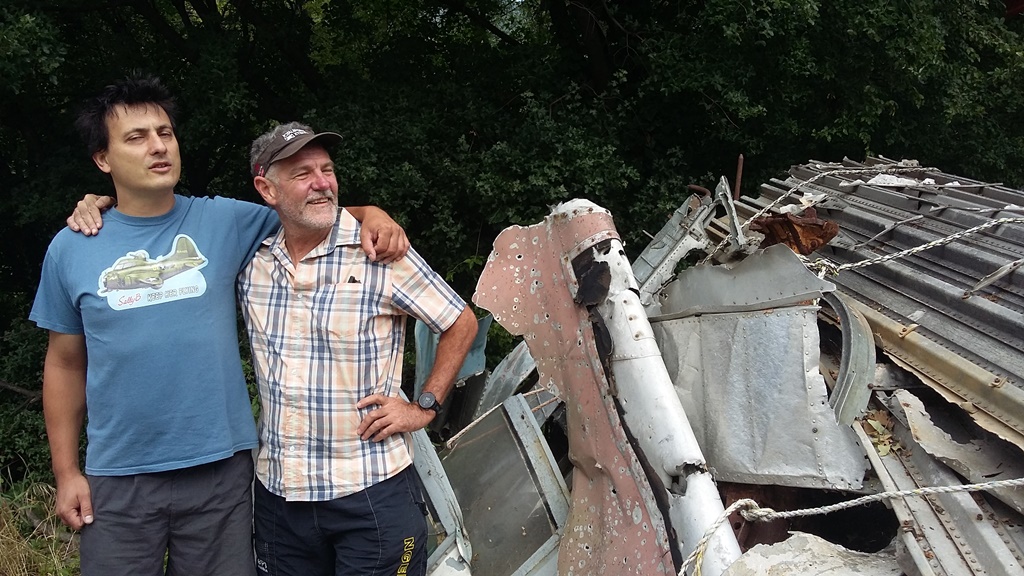

SAAF 2 sqdn Spitfire relics
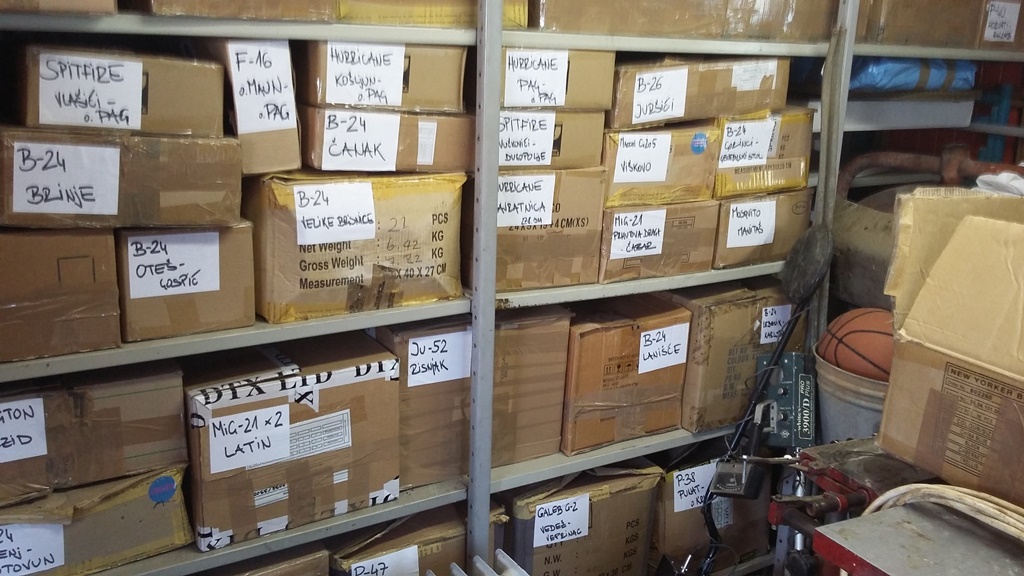
Relics boxed and marked
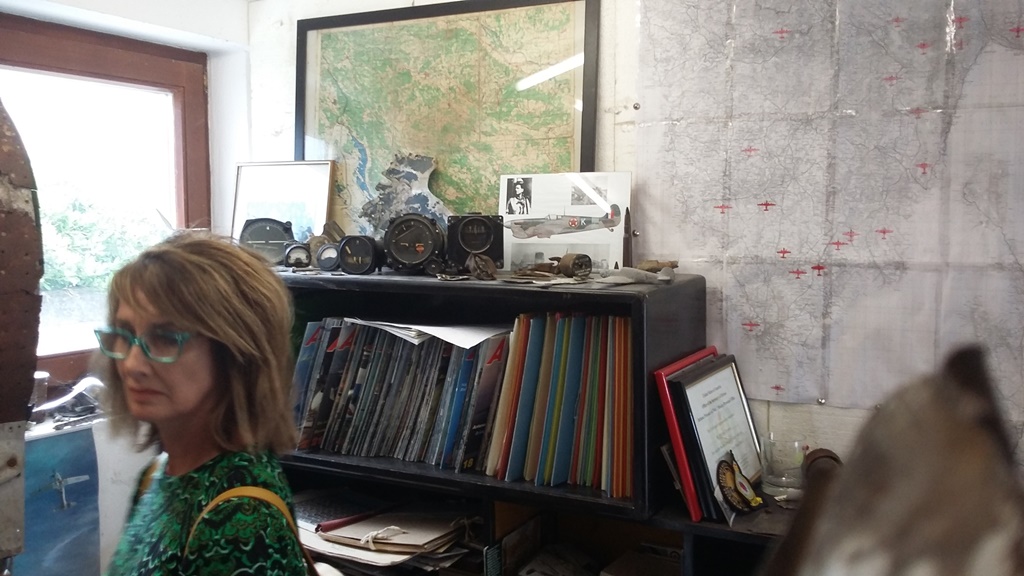
See the map where his discovered crash sites are marked
8 BRIJUNI
Brijuni is an island just off the coast at the beautiful town of PULA. Here both 16 and 19 squadron attacked the two hotels that believed to have stationed enemy troops.
We went on a great guided tour around the very interesting, island, most famous as it was the residence of Marshall Tito.
We visited both hotels, Hotel Karmen and Hotel Neptun-Istra and identified the exact spots of the attacks from the historical photographs.
We showed the photos to hotel staff on duty and they subsequently advanced the info to the museum people where I made contact afterwards and send them the high resolution photographs.
Click HERE to see the page on SAAF 16 &19 squadron attacks on the hotels in Brijuni.
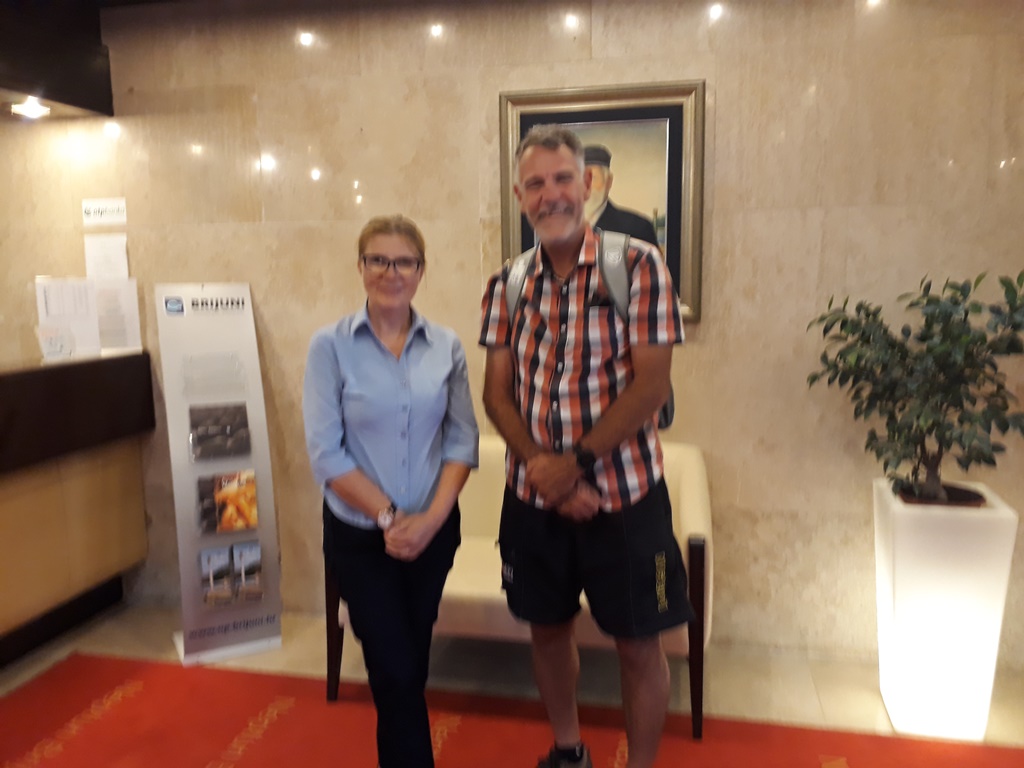
Hotel staff lady, Mirjana, who kindly helped us.
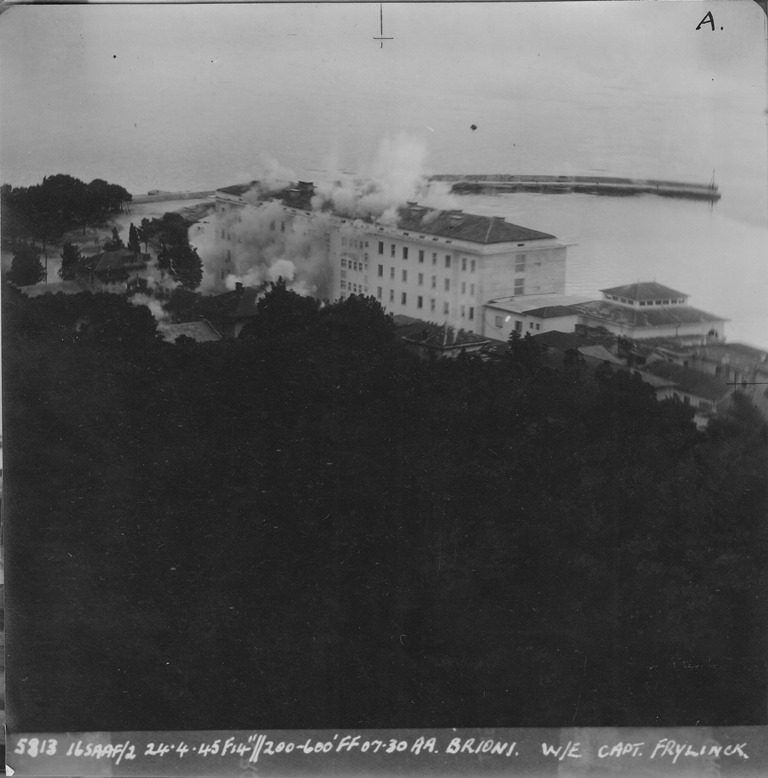
Hotel Karmen under attack
Hotel Karmen
Hotel Karmen showing the side that was attacked as on the historic photo

Hotel Neptun under attack
Hotel Neptun

Hotel Neptun damaged by the air attacks from photo displayed in the island's museum gallery

Side of the Neptun that was attacked on the historic photo
Village where the ferry departed
Hello MR. Tinus le Roux,
We would like to thank you for pictures you have sent us.
Sorry it took us so long to reply, but season is now in full swing, so we had
to wait a couple of days to get a response from Park management.
Pictures are amazing and are capturing very important part of island and
Croatian history.
If possible we would like to have them in higher resolution, also please, if
you could send us the information about the archives you have found them so we
can acknowledge it when we print them out.
You can send them to this email so we can forward them or you can write to zoran.cupic@gmail.com
Sincerely,
Reception hotel Neptun
National Park Brijuni
Thank you Mr Tinus!
The name of the lady on picture is Mirjana, and she's been working on the hotel reception for over 20 years.
My name is Zoran Čupić, i'm working temporarily on the reception of hotel
Neptun this season. I have master degree in history and usually I'm teaching in
high school. That's why I have special interest in photographs you were so kind
to send us.
I've sent photographs to the women responsible for perservence of cultural heritage on Brijuni island, her name is Mira Pavletić. Sadly i'm still waiting for response. Brijuni are directly under state ownership and in Croatia administration is notorius for being slow.
Thankfully this morning i was able to show them to the director of tehnical services (basically second person in carge of National park), he was impressed and promised to contact Mrs. Mira Pavletić himself.
As for the reason of bombing; From 1936. Brijuni were under ownership of Italian Ministry of finance. During second world until the capitulation of Italy the Island was base of marine-military academia. After capitulation of Italy German army tried to occupy most of the coast, as the war on Italian soil was almost over. Brijuni were used as naval base for ships and submarines, so it was an important military target. First bombing of Pula started more than a year earlier on 9th of January 1944.
Explaning the reason why allied forces were bombing Brijuni so late in the war it's a bit complicated.
I've seen you are familiar with Partisan movement under Marshall Tito. It was long into the war until movement was recognized internationally as opposition of Axis powers (supported by Croatian goverment in Zagreb). As the war was ending there were no certainty of what would be the borders of the future state of Yugoslavia once Partisan movement triumphed. After liberating town of Rijeka, second largest Croatian city, in North-east corner of Istrian peninsula. Tito decided to march his army to Italian town of Trieste. North west corner of Istria. Althogh, Trieste was never in any part included in any combination of Slavic states, nonetheless position of liberator of Trieste (Italian's call it occupation) gave Tito good position in negotiation's about Istria. After the war Istria was connected to Croatia and in that way entered Yugoslavia, and Trieste was returned to Italy.
Trieste was "liberated" at the end of April, and Croatian capital Zagreb was liberated in mid May just to give you clues of timeline.
Hopefully I've managed to explain at least the basis of conflict happening in Istria during that period.
If you need any more information or have any more questions feel free to ask.
Sincerely
Zoran Čupić
9 POREC
In August 1944 16 squadron flew two sorties to the coastal town of Porec and attacked an Italian Freight ship SS "Cagliari". During this attack two Beaufighters were shot down with the loss of two lives.
We visited the exact spot where the ship was moored and also presented the historical attack photographs to the manager of the Palazzo hotel that was also damaged during these attacks.
Click HERE to see the page on SAAF 16 squadron attacks on the SS "Cagliari" in Porec.
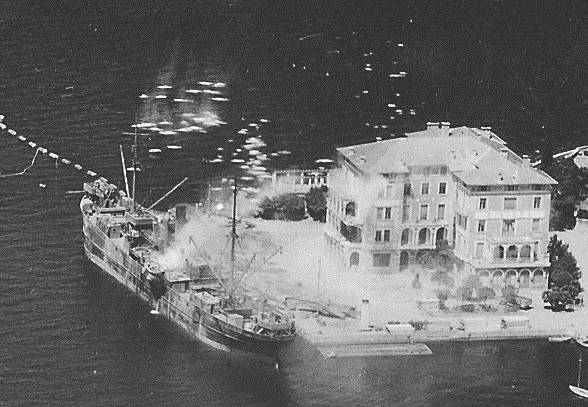
SS "Cagliari" under attack

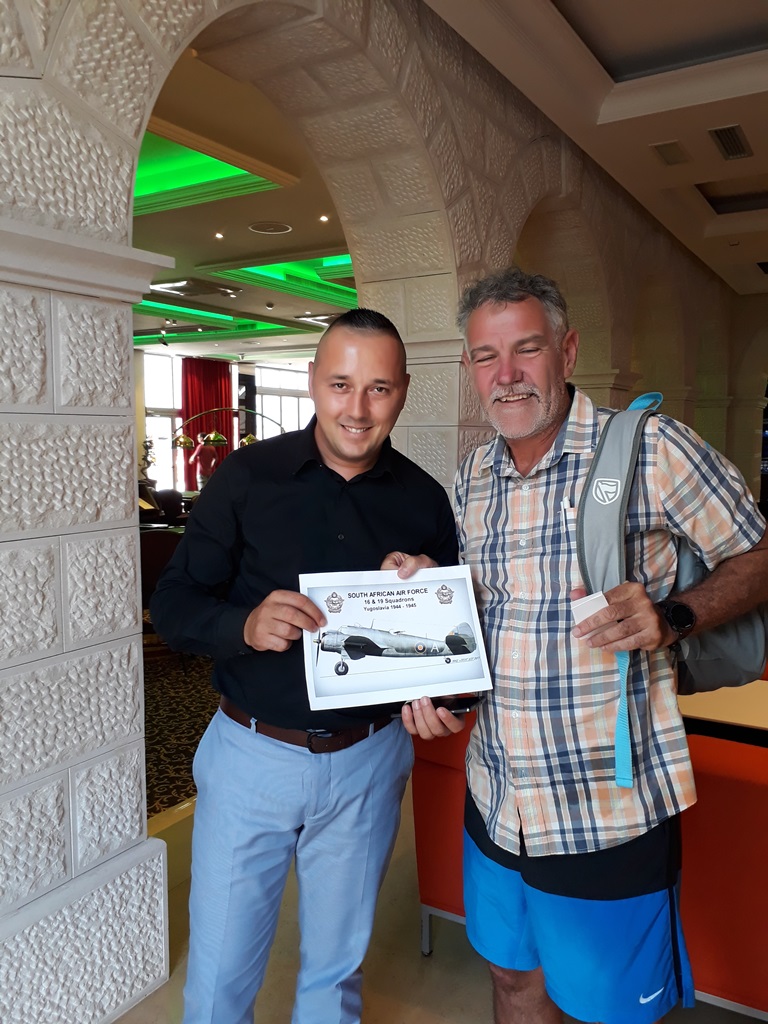
Manager of the Palazzo hotel: Nikola Vukdedovic
10 POSTOJNA
Postojna was the first village we visited in the beautiful Slovenia.
Postojna was attacked several times by 16 and 19 squadrons. 3 Targets were attacked: rolling stock, centre of city and the military barracks.
We visited the information bureau were the lady on duty directed us to the museum. At the museum we were received a most kind reception by the curator and we showed her the strike photographs. Much interest and appreciation was experienced.
We also visited the church as it was prominent on the strike photographs.
Click HERE to see the page on SAAF 16 &19 squadron attacks on Postojna.
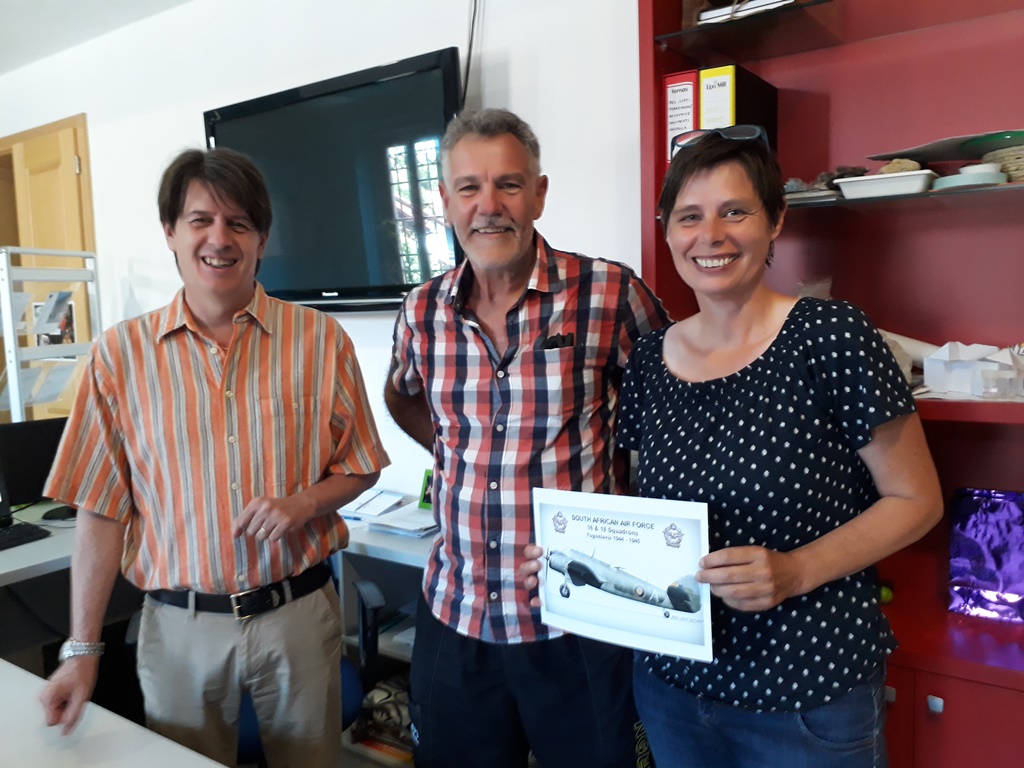
With curator Alenka and ? at the museum in Postojna.
Dear Tinus,
Thank you for your kind an »rich« letter. Yes, please, when you'll have time, send me photos in bigger resolution.
At the moment (and in next two months) I'm occupied with the book for museum 70th anniversary. But later on, I'll check my files, do some new researches and try to send as much information as possible. You must know, that the WWII is not a theme, that I was dealing with.
I',m glad, that you enojed visiting Postojna, and yes, come again in our museum.
Thank you!
With best wishes, Alenka
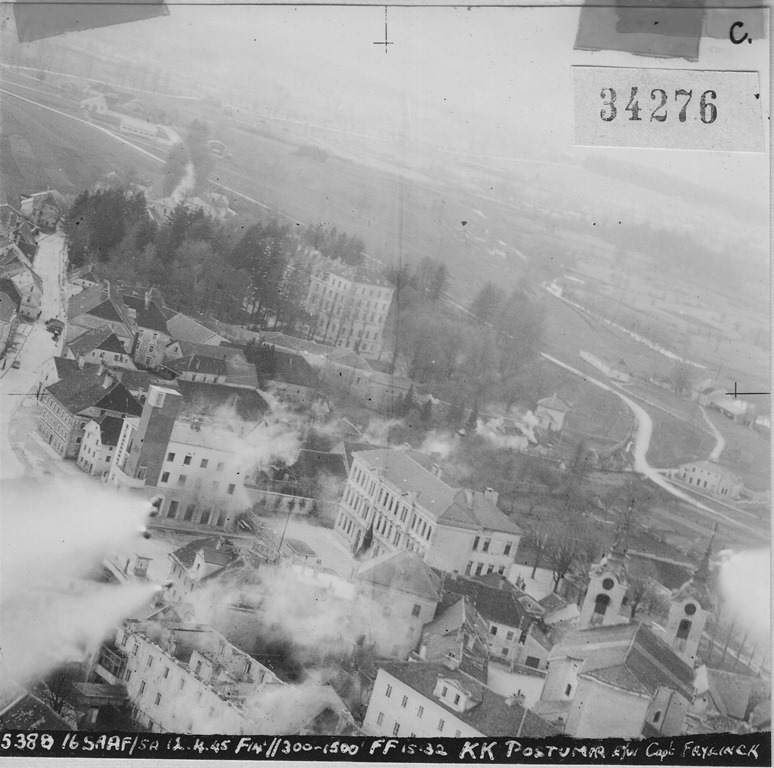
Main building of the village under attack with the church on right hand corner.
Main building today
The beautiful church today
11 COL
We met Ivan Rudolf who awaited our arrival at the tiny village of Col, high up in the mountains. Ivan, now 80, was a young boy when he experienced 3 of the 11 attacks in 1945 by SAAF Beaufighters before his family moved away to a safe place.
Ivan showed us their house that was destroyed in 1945. He also told us how his dad removed an unexploded RP-3 rocket that went underneath the house and how angry the family was with him doing such an irresponsible act.
Ivan took us for a short tour around the village showing us the different buildings including the old school he attended. They had Italian teachers and were not allowed to speak Slovenian. If caught they were punished.
He showed us a battle damaged house caused by SAAF 20mm canon, never repaired. Also the beautiful old church that escaped damage by the South Africans.
Ivan then took me and Tersia for a lovely lunch in the only restaurant in town, Costelina-Tratnik. He explained that the very same restaurant was hit in the first SAAF attack, killing Germans that was inside.
We were then joined by Luco Trost, keen local WW2 Partisan history enthusiast. He presented me with a small wooden box with a 20mm shell casing and exploded projectile (picked up at Col) as memento of our friendship, coming on for some time via internet.
Click HERE to see the page on SAAF 16 &19 squadron attacks on Col.
Here a thank-you email from Ivan:
Dear Tinus,
Thank you very much for your mail, map of your visits and lovely photos. I am delighted we met, talked at length about old times (for me) and dramatic raids of your brave country men in such remote places for them. I admire your work on this part of the WW II history though just a tiny part of the war but a very emotional for me. As I told you during our meeting, discovering details about the raids on Col after 72 years, seeing my home and the village in smoke was the discovery of great and particular emotions. Thank you, Tinus, for enabling me to get back to part of my early life.
I am happy you enjoyed your travel through Slovenia and Croatia and I hope you will come again to see your new friends.
Let’s stay in touch.
Best wishes and regards to Natasha and you,
Ivan

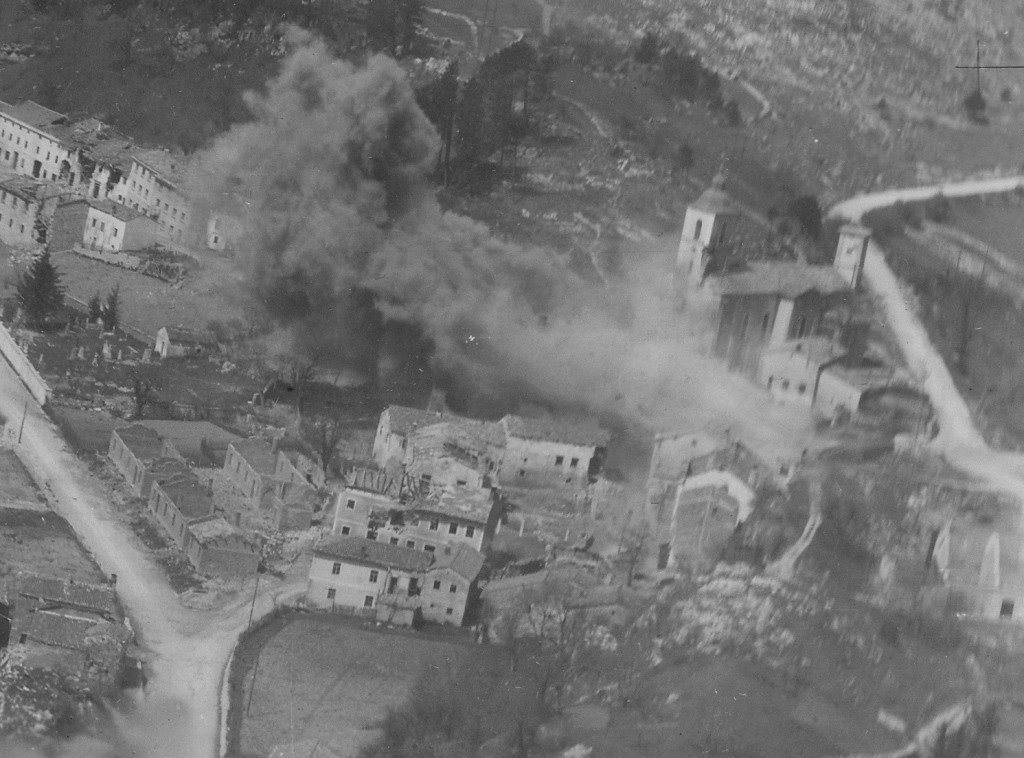
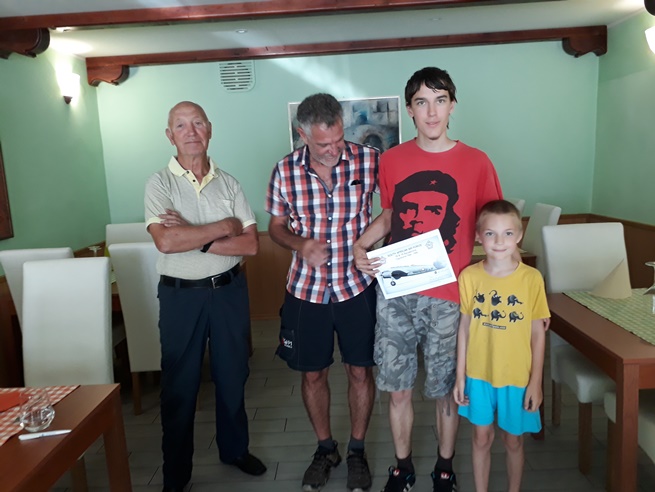
In the restaurant with Ivan, And Luco's son holding a print of a SAAF Beaufighter,
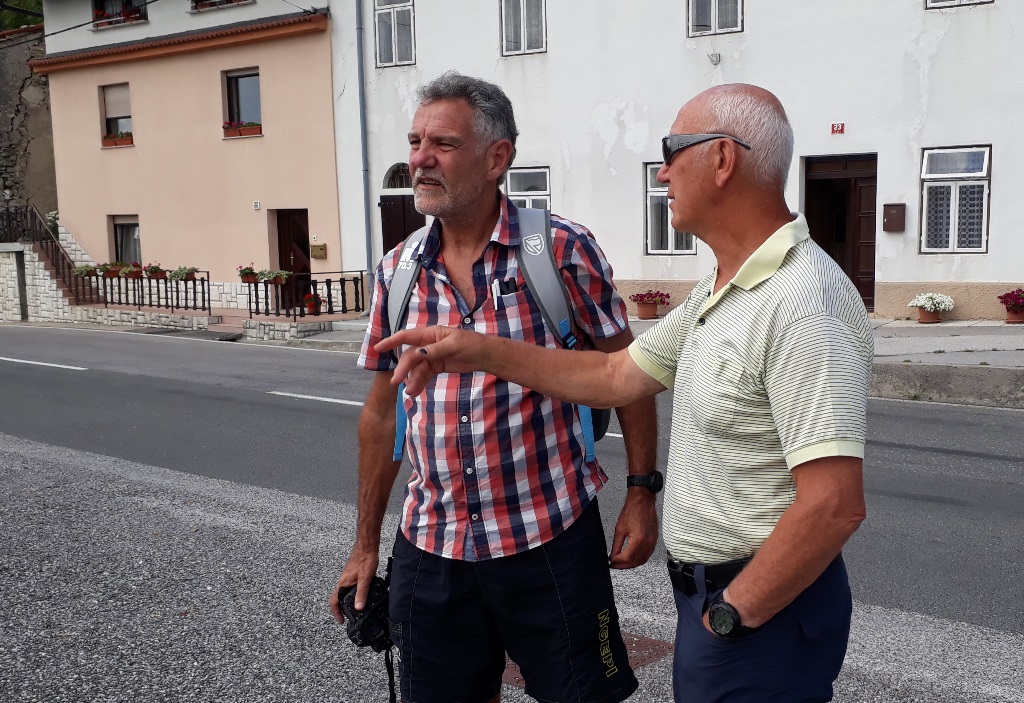
with Ivan

A building still with the scars of war never been repaired. Belong to Italian owner not interested to renovate the building.
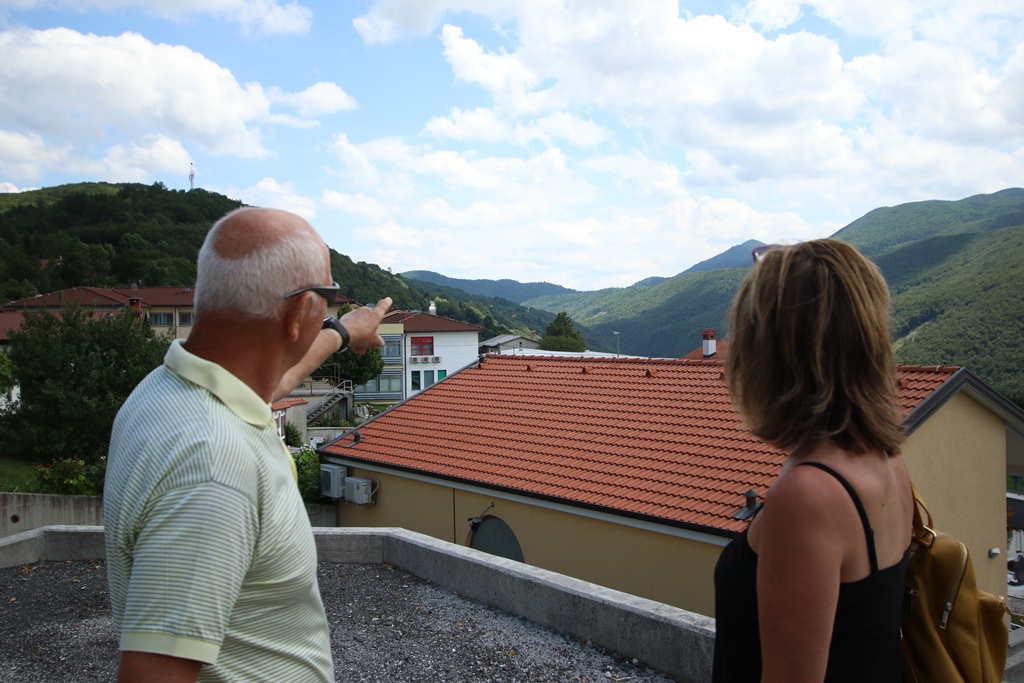
Ivan shows Tersia where the Beaufighters came from as remembered since childhood.
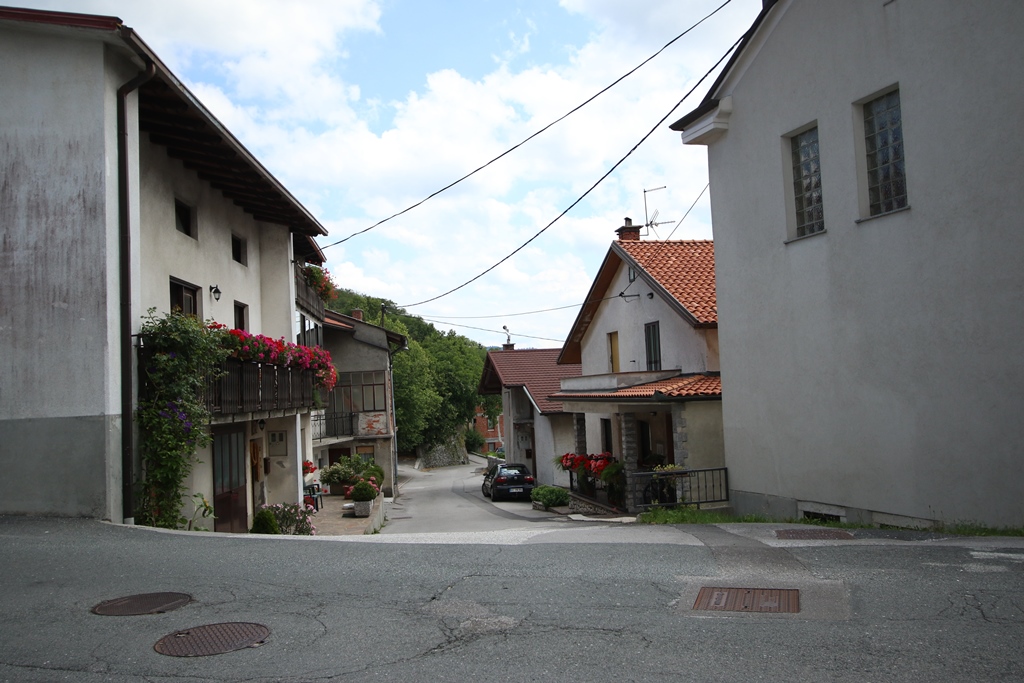
House on the right where Ivan grew up as child, severely damaged during the SAAF attacks.
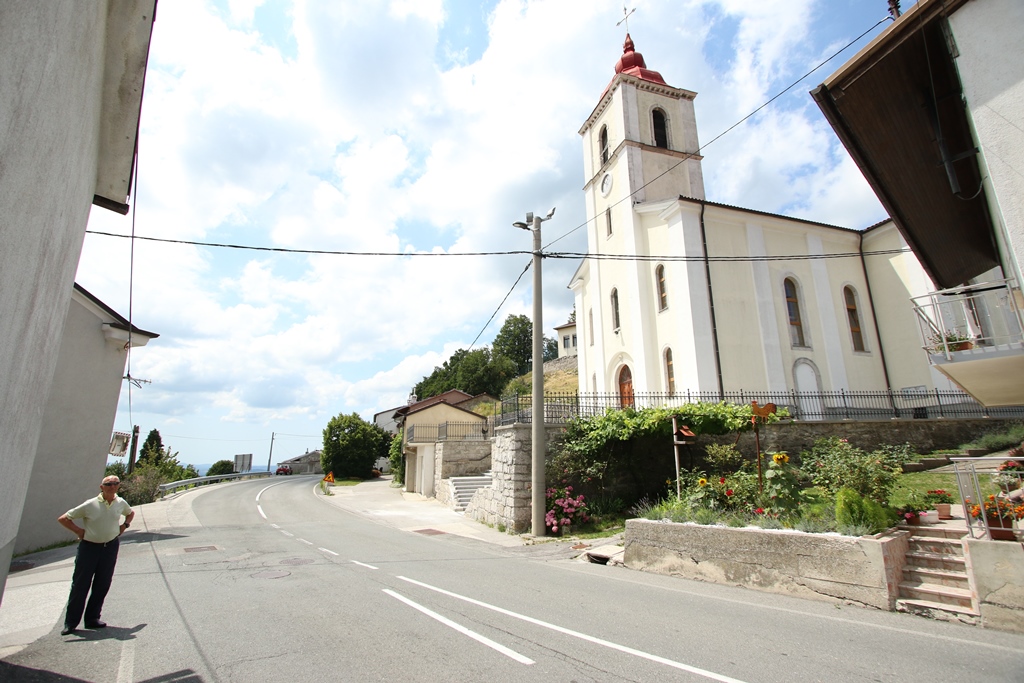
Church on the right, not much damaged during the attack.
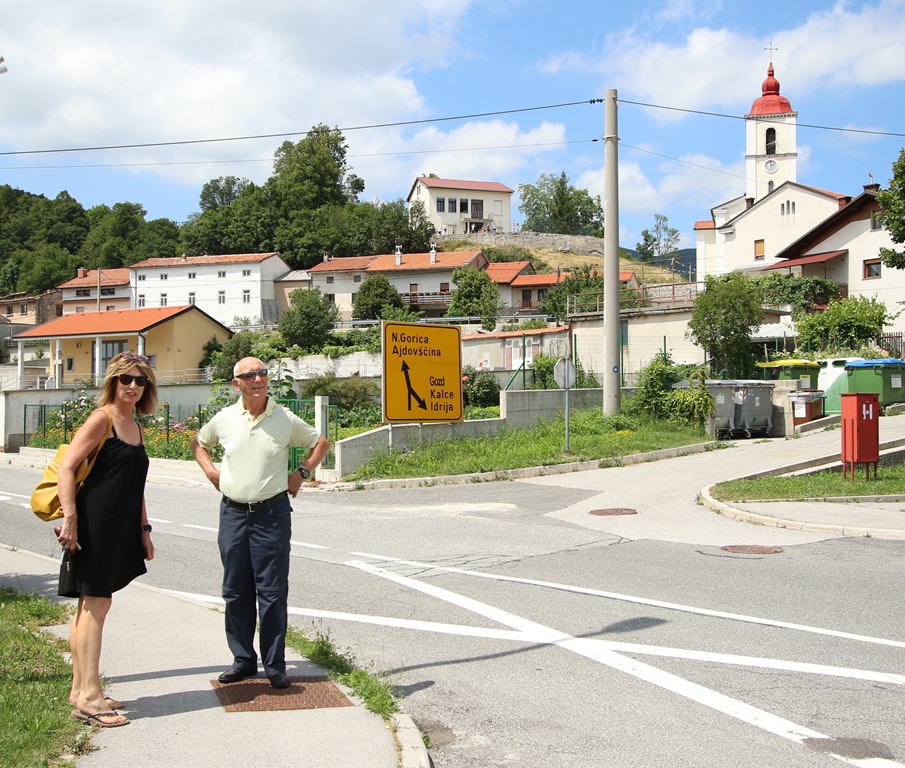
Tersia and Ivan
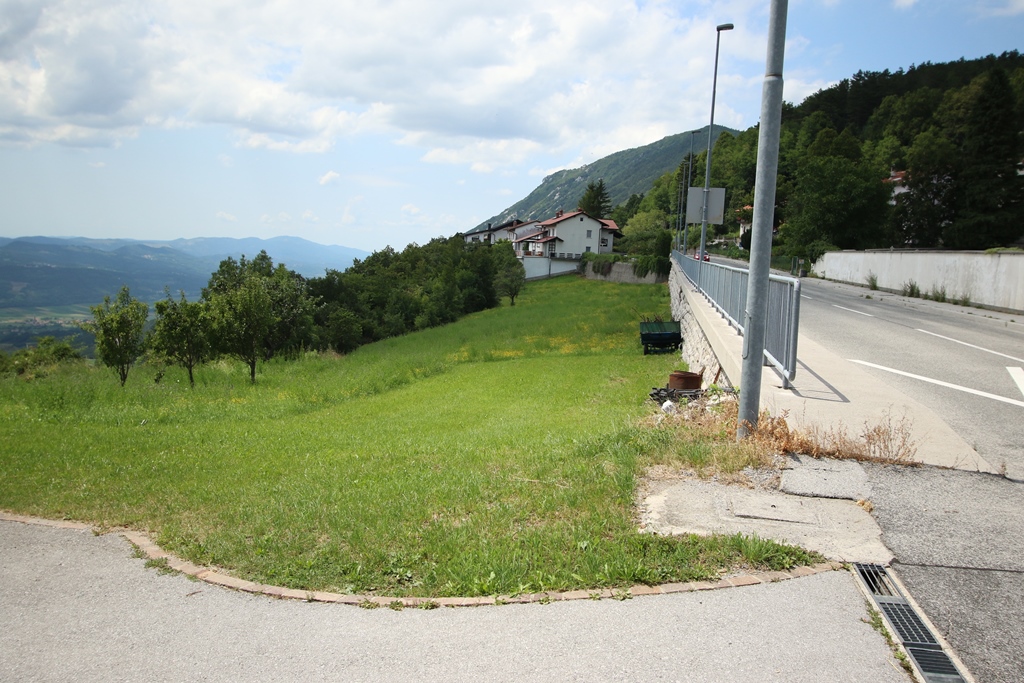
This is the open space where the horses ran seen on one of the strike photographs.
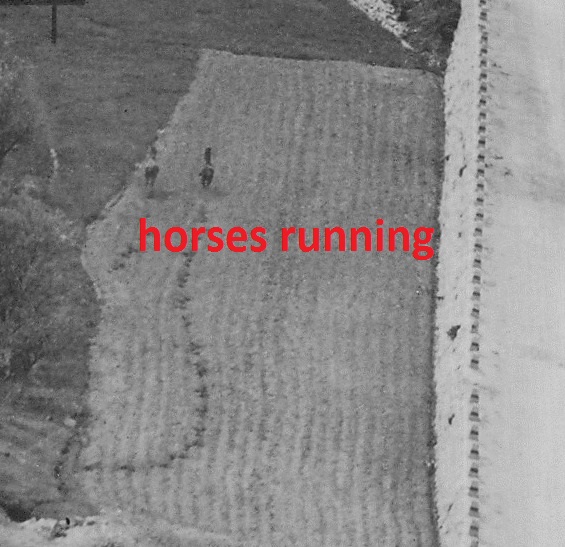
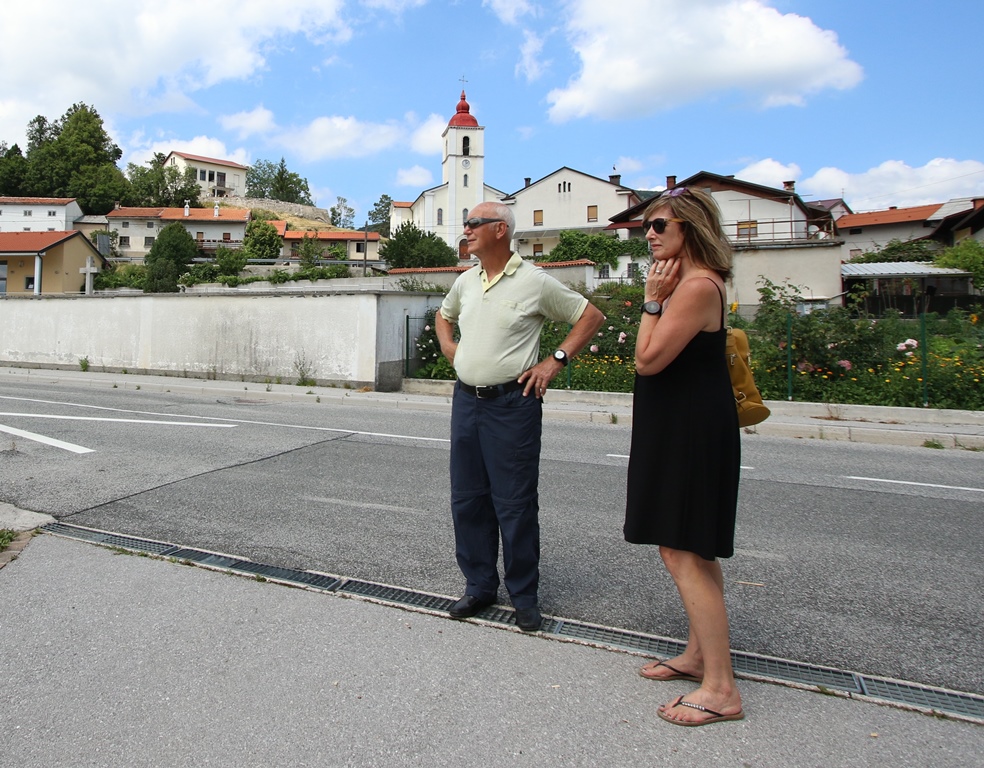
Ivan and Tersia
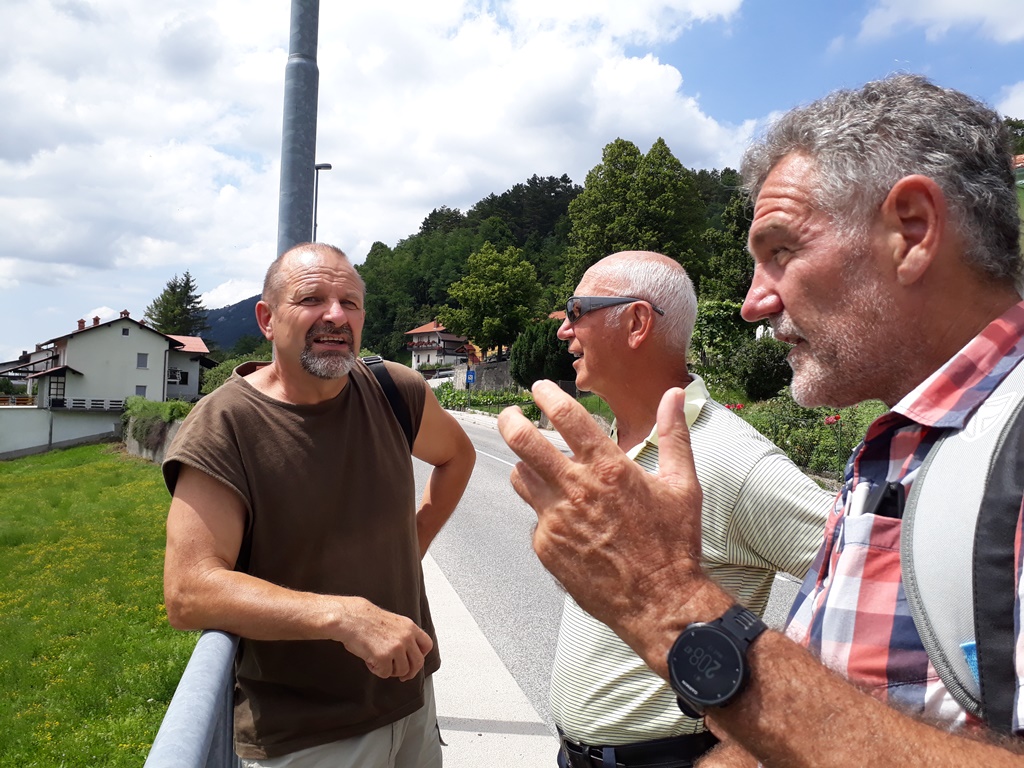
Luco and Ivan
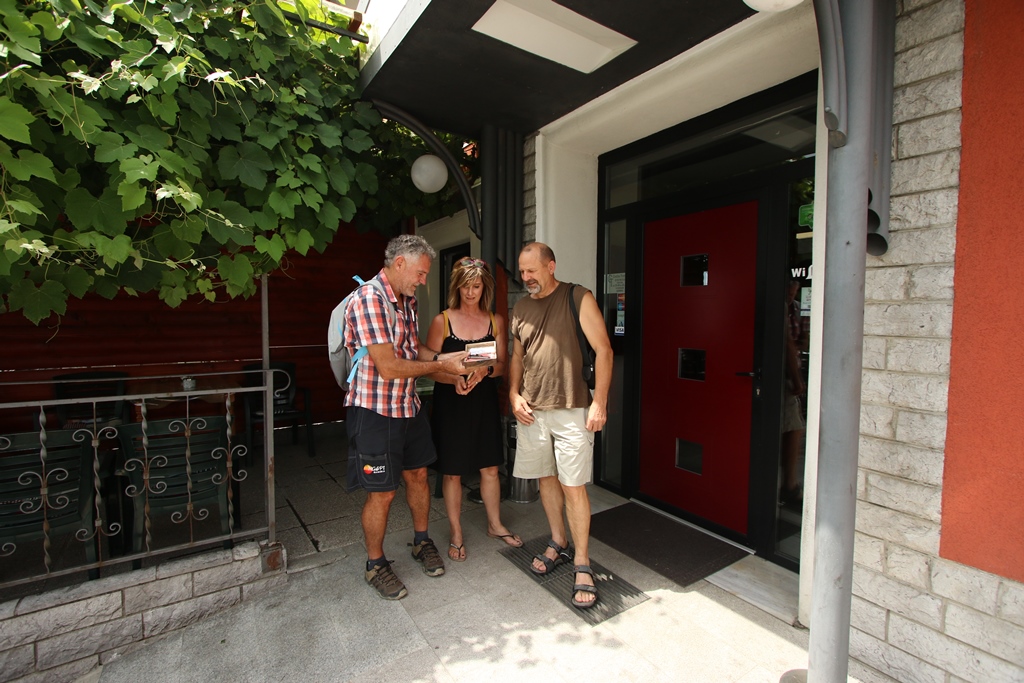
Tersia and Luco with a gift of relics given to me at the restaurant entrance
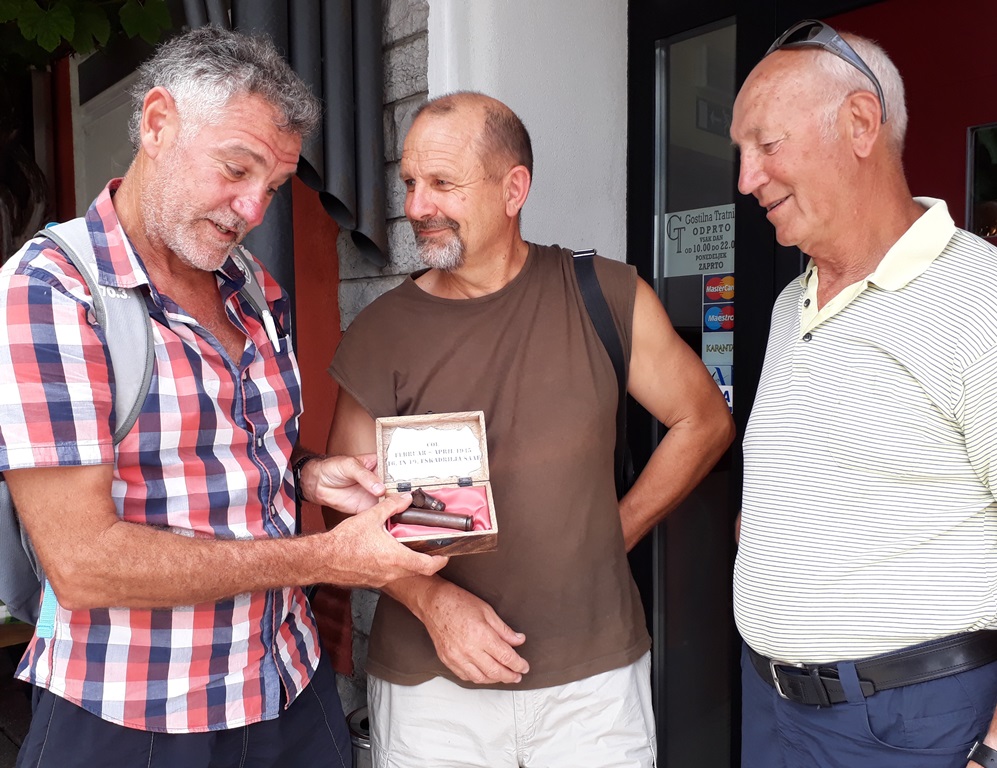
Luco and Ivan with the wonderful present given to me
11 TRNOVO
The small village of Trnovo was attcked by 16 squadron in March 1945.
Tersia and me found local residents in the village shop and we showed them the attack photographs on Trnovo. The lady we spoke had some knowledge of that history and told us the village was already evacuated when the attacks occurred.
We visited the church and cemetery that are visible on the attack photographs.
Click HERE to see the page on SAAF 16 squadron attacks to Trnovo.
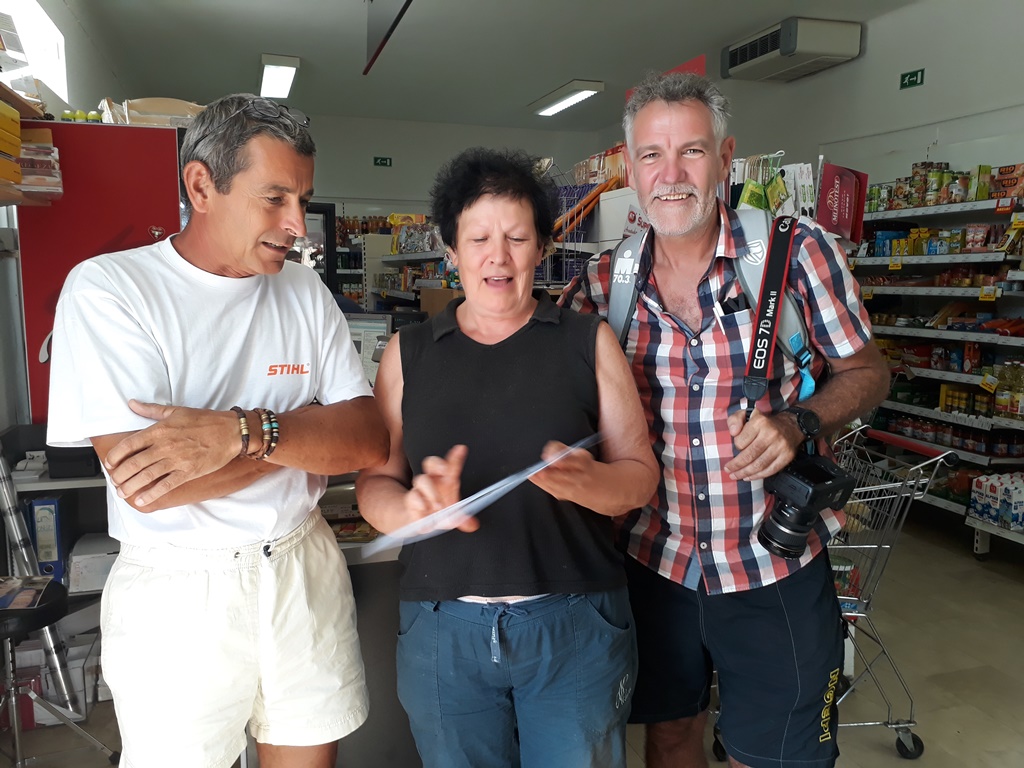
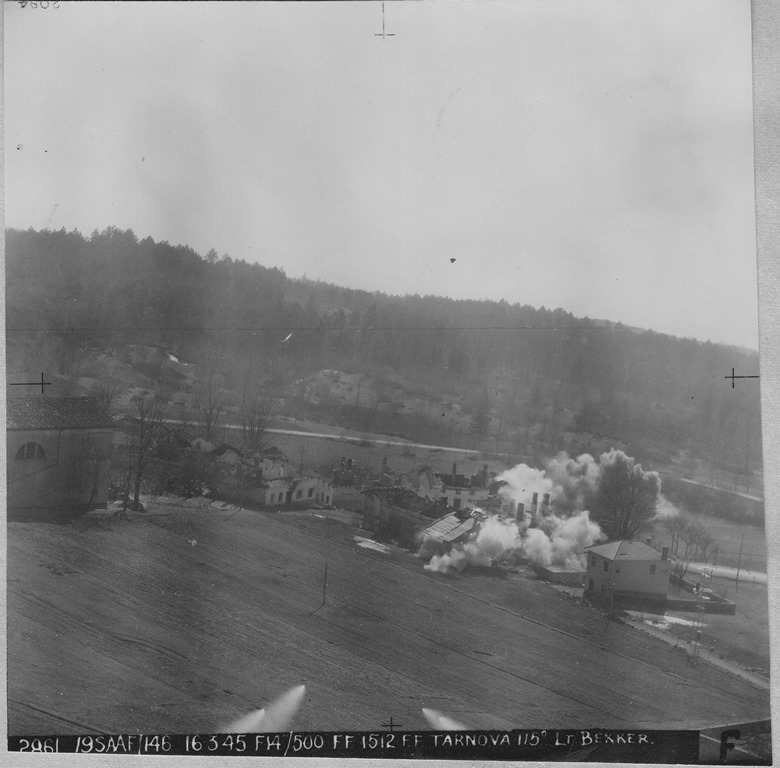
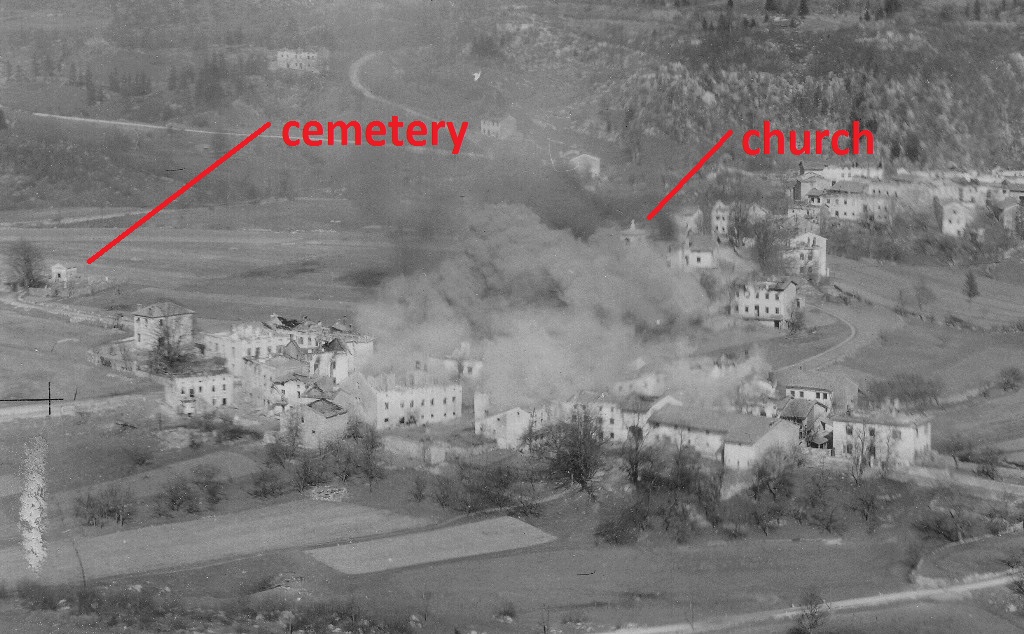
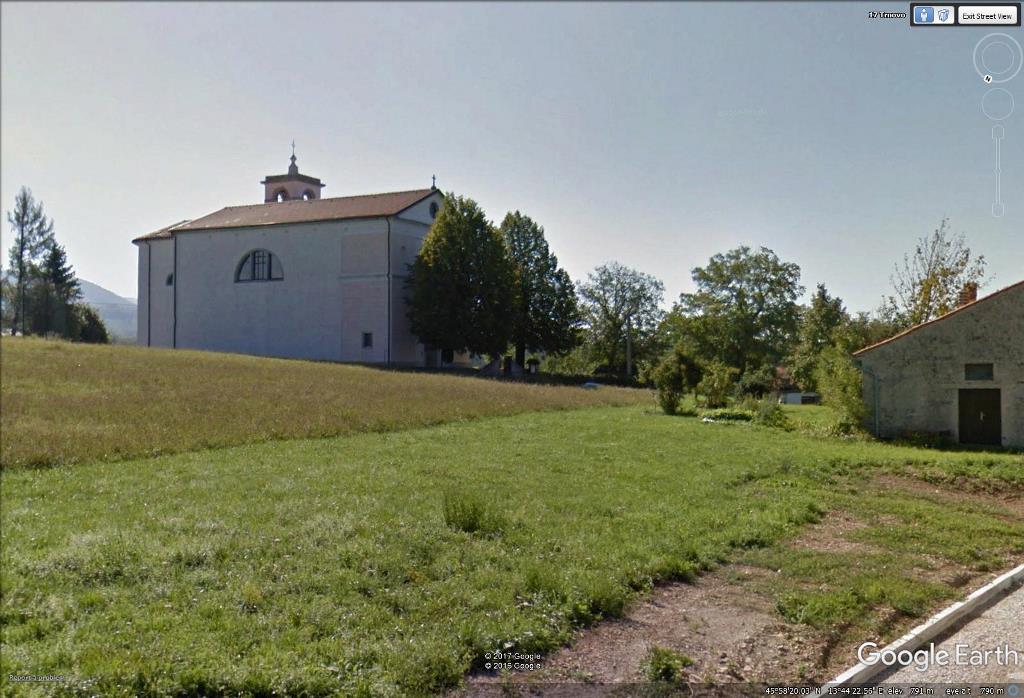
Church
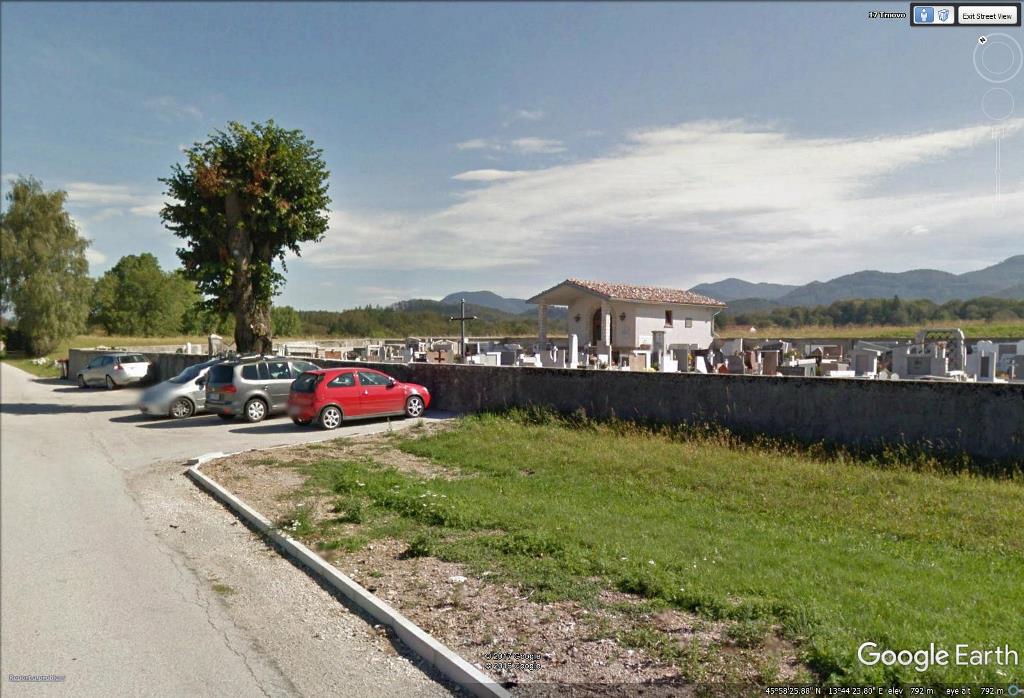
Cemetary
Church from the cemetery and our car
Hi!
First excuse me for so late answer. Tanks for fotos. I passed your e-mail to historian Aleksandra Milost from Regional Archive Nova Gorica. She is interested of those fotos.
If it possible I'm interested of the high resolution photografs you sent me before.
Best regards
Nives and my neighbour Dušan
Dear Mr le Roux,
Mrs Nives Volk has informed us about the photographs you had shown her last year. Our institution Pokrajinski arhiv v Novi Gorici (the regional archives) takes care of the archival heritage of the northwestern Slovenia. The town of Trnovo and its surroundings are part of this region.
Your letter to Mrs Volk has been forwarded to us but unfortunately we could not open the photos you added; of course the photographic heritage of our region is of great interest to us, so we would be grateful if you could resend those photos (and any additional material you might have) directly to our email address pa-ng@pa-g.si
It is our understanding that this material belongs to SAFF Museum. We were wondering; is the Museum in possession of the originals or does it keep digital copies only?
Regardless, we would be very grateful to recieve any information about photographic material taken in this or any other part of Slovenia.
Yours sincerely
Metka Nusdorfer Vuksanović
~~~~~~~~~~~~~~~~~~~~~~~~~~~~~~~~~~
POKRAJINSKI ARHIV V NOVI GORICI
~~~~~~~~~~~~~~~~~~~~~~~~~~~~~~~~~~
Trg Edvarda Kardelja 3, 5000 Nova Gorica
Tel.: 335 87 66, GSM: 040 464 233
Faks: 302 77 38
E-pošta: metka.vuksanovic@pa-ng.si
Spletna stran: http://www.pa-ng.si
12 VIPAVA
We just drove through the village of Vipava and identified the huge buildings as seen on the 16 sqdn recce photograph of 1945. Took no photographs.
Click HERE to see the page on SAAF 16 squadron recce flight to Vipava.
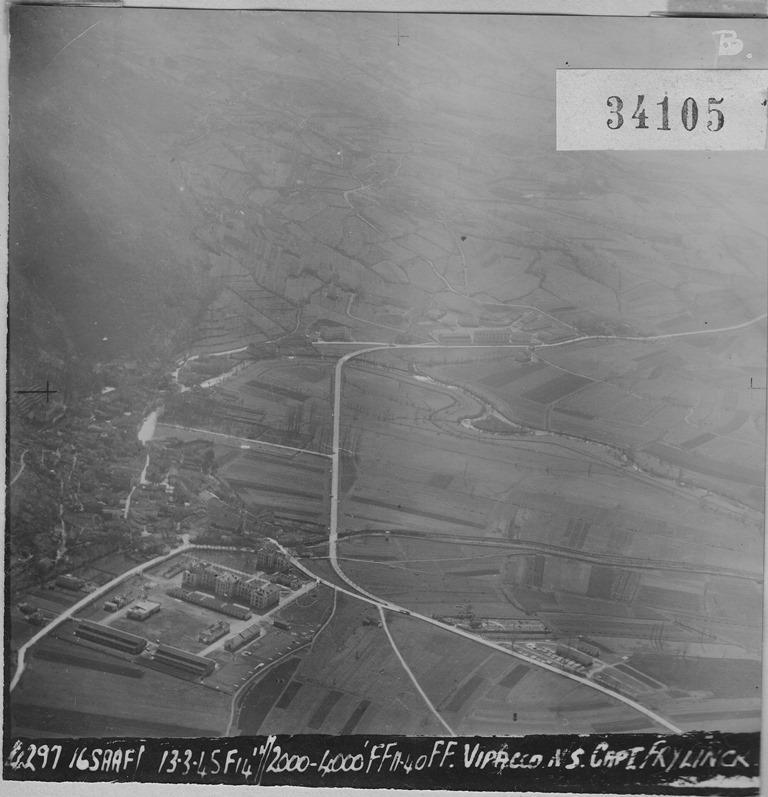
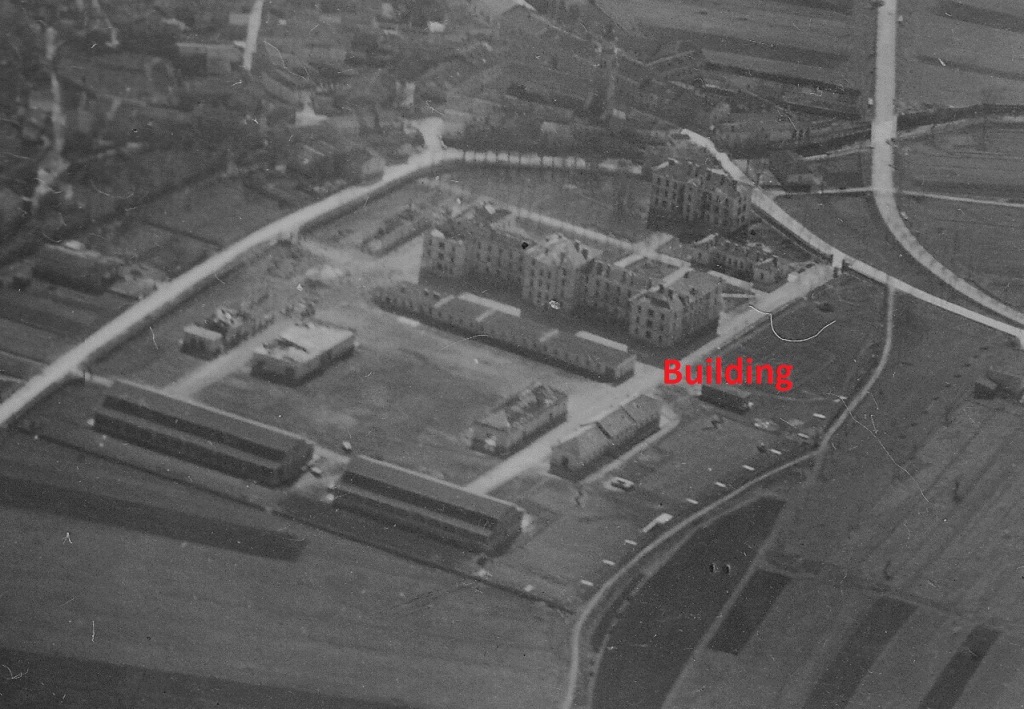
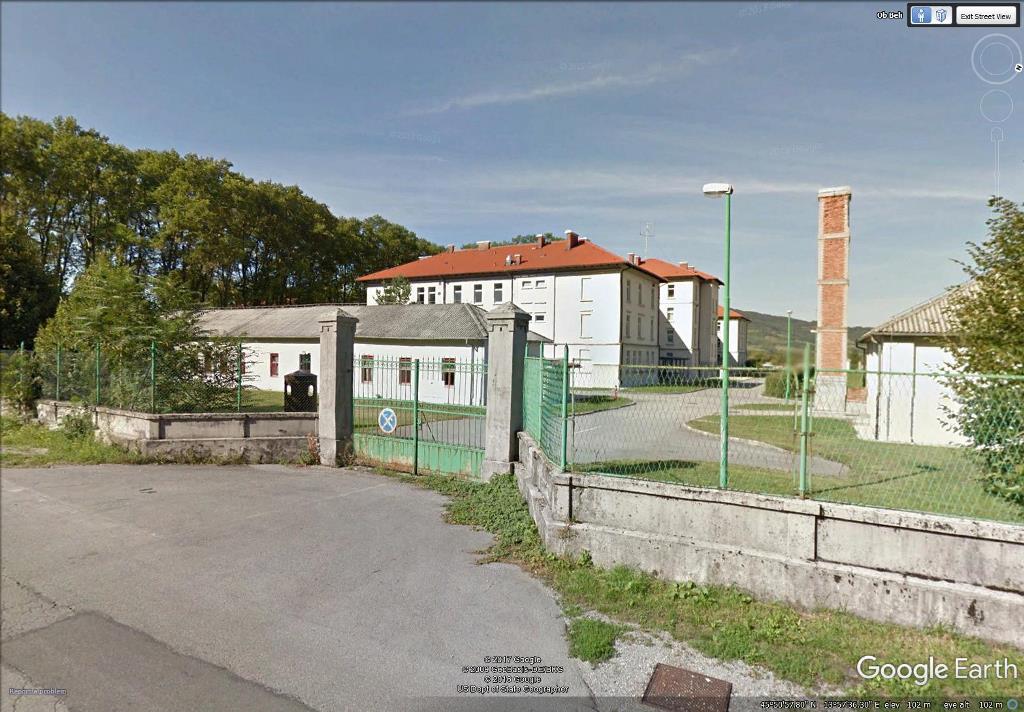
13 KANAL
Absolute beautiful little village on the river Soci. We stopped and had a nice cup of coffee after we had a look to the bridge and church that also appear on the strike photograph of 19 squadron.
Click HERE to see the page on SAAF 19 squadron attacks on Kanal.
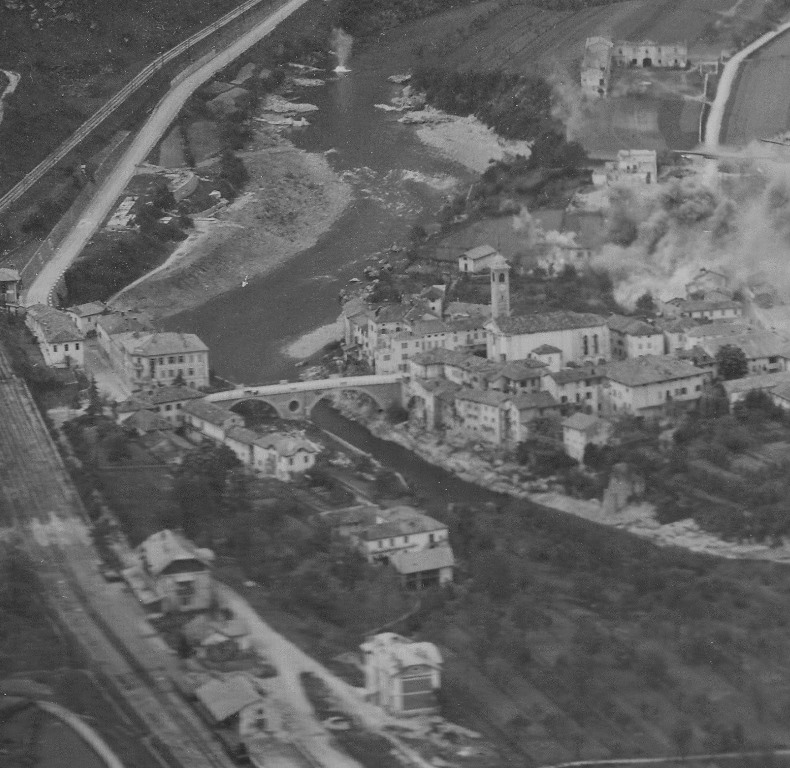
Tersia having a drink with the beautiful church in the back ground.
The bridge crossing the river to the village.
14 MOST NA SOCI
We just drove through this picturesque village but did not stop as we were pressed for time to reach our sleeping place! We saw the church though as in the strike photo.
Click HERE to see the page on SAAF 19 squadron attacks on Most na Soci.
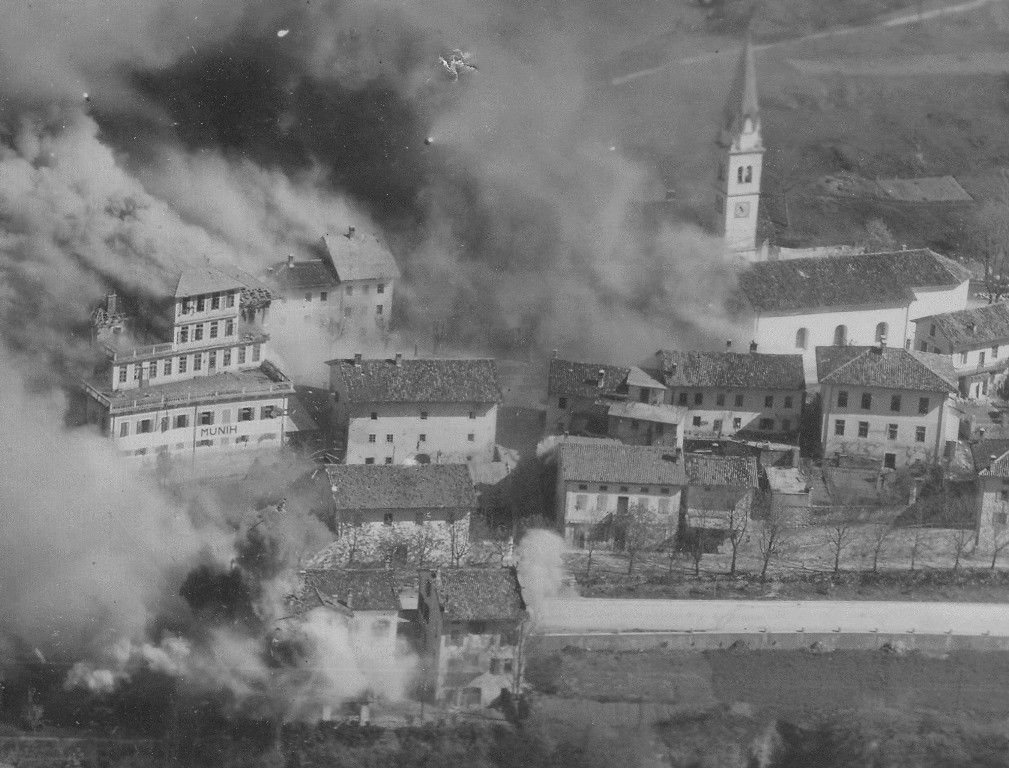
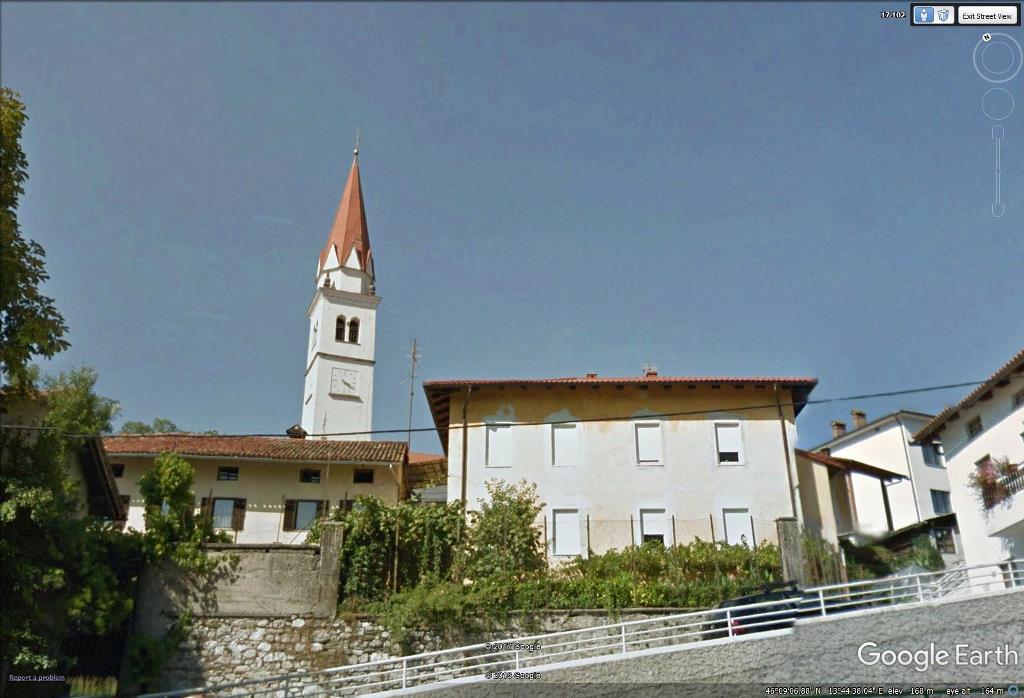
15 BACA PRI MODREJU
The railway bridge at Baca was attacked by 16 squadron in 1945. Spectacular strike photographs were captured.
We stayed at a guest house in Kneza, 5 Km from Baca, absolute pristine nature in the mountains.
Our hosts were Itzok Mrak and his wife and we ask them to hand over the digital photographs to historians and they did it. Our hosts at the guest house were wonderful and 100% to be recommended.
Subsequently a hole was found on top of the rail bridge that could only have been caused bu an unexploded RP 3 rocket fired from a SAAF Beuafighter.
Click HERE to see the page on SAAF 19 squadron attacks on Baca pri Modreju
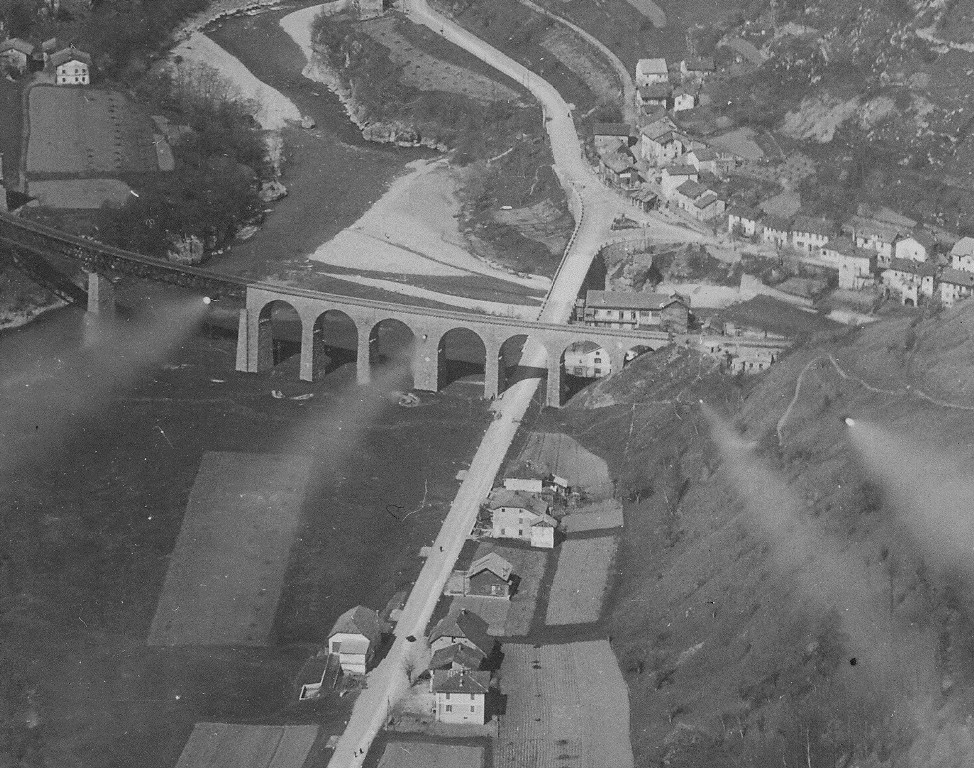

Itzok, his wife and Tersia at their guest house in Kneza
dear Tinus and Tersia thank you for histricle photos.I wil found the people for this material we will be in touch if we will need some explantion we enjoy in your company thank you for all welcome again.
Itzok Mrak
Dear Sir,
I am writing in relation to old photos from your collection, which were kindly sent to my address from the Mrak family, Kneža/Slovenia. I was really excited when looking at them, since I haven’t seen anything similar yet. Thank you for sharing them.
I also have some further questions in connection with the photos, and it would be of great pleasure if answered.
1. The photos show moments of bombing some places of our region during the World War II. I wonder if any of the photos could be published, since I’m just working on an exhibition relating the after-war period 1945-1947. The exhibition will be on display in the Museum in Tolmin (Tolminski muzej) from the end of September 2017.
In case you give us permission, it would be of great help to get some more information about the photos and their contents (who was bombing, where did the aircraft fly from, etc.). It is also of great importance for us to get information about the source and authorship.
2. Is it allowed to permanently store the uploaded photos in the Museum’s photo archive? An obligatory reference to sender will be done, of course.
3. Perhaps you own some more historical material in your collection, which would be of our interest? For example, other old photos or postcards referring the Upper Soča Valley. Photos of some other places, which have had historical connections with our region, would also be welcome. Have you maybe got some photos of military bases of Allied-forces in Sardinia, Corsica, or southern France, where special military working-units (consisting of soldiers from our region, too) were working after the capitulation of Italy?
I look forward to hearing from you.
Yours faithfully,
Karla Kofol, curator
Tolminski muzej
![]()
T: +386 (0)5 381 13 60
muzej@tol-muzej.si
www.tol-muzej.si
Dear Tinus,
I am grateful for your kind reply and permission to use photographs showing the
activity of the allied air forces in the Primorska region at the end of the
WW2. I have already included two of them in our occasional exhibition (http://www.tol-muzej.si/?id=475&lang=si),
and at least one will find place in the exhibition catalog we are preparing.
With much interest I also checked out your web-pages, where, besides photos,
many other useful information was published. Great work! It’s a pleasure for me to forward the web-link to
other Slovenian museums, which are also studying this part of our history.
With best regards,
Karla Kofol
\Dear Mr le Roux,
my name is Anton Snoj and I am writing to you because I recieved the WW II photos you sent to Iztok Mlakar during your visit to Slovenia. He showed them to me because I am his daughters fiance and even more important in this case, because i am a historian. I have a BA in history and anthropology and am currently in the middle of working on my MA at the University in Ljubljana.
I admit i am not an expert on this subject, but I am very interested in the photos you sent and would be delighted if you could send me the reports you mentioned in your email to Iztok. I would also be interested in details on how you discovered these photographs. I was fascinated when i realised that the bombing was an SAAF operation. Honestly, I had no idea that they were operational in this area, so i did a little preliminary research and in the process discovered your interesting SAAF heritage website as well. Do you by any chance also know who were the men who flew these missions?
I also wondered what kind of aircraft they flew and which air-to-surface missiles they used. Where they HVARs?
With your help and permission I would like to get this whole story to the attention of the public in Slovenia (through a museum or a similar institution). If there's something I can offer in return I would be happy to do so in any way that I can.
Sincerely,
Anton Snoj
Im from Bača pri Modreju .(Baccacia di Madrea). Mrak from Kneža sent your pictures to me, It's very interesting. I'm sending you pictures from the same location ,Then and now.
You can add images to a website if you want. (without my name, please)
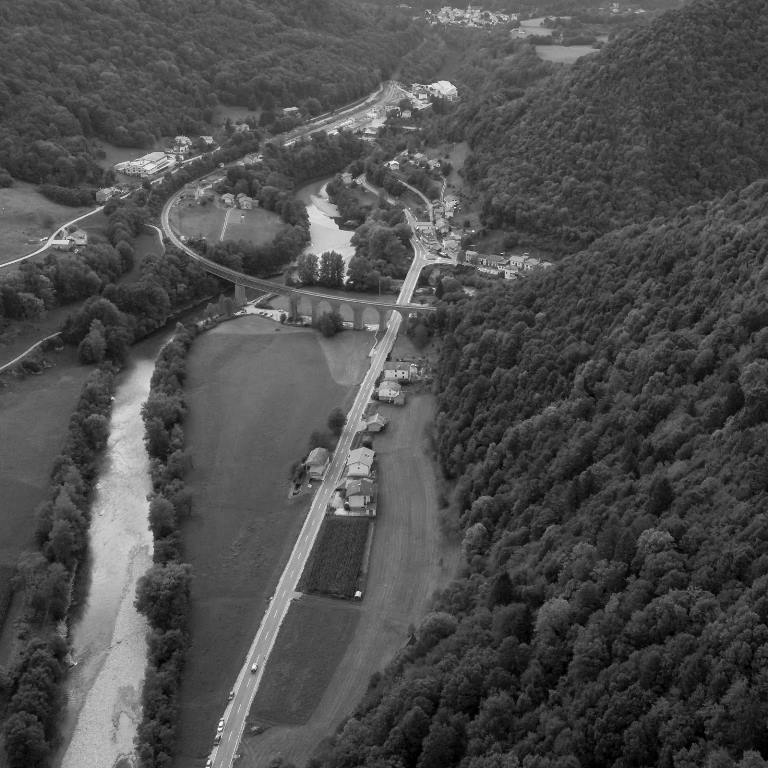
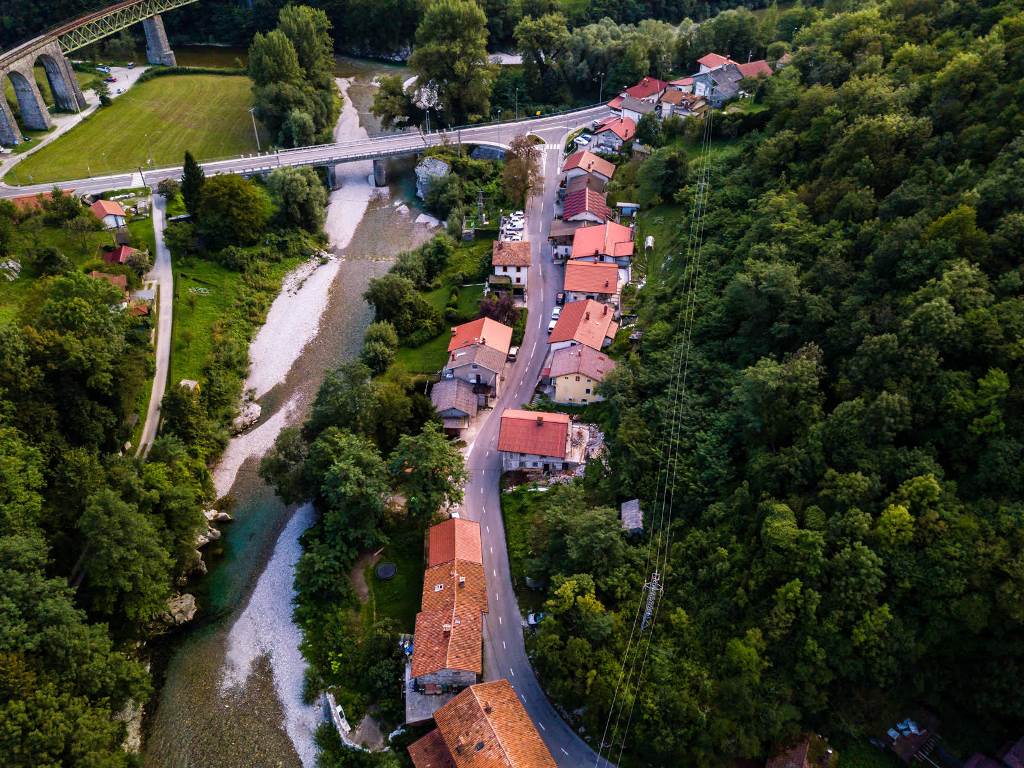
Greetings from Bača.
Railway workers told me about the damage to the railway bridge, probably from a plane attack. I found this hole today, so I send you some pictures. What do you think about this, is it possible?
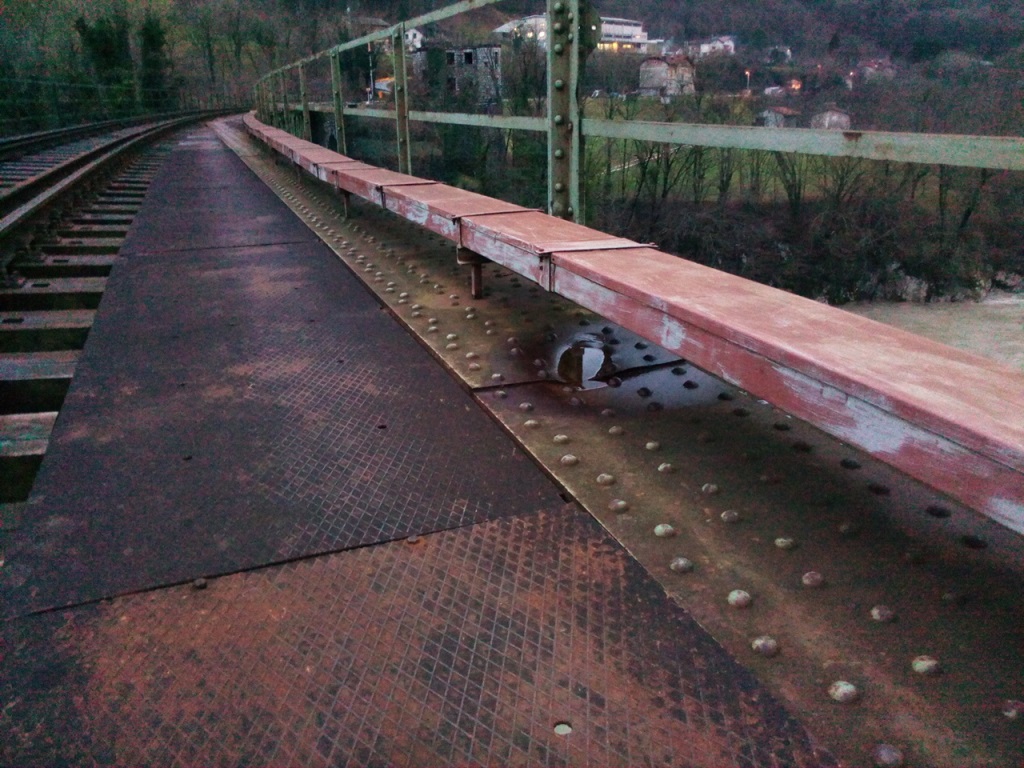
best regards
16 DOLENJA TREBUSA
Barracks were attacked here but we were in a hurry to get to Idrija and we just looked at the place as we drove past the bridge that goes over the river to the barracks.
Click HERE to see the page on SAAF 19 squadron attacks on Dolenja Trebusa.
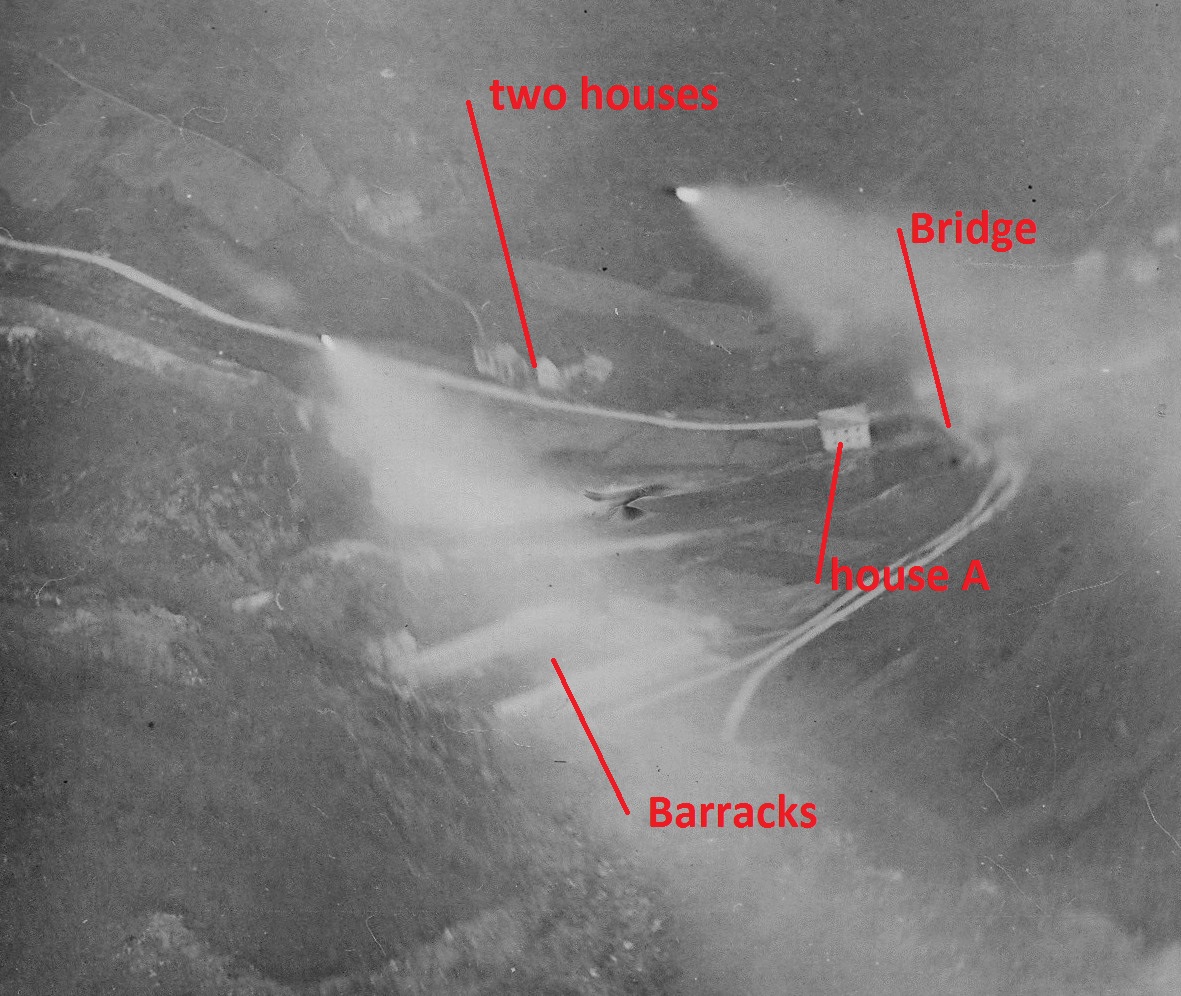

17 Idrija
Idria was also one of the most frequently attacked target in Yugoslavia by SAAF 16 and 19 squadrons. This was due to the strategic value of the mercury mine to the enemy war industry and also the concentration of German troops that was present at that time in the village.
Tersia and me arrived in Idrija at mid morning and we had a warm welcome from Tomaz, Dimitrij and Slavko (museum owner).
We first visited the museum where a special section was constructed to commemorate the SAAF attacks on the enemy positions. Slavko did a super job with this display.
They then showed us a documentary film that they produced on the SAAF attacks. This documentary won a special local cultural award.
We went on a walk-about and a drive around the village where we were shown targets that were attacked.
They presented to me and Tersis gifts that include an engraved 50 cal Browning round, set of framed partisan war medals, lacework and a certificate, most impressive!
We then had a lovely lunch at a restaurant with super cuisine.
Many many thanks to Tomaz, Dimitrij and Slavko for a most memorable visit!
Click HERE to see the page on SAAF 19 &16 squadron attacks on Idrija.

Castle Gewerkenegg attacked by SAAF: Slavko, Dimitrij, Tersia
Tomaz point to one impact position of a Rp 3 rocket
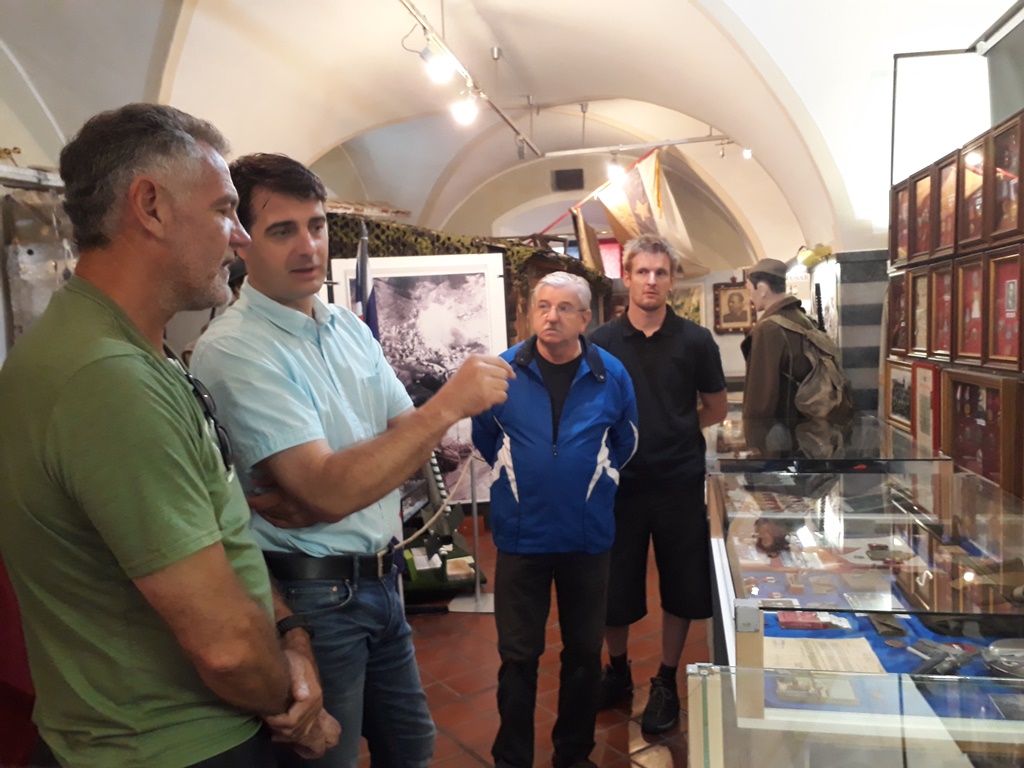
In the museum: Dimitrij do some explanations
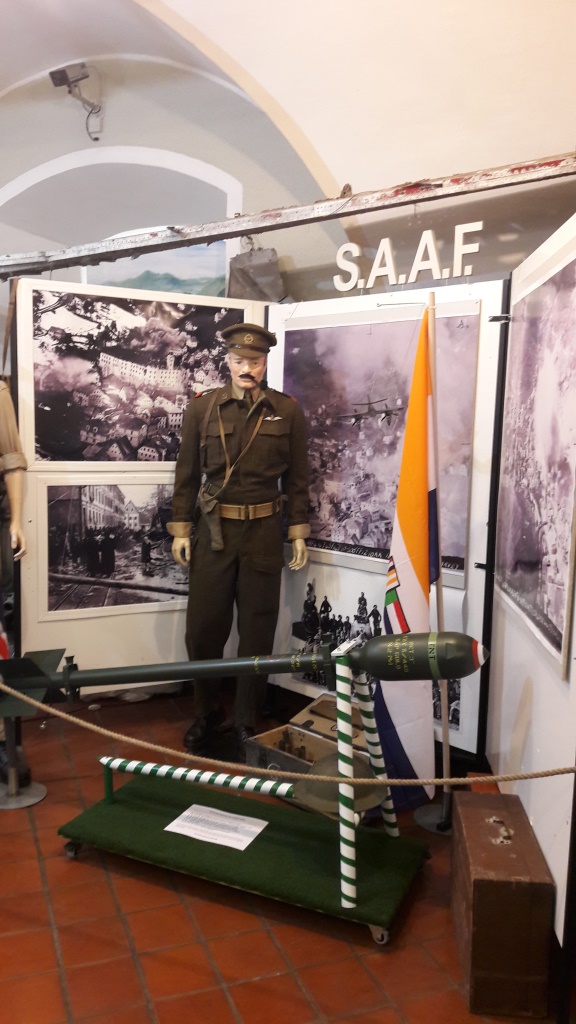
SAAF museum display
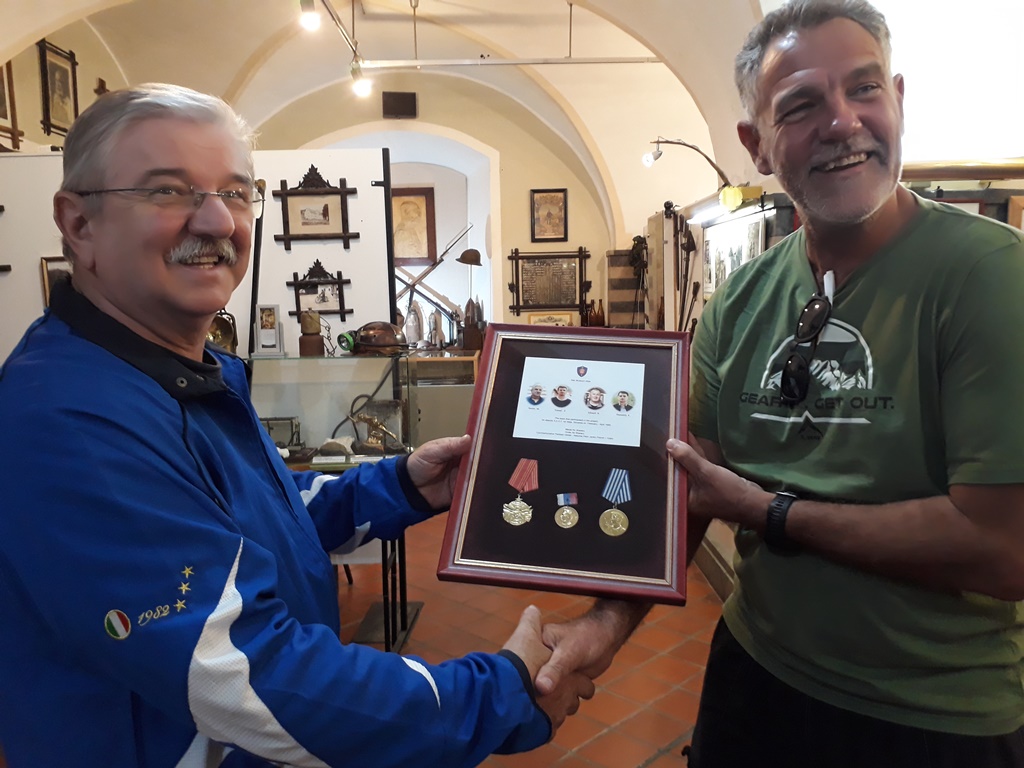
Slavko handing to me as a gift the WW2 partisan medal set.

I hand over to Tomaz a print of the SAAF Beaufighter used by 16 & 19 squadrons.
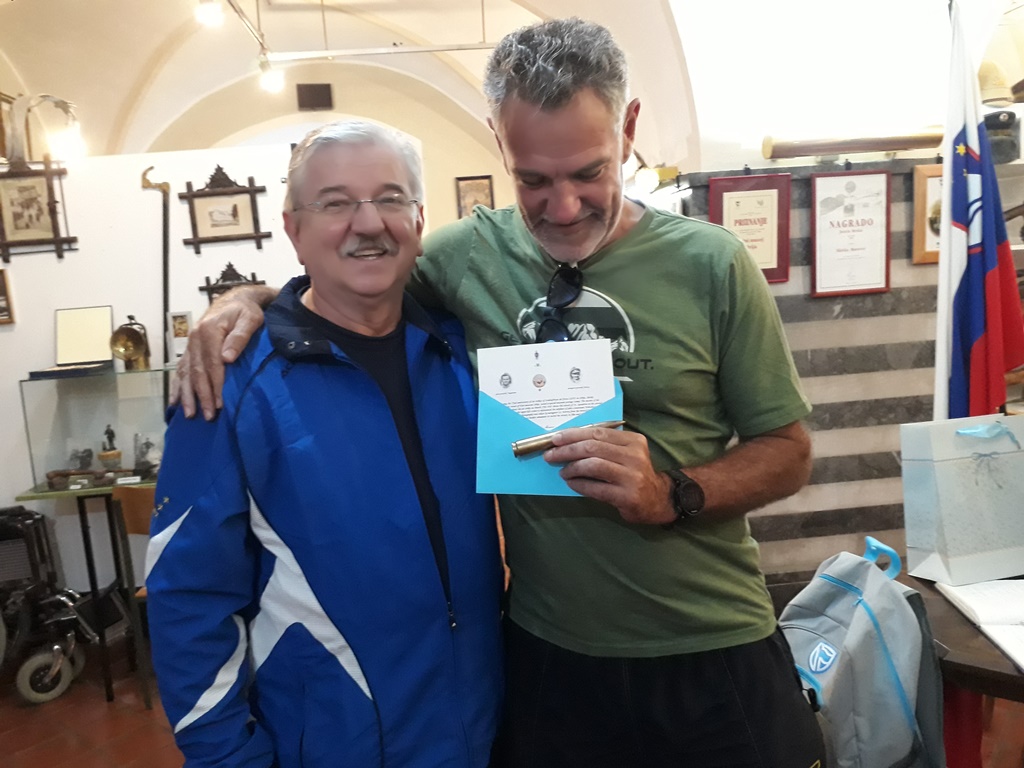
Slavko give me a 50 cal round and a certificate

Special engraved 50 cal round.
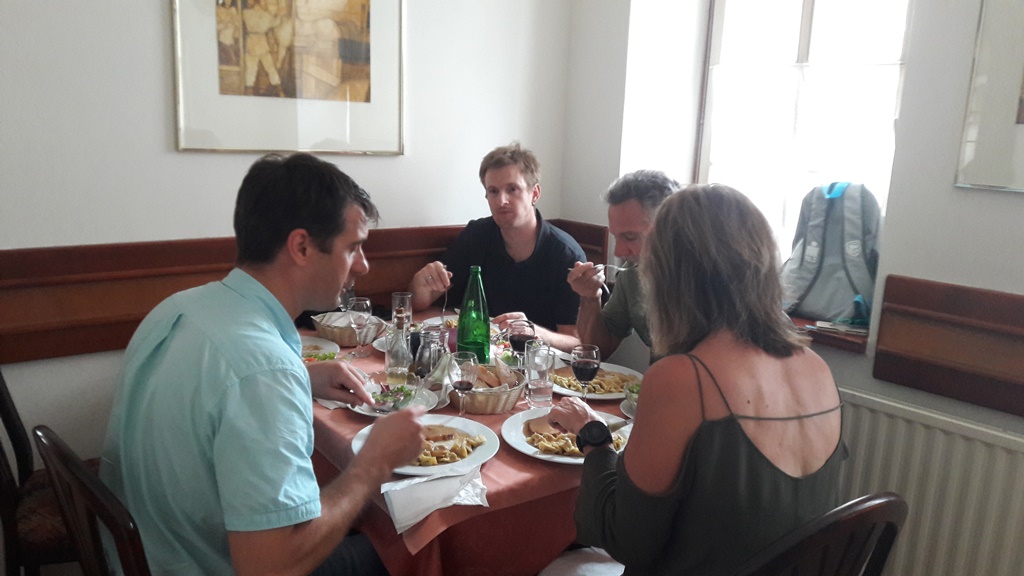
Having lunch in a great restaurant.
Tersia and Slavko on the steps of the Gewerkenegg castle
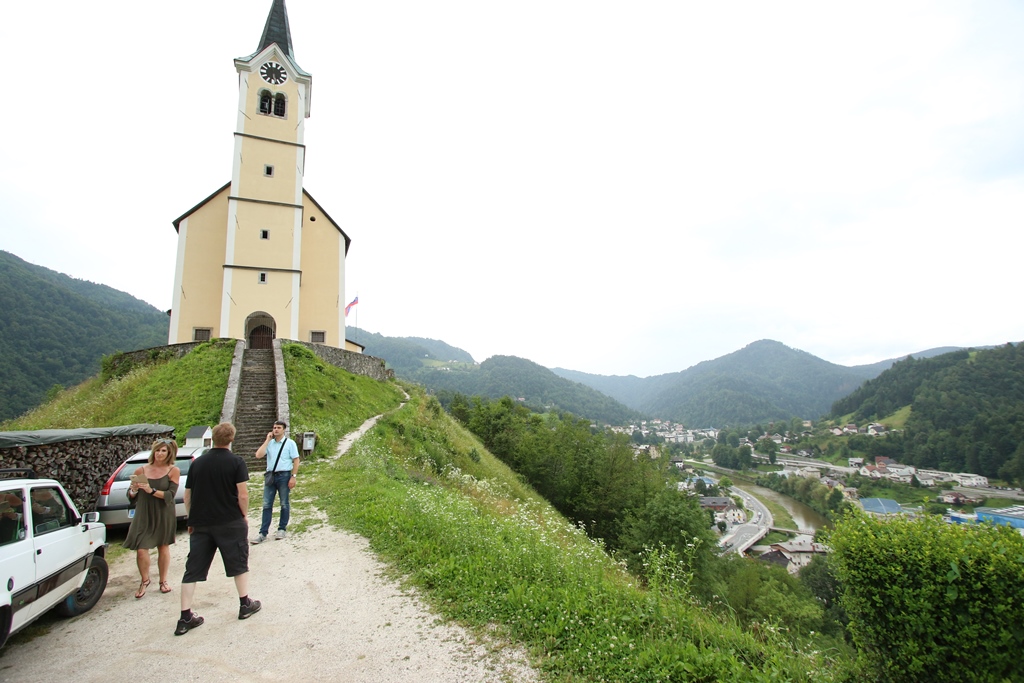
Church on a hill
Slavko, Tinus, Tersia, Tomaz
18 HOTEDRISCA
Hotedrisca was attacked by 16 squadron on a couple of occasions in 1945.
We drove in the little village on our way to Ljubijana and stop at the local hotel where we showed some of the quests in the bar the attack photos. Much interest was shown and we had subsequent email communication.
Click HERE to see the page on SAAF 16 squadron attacks on Hotedrisca.
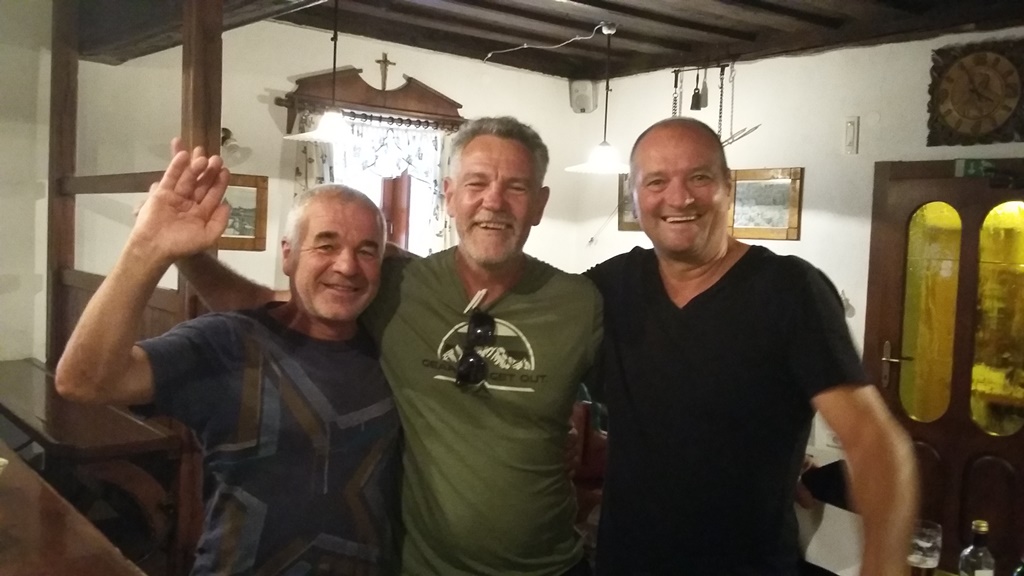
Hello dear Tinus.
Thank you for pictures that you send to us.
I'm nephew of that guy with whom you are on that picture in Hotedrsica.
Is it possible for you to send high resolution pictures and reports as you said in your mail?
Thank you in advance
Kind regards
Urban Brencic
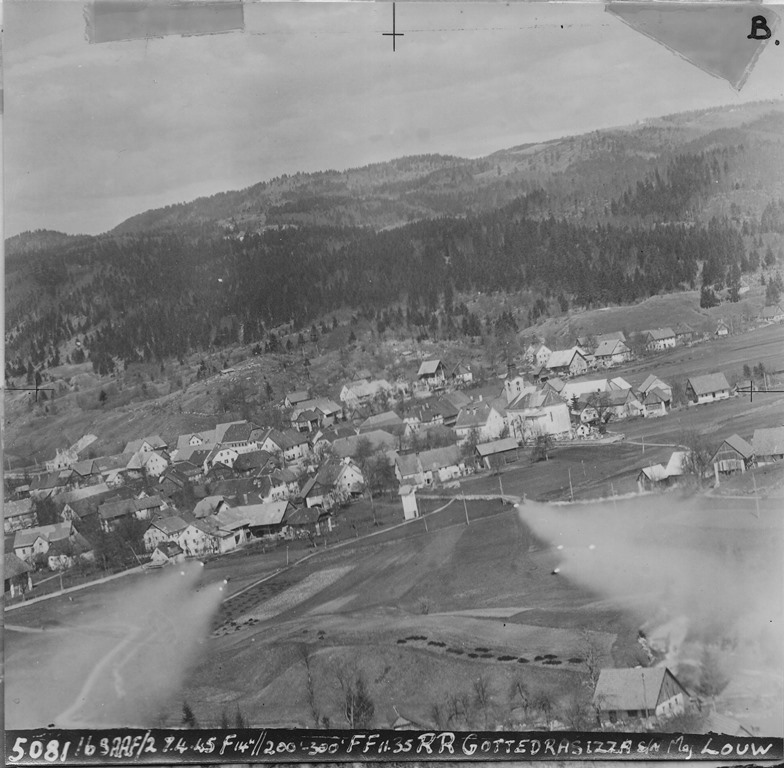
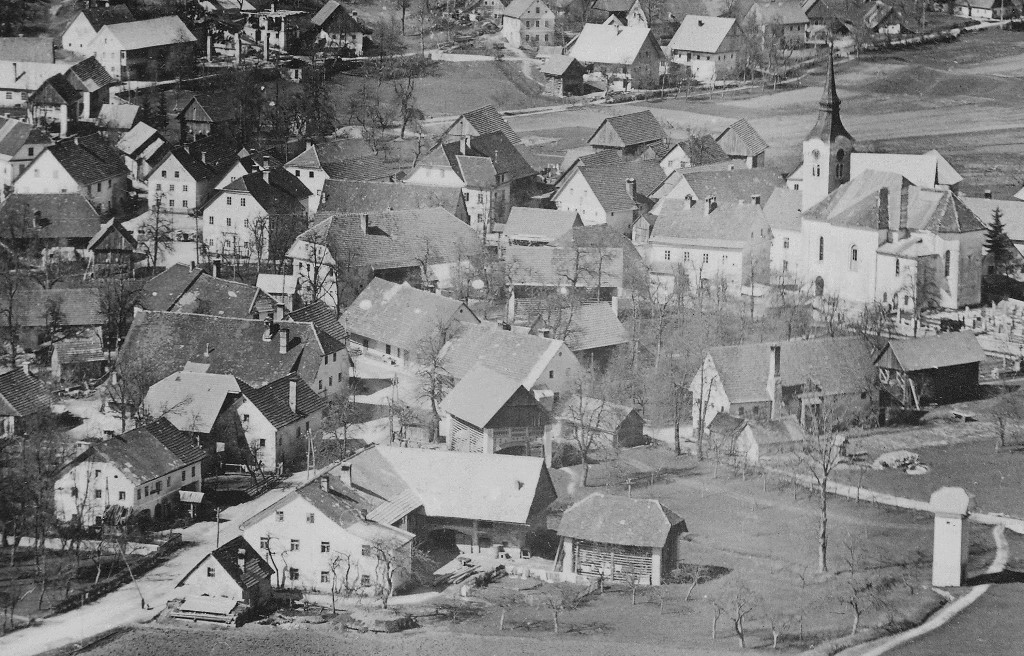
Church on the right
Church today and our car!
19 RADOVLJICA
The barracks at Radovljica was attacked in the last days of the war.
We visited this village on our way from lake Bled to Ljubljana.
Here we went to the local museum and was warmly welcomed with much appreciation from the curator regarding the strike photographs.
Click HERE to see the page on SAAF attacks on Radovljica.

Dear Mr. Le Roux,
Thank you very much for your Mail and engagement. I sent everything to the curator of our Town museum, Katja Praprotnik, who had a holiday last week. She will write you about photos and further information.
Best regards
Tita Porenta
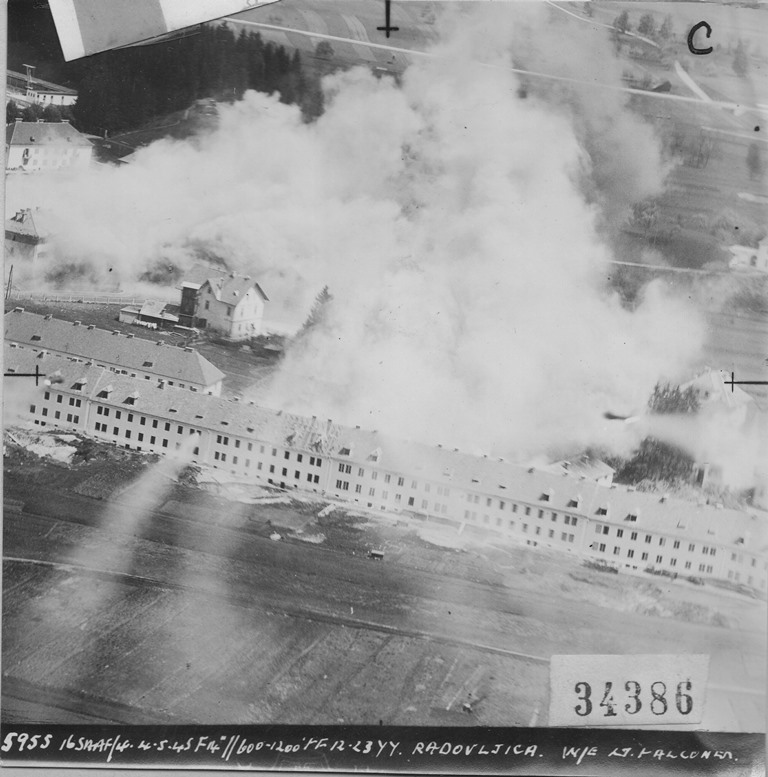
Attacking the barracks at Radovljica

Tersia in the lovely town
20 SKOFJA LOKA
Targets in Skofja Loka was attacked including Barracks and buildings in the center of the old city.
We were accompanied by Klemen Oman (Klem) who showed us around in the center of the town and then drove us a short distance to the site where the barracks were attacked.
Klem also organised for us a visit to the Castle museum where the curator, Biljana, took us on a guided tour.
Thank you very much Klem!
Click HERE to see the page of the SAAF attacks on Skofja Loka.
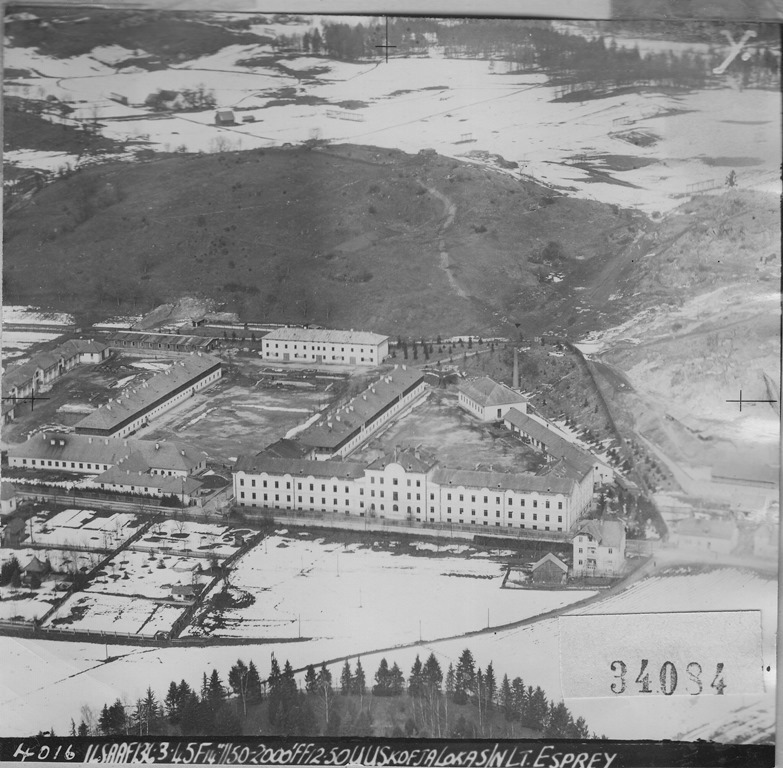
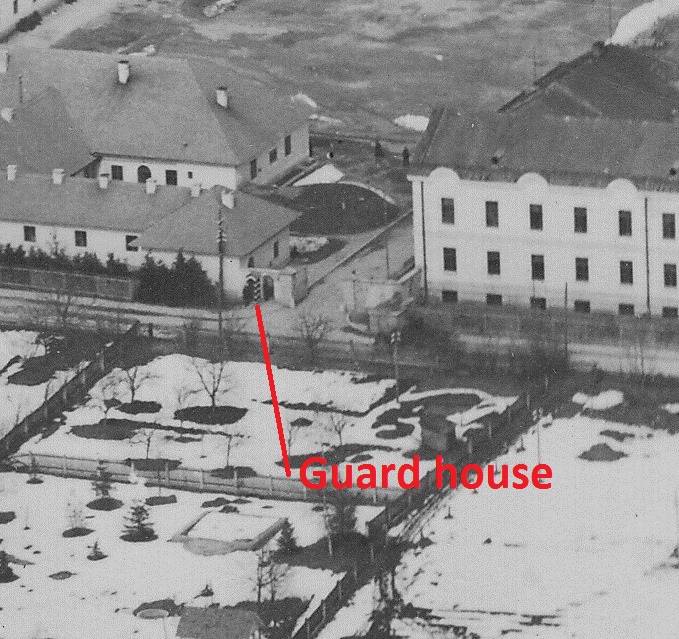
Klem looking at the position of the guard house
Barracks building opposite guard house
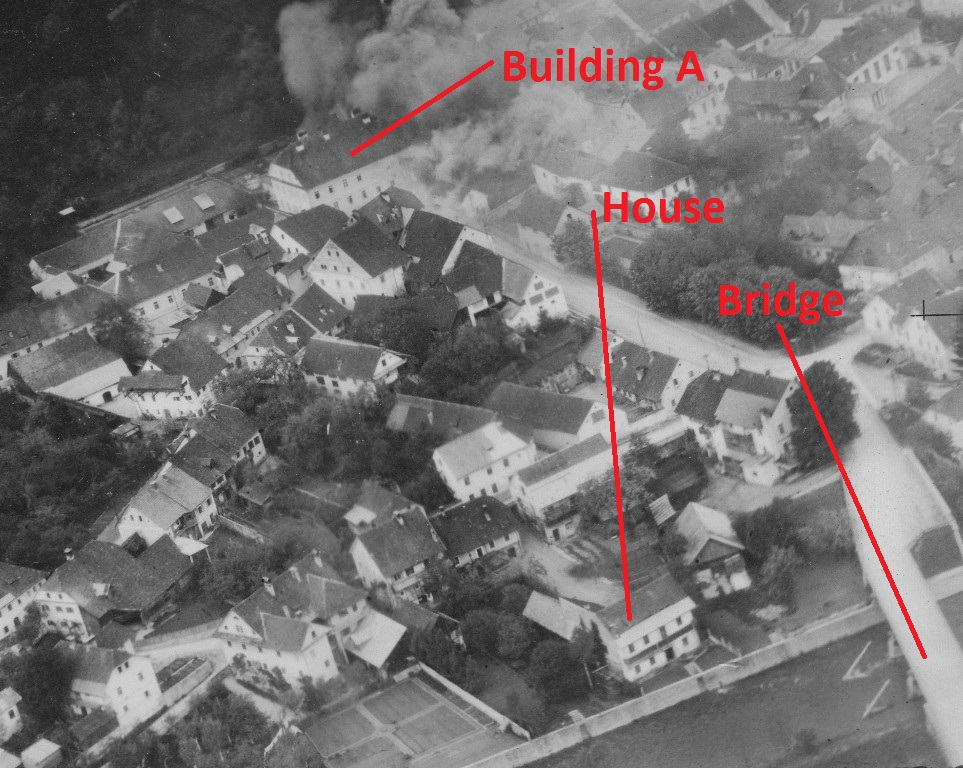
Historical photo with attack in town centre
Building A today
On the bridge showing the house as in the attack photo
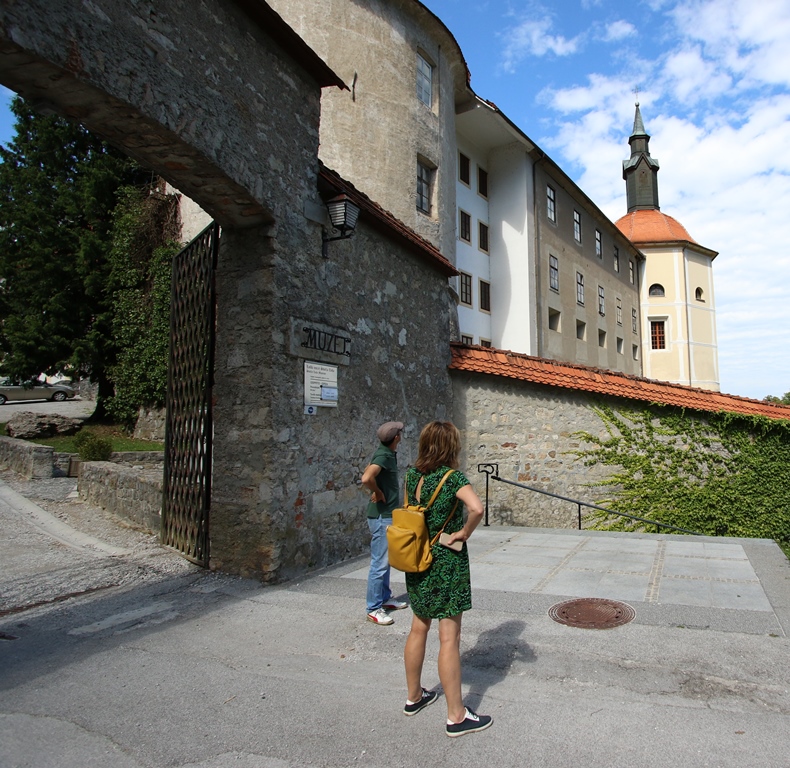
Entrance of the castle museum

In the musrum of the castle on top of the hill with the curator (Biljana)
According to Klem this is the house where a partisan cartographer lived that gave the information of enemy positions to the Balkan Air Force.
21 GROSUPLJE
Grosuplje is a village on the Kocevje road and was attacked by SAAF 16 squadron in late April 1944.
We stopped in the village and went to the railway station. The station commander could speak no English and we could make no contact with local people as it was a Saturday afternoon and everything was closed.
We identified some buildings at the station and also the bridge crossing the line on the way to Kocevje.
Click HERE to see the page of the SAAF attacks on Grosuplje.

Attack on Grosuplje rail yard showing the bridge at bottom
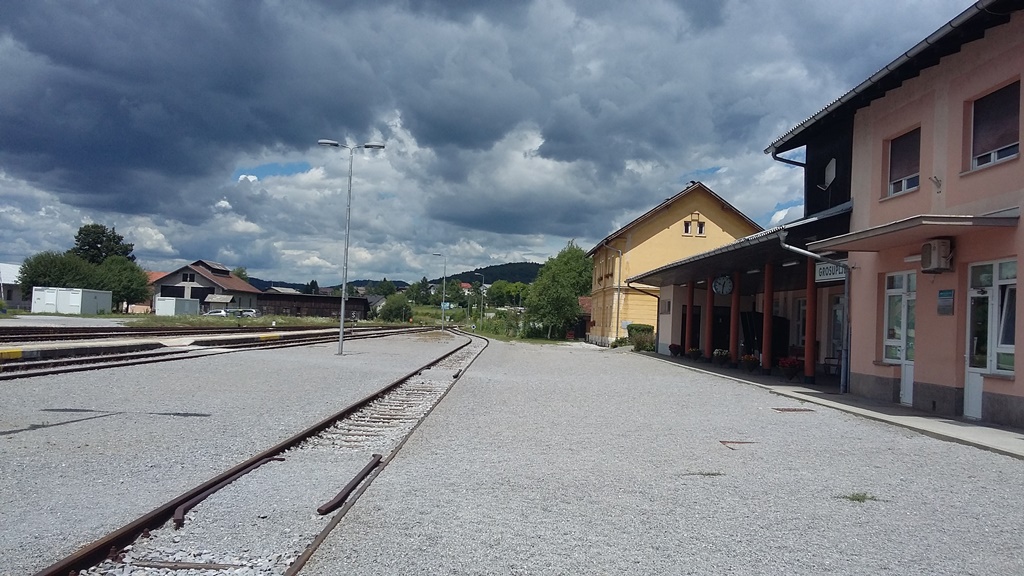
Standing on the bridge looking towards the station
Standing on the bridge looking away from the station showing the rails split to Kocevje and Novo Mesto
22 RIBNICA
Ribnica was attacked by SAAF 16 squadron in the city center and also in the industrial area.
We only visited the city center and identified several features from the historical photos including the absolutely beautiful twin tower church.
Due to the day of Saturday we found the museum closed and only made contact with the restaurant people where we had lunch.
Click HERE to see the page of the SAAF attacks on Ribnica.
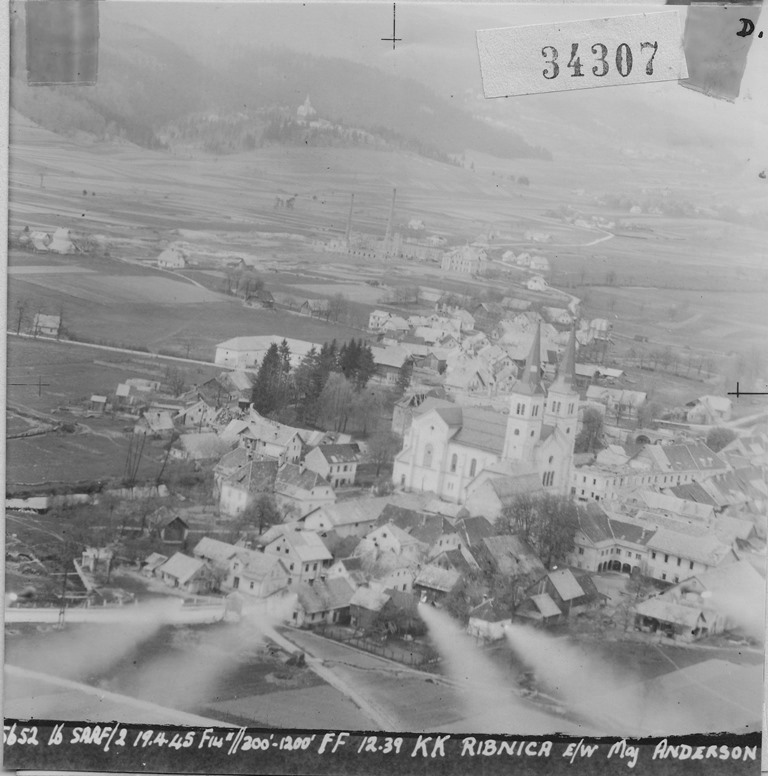
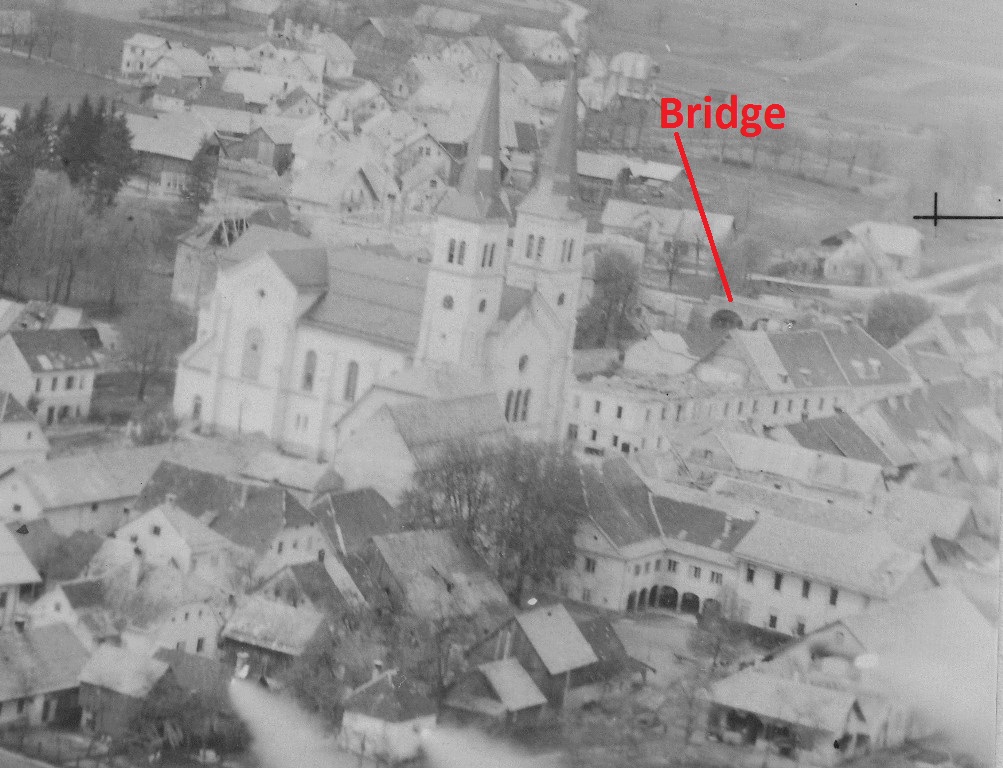
The bridge today
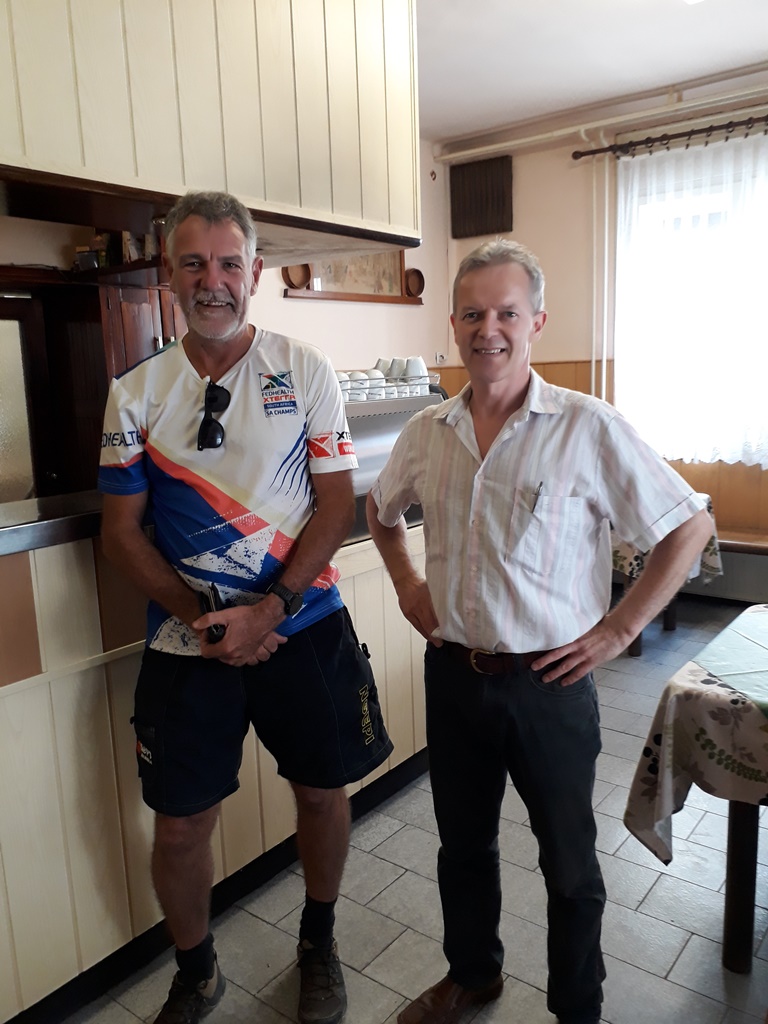
With the restaurant person
23 KOCEVJE
Kocevje was attacked on occasions targeting the German HQ in the village center as well as the rail yard.
We visited both locations but the rail road has since been removed. We identified the key buildings and visited the beautiful church too constructed from non masoned stone.
All museums and the information bureau were closed due to being on a Saturday.
Click HERE to see the page of the SAAF attacks on Kocevje.
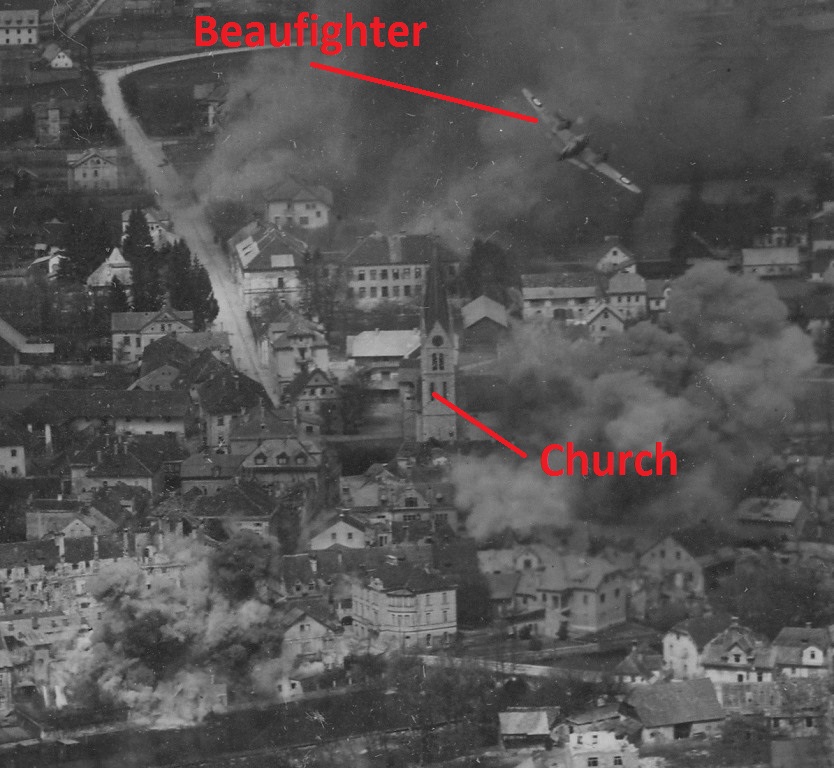

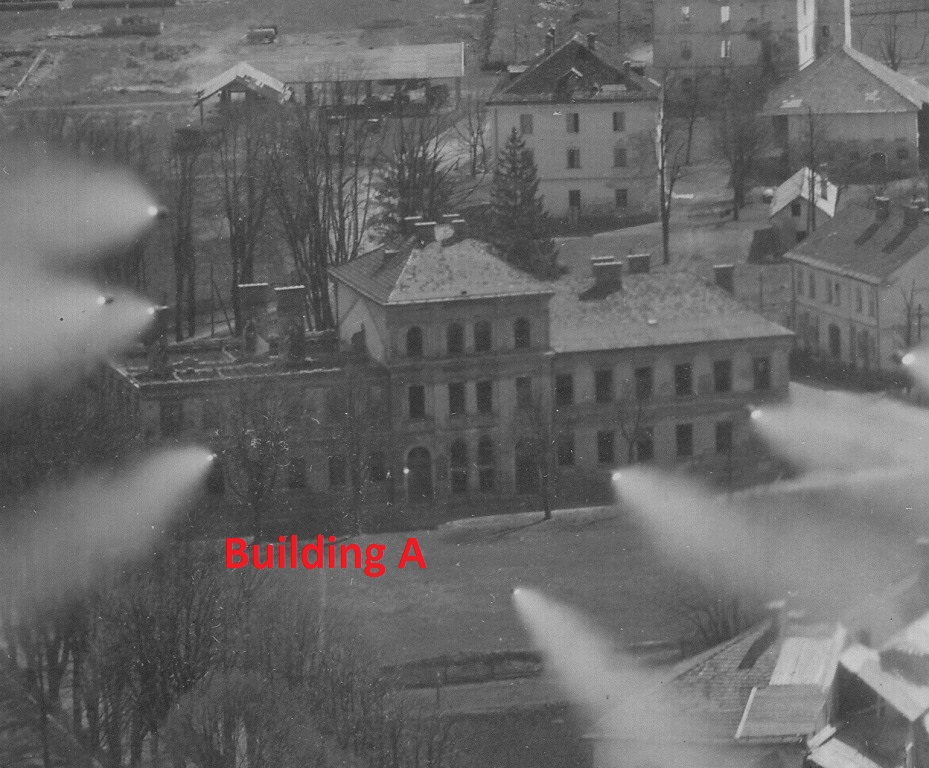
Once a German military HQ in the local school building damaged by the SAAF and now beautifully restored.
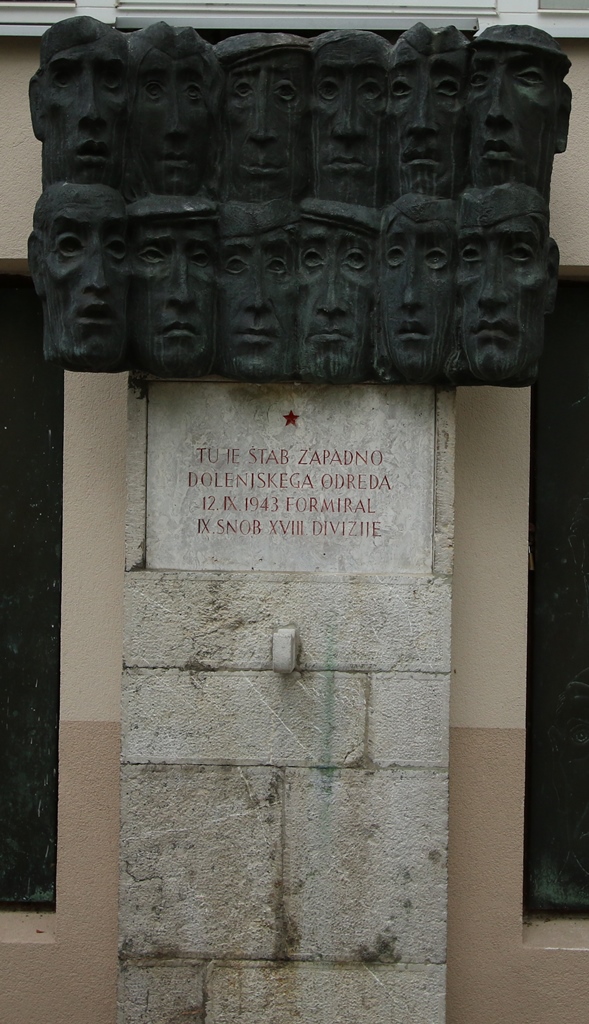
WW2 memorial on the school wall

The same building at the rail yard but the rails have since been removed.
24 ZUZEMBERK
Zuzemberg was relentlessly attacked by SAAF squadrons including our Marauder B26 medium bomber squadrons in 1945.
We drove in Zuzemberg late afternoon and upon us was revealed one of the most beautiful villages in Slovenia featuring the picturesque medieval castle once severely damaged in the war.
At that stage there was a local festival going on and we joined in the festivities including a music concert the evening.
Here we met local historian Slavko . He drove us to a B-17 crash site memorial that he organized envolving both governments officials from USA and Slovenia when the memorial was unveiled.
The Castle was repaired but not restored to its original glory. The church has unfortunately been removed and not restored.
The visit to Zuzemberk was one of our highlights!
Click HERE to see the page of the SAAF attacks on Zuzemberk.
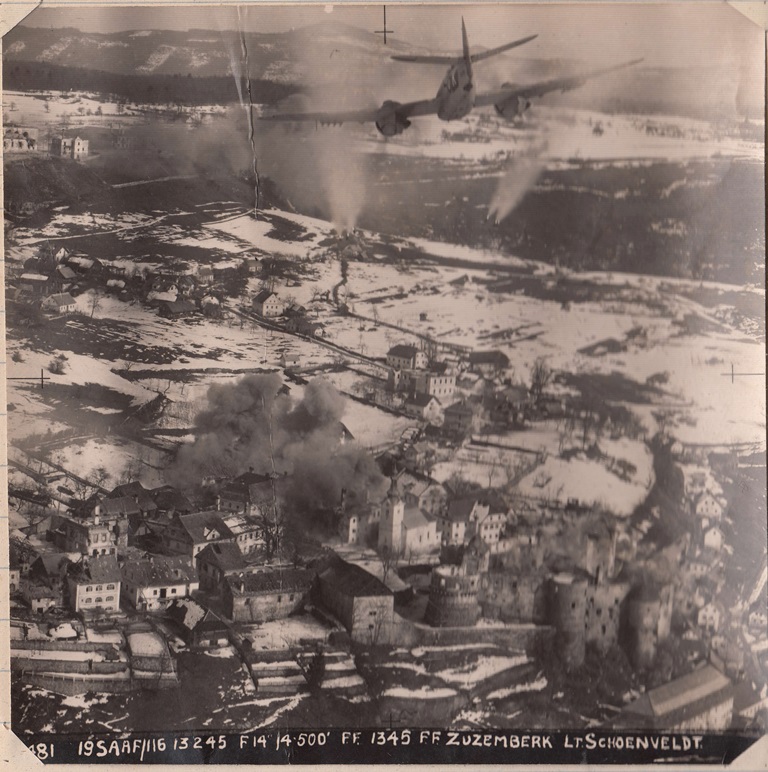
Most famous photograph showing Lt Stevens' Beaufighter over Zuzemberk. The church also visible.
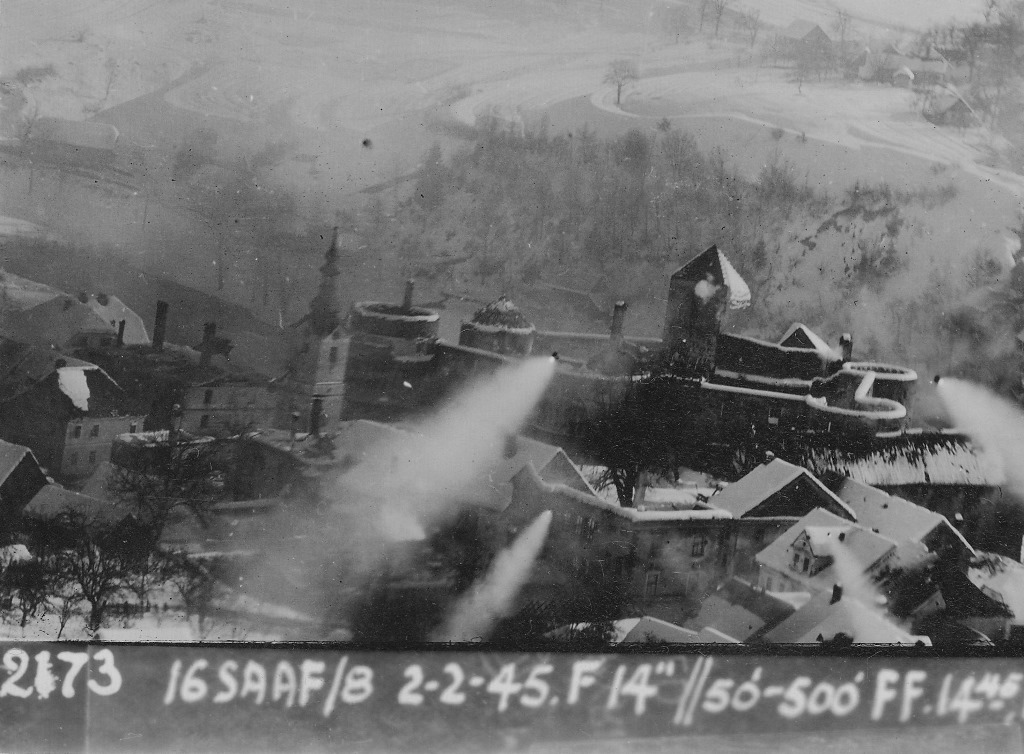
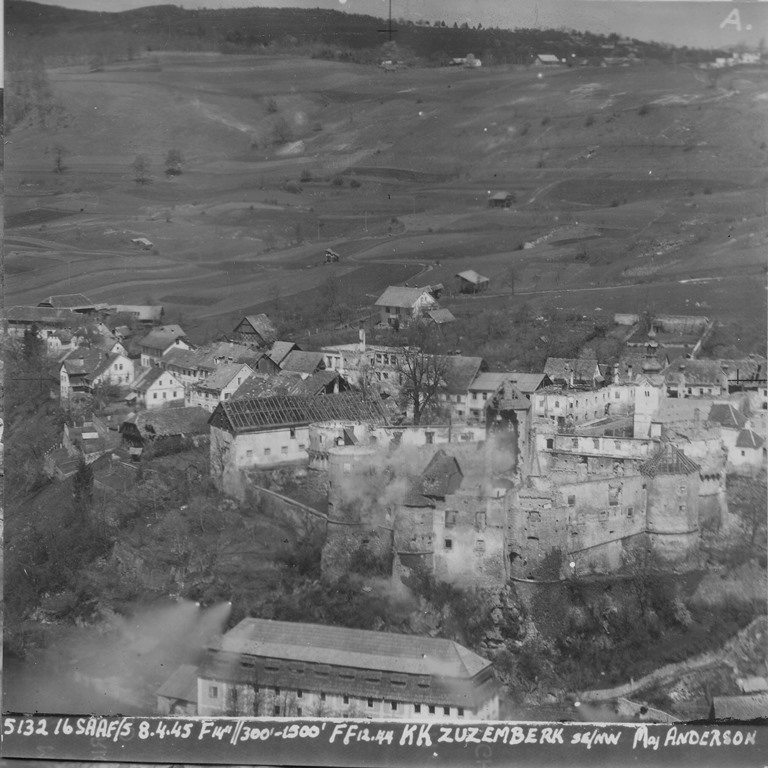
Severely damaged.
We arrived late afternoon
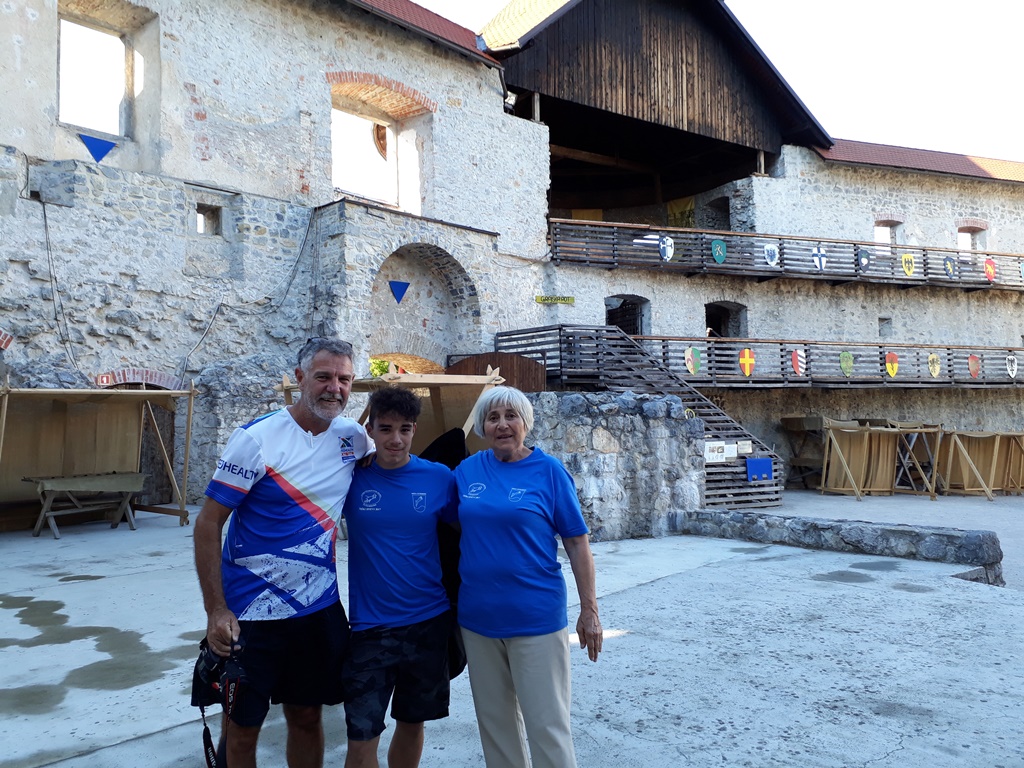
Most friendly people, the boy ( ) took us on a guided tour around the castle.
Castle inside
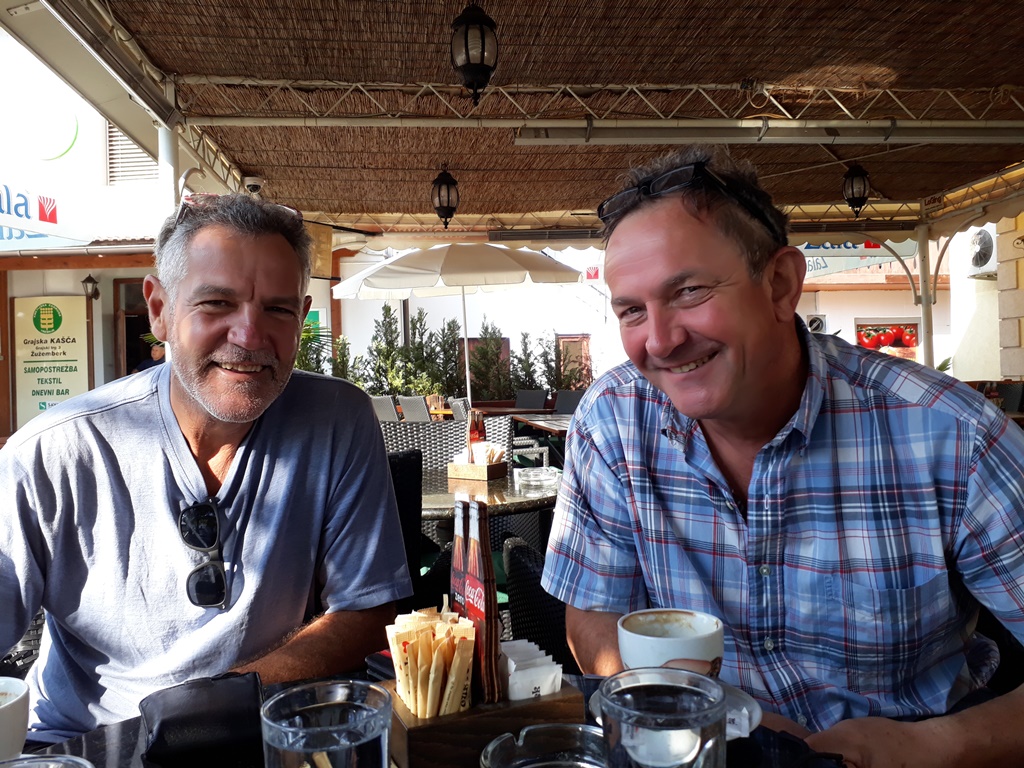
Slavko next morning breakfast
Preparations for the festival
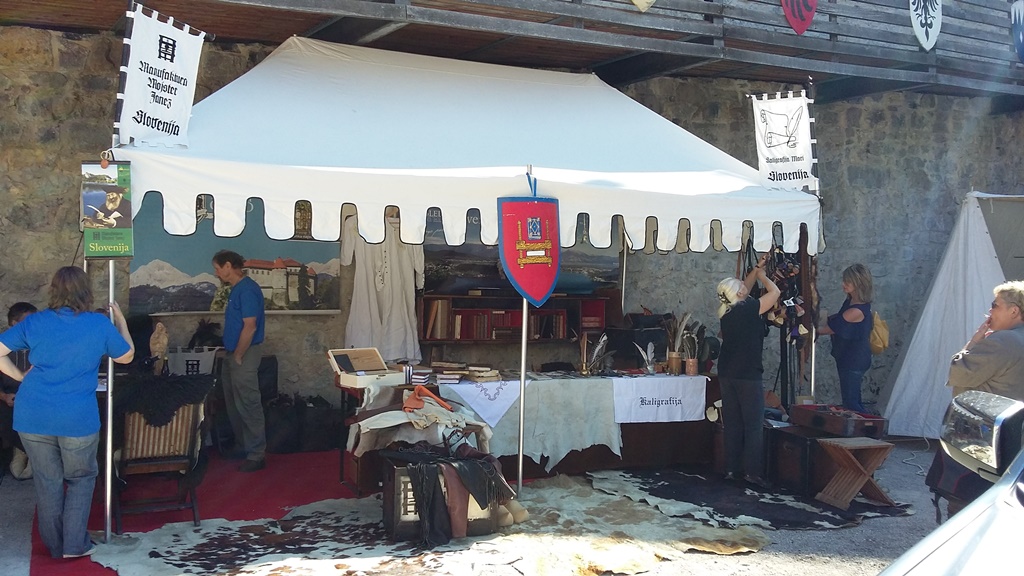

Slavko took us to the B-17 crash site where he organized the memorial to be erected.
At the memorial
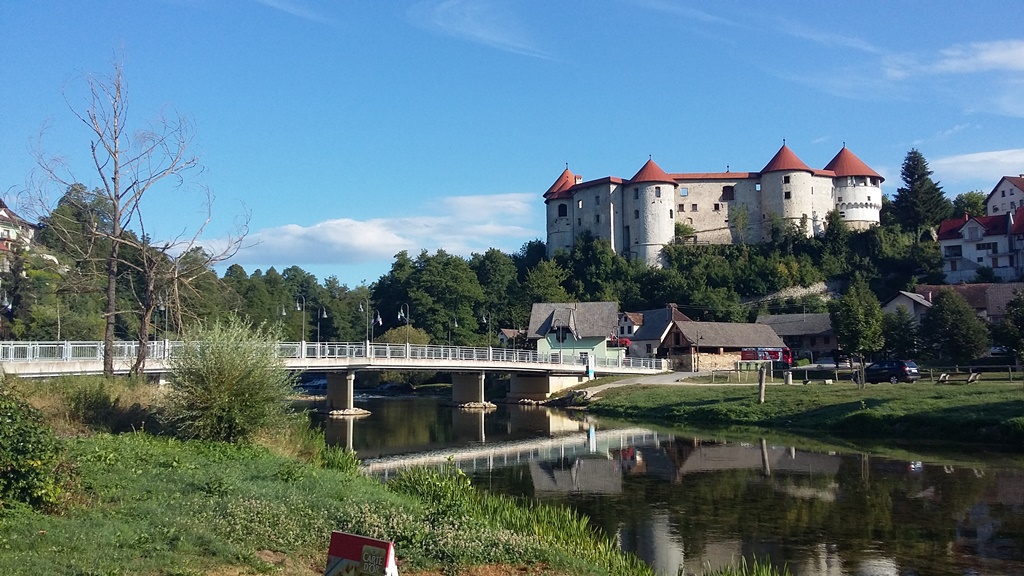
25 ZAFARA
Zafara is right next to Zuzemberk and some buildings and a church were hit by SAAF aircraft in 1945.
We drove up to the church and found the church to be 100% being restored to its former glory. The buildings have also being restored and now being occupied by the priest, one part of the building was removed.
Click HERE to see the page of the SAAF attacks on Zafara.
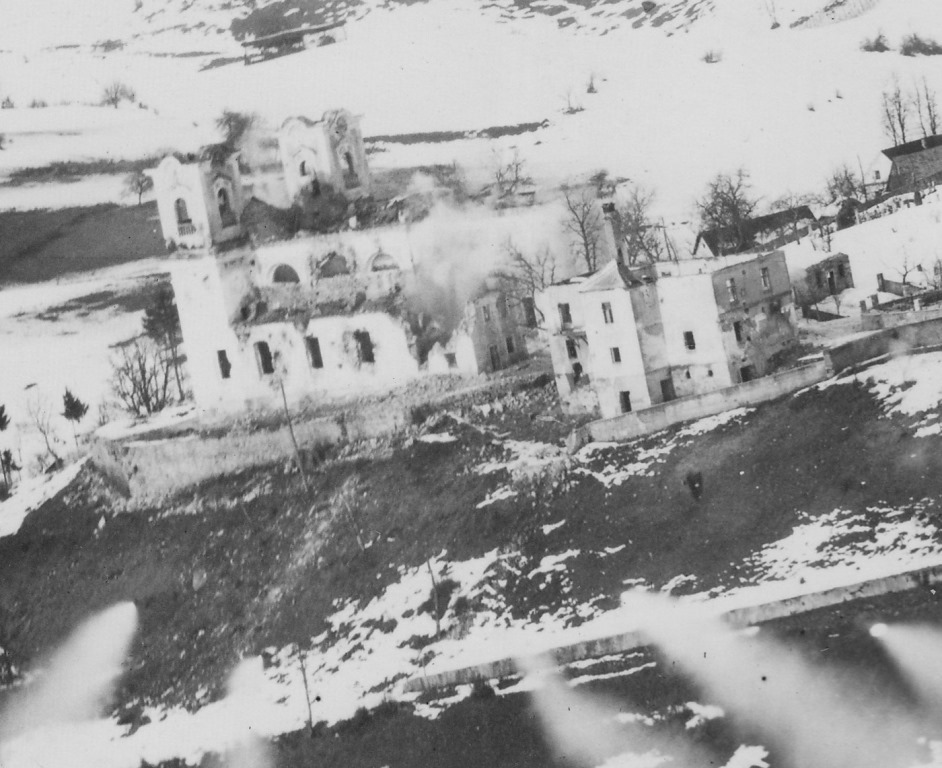
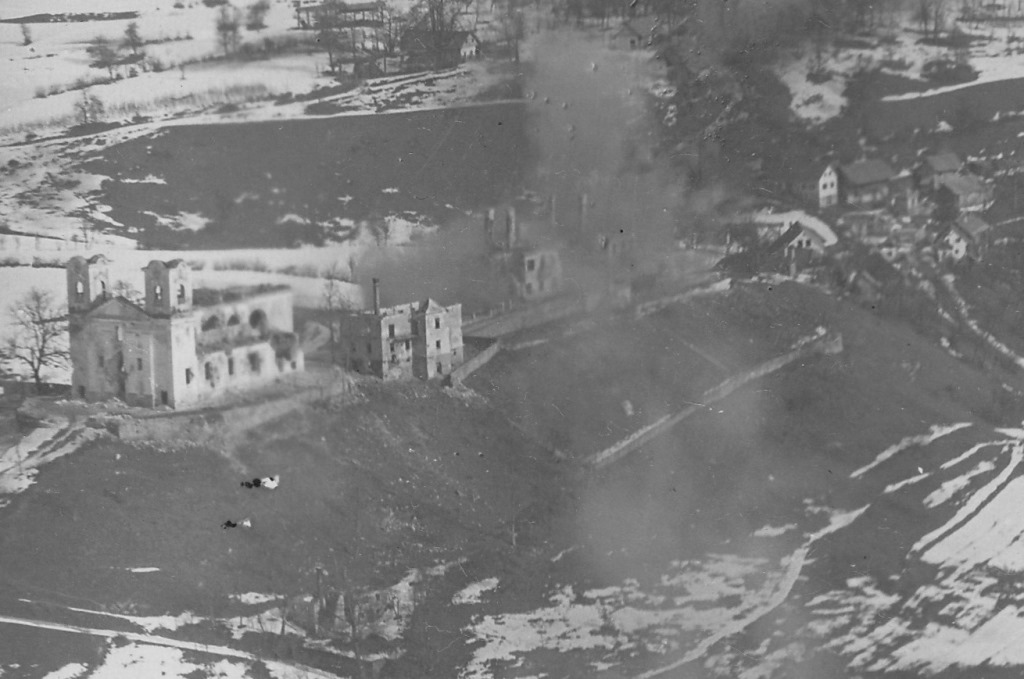
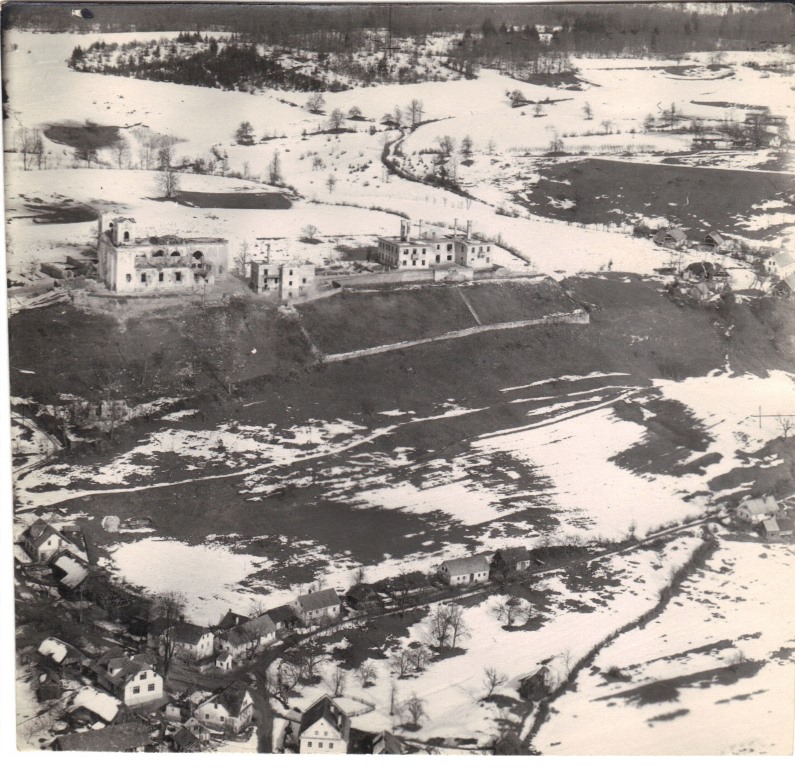
26 DVOR
Buildings in DVOR was badly damaged by SAAF strikes.
Slavko lives in Dvor and he told us about the buildings attacked.
We identified several of the buildings that appeared on the strike photographs.
The damaged church was never restored as was the fate of many others due to the Communist regime that was not interested to repair the churches.
Click HERE to see the page of the SAAF attacks on Dvor.
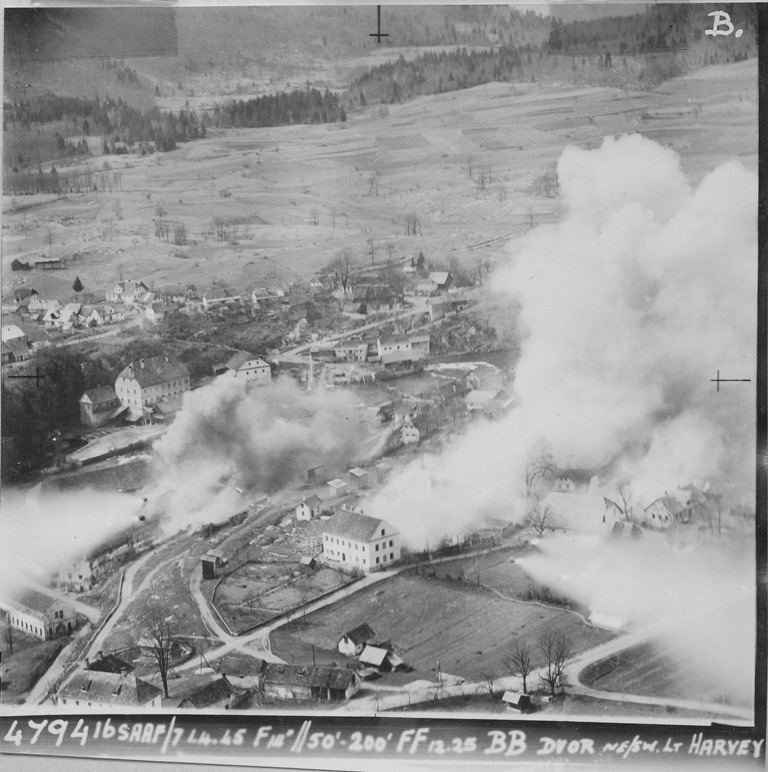
Dvor under attack 1945, the school building in the center, occupied by the enemy.
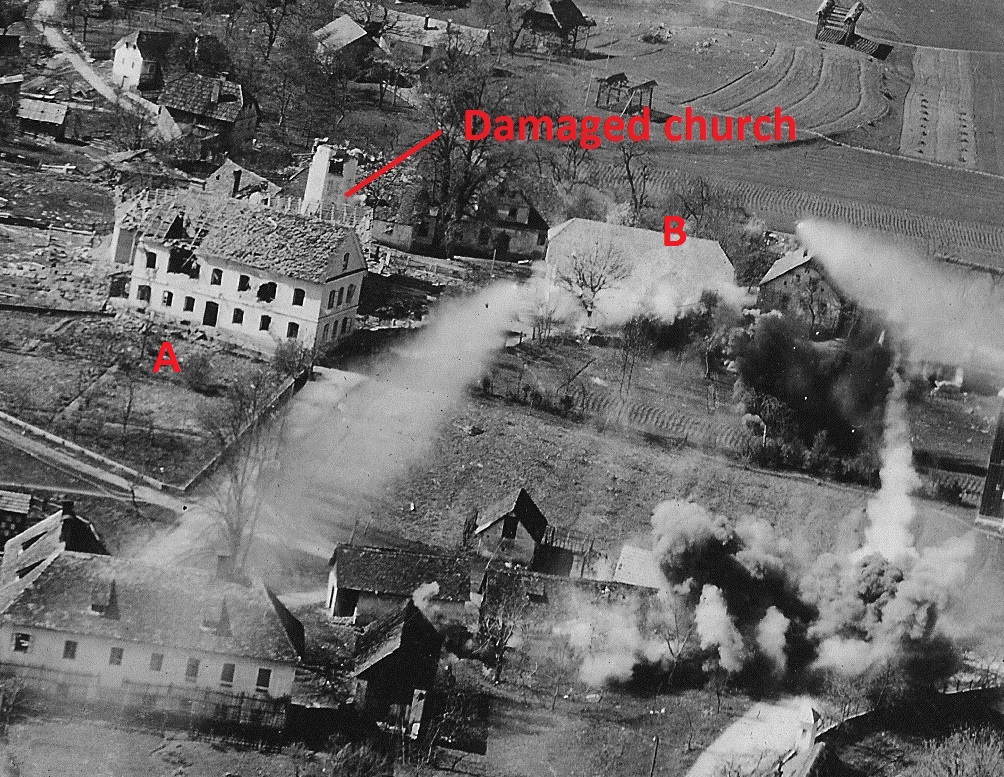
Close up with school prominent
Sad to see the steps going to the church but the church no more. The School building was restored nicely.
School building
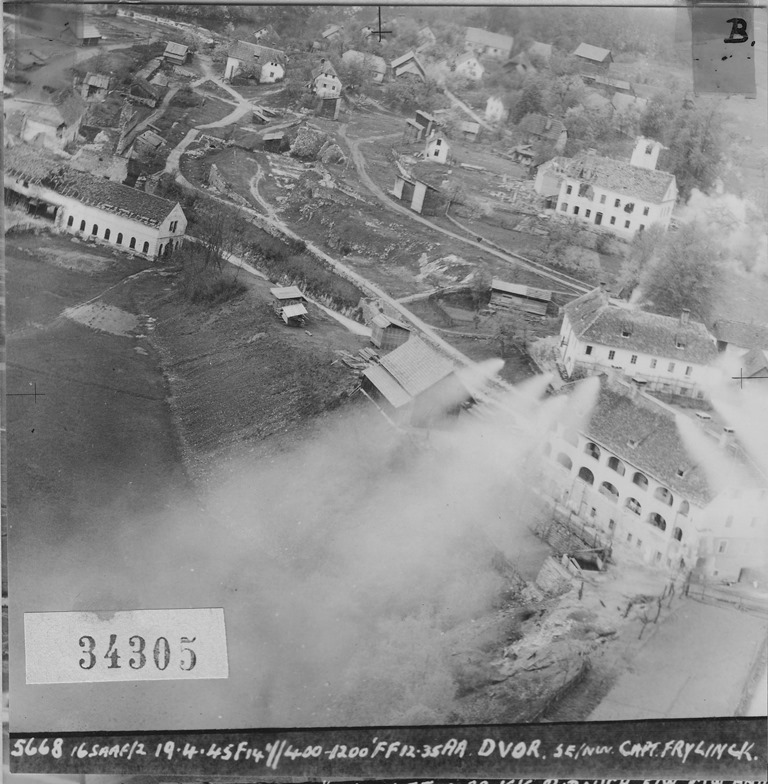
See the building on right and how it looks today
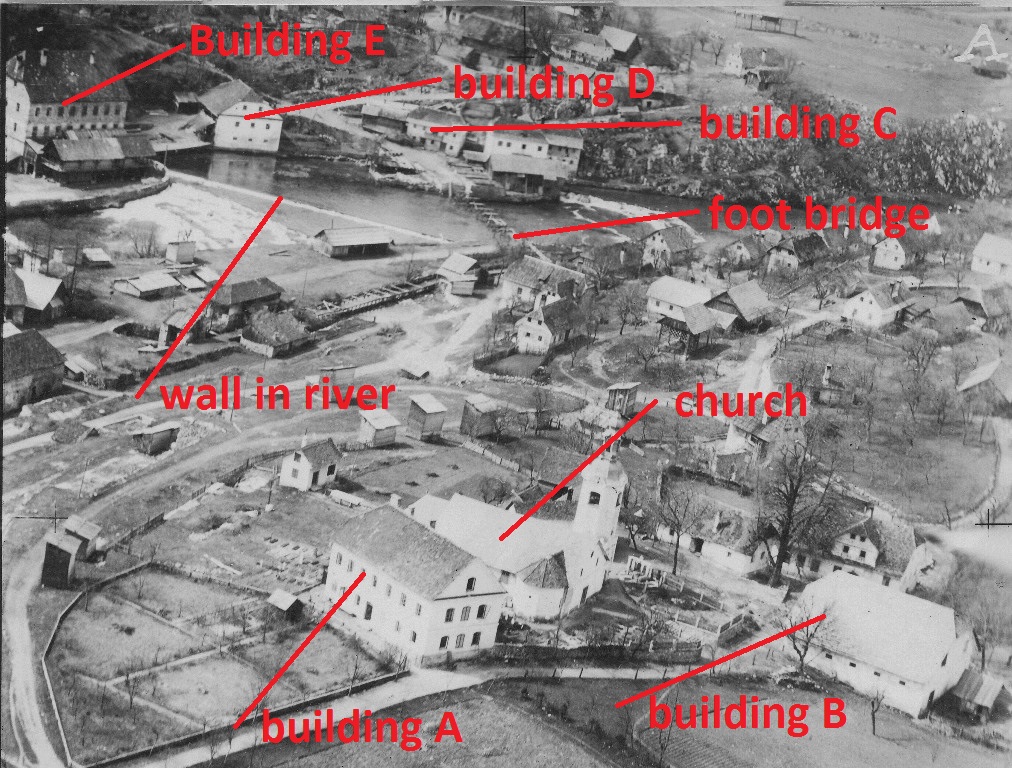
Standing on the bridge and buildings E and D opposite the river.
27 VINKOV
Vinkov is a tiny village up the mountains next to Dvor. This village was badly damaged by SAAF attacks in 1945.
We drove to Vinkov and found the beautiful small church also visible in the historical strike photographs.
Click HERE to see the page of the SAAF attacks on Vinkov.
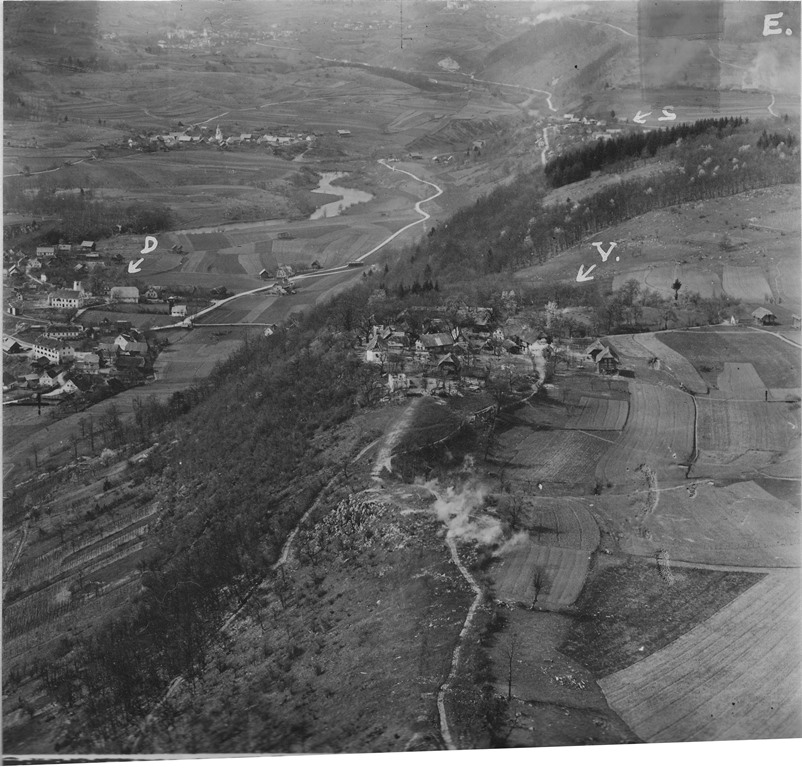
Here is seen Vinkof (V) and Dvor (D) and Sadinja Vas (S)

Rockets going down, church on the left
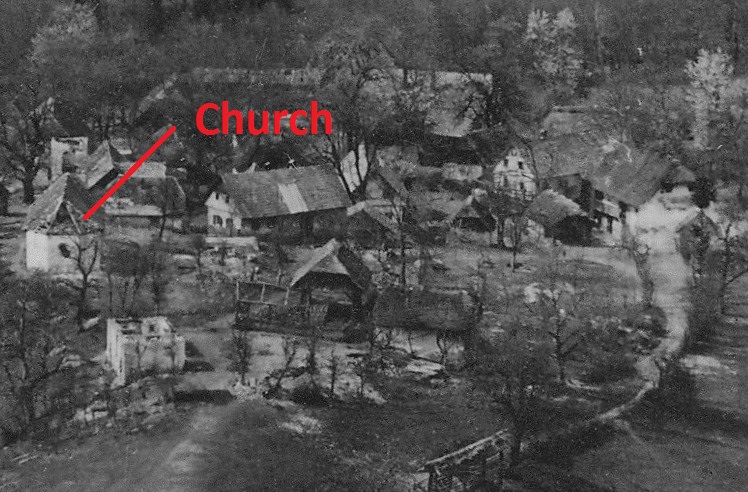
Church beautifully restored.
28 STRAZA
We drove into Straza and stopped for lunch in a building that also featured in the attack photographs.
We met up with the owner and his daughter and much interest were shown in the photographs we showed to them.
We subsequently had communication via internet.
Click HERE to see the page of the SAAF attacks on Straza.
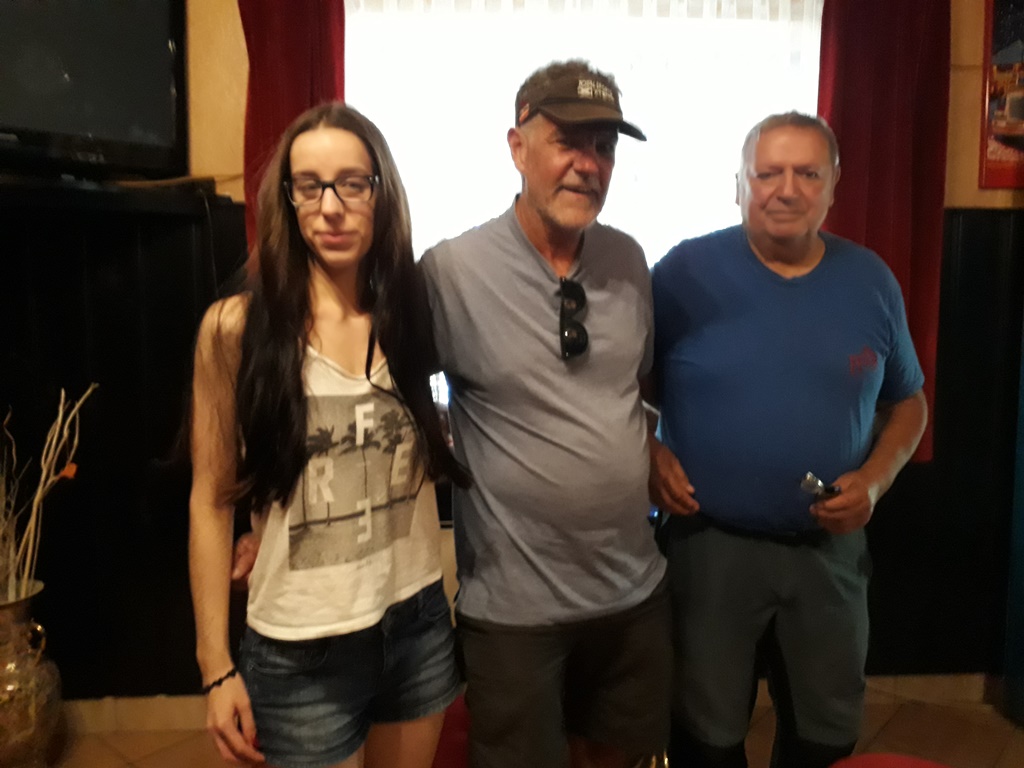
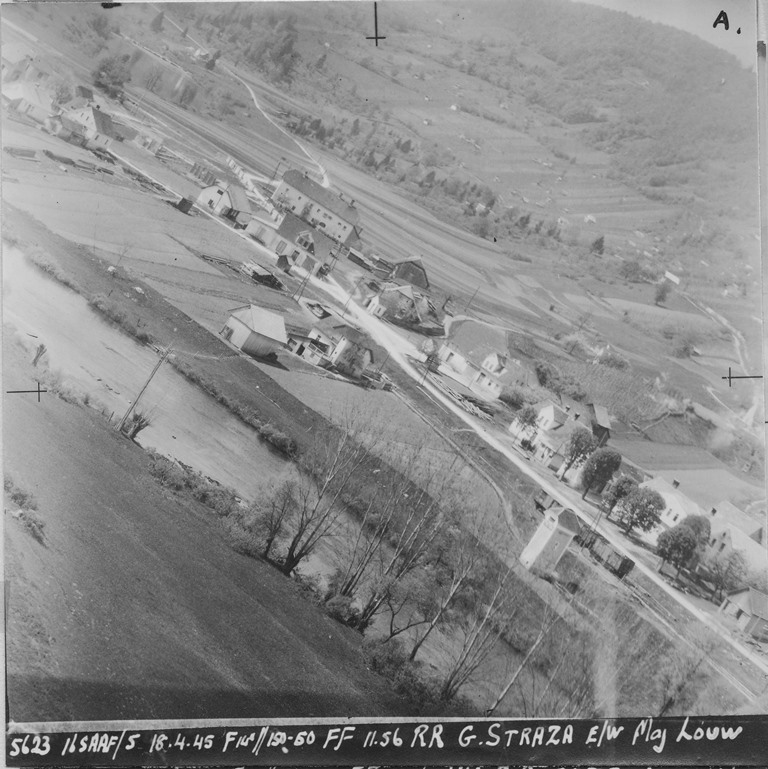
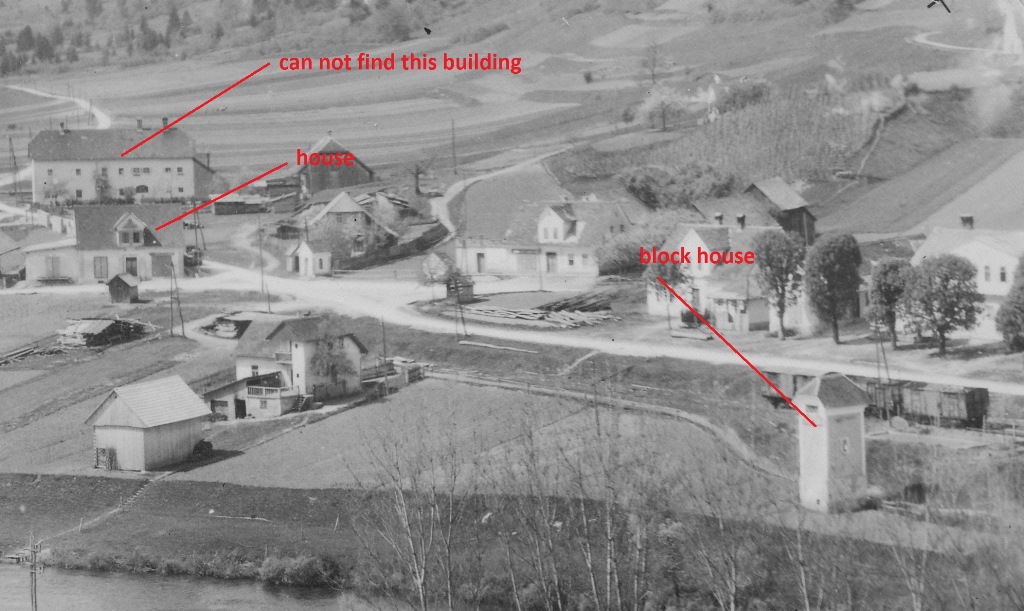
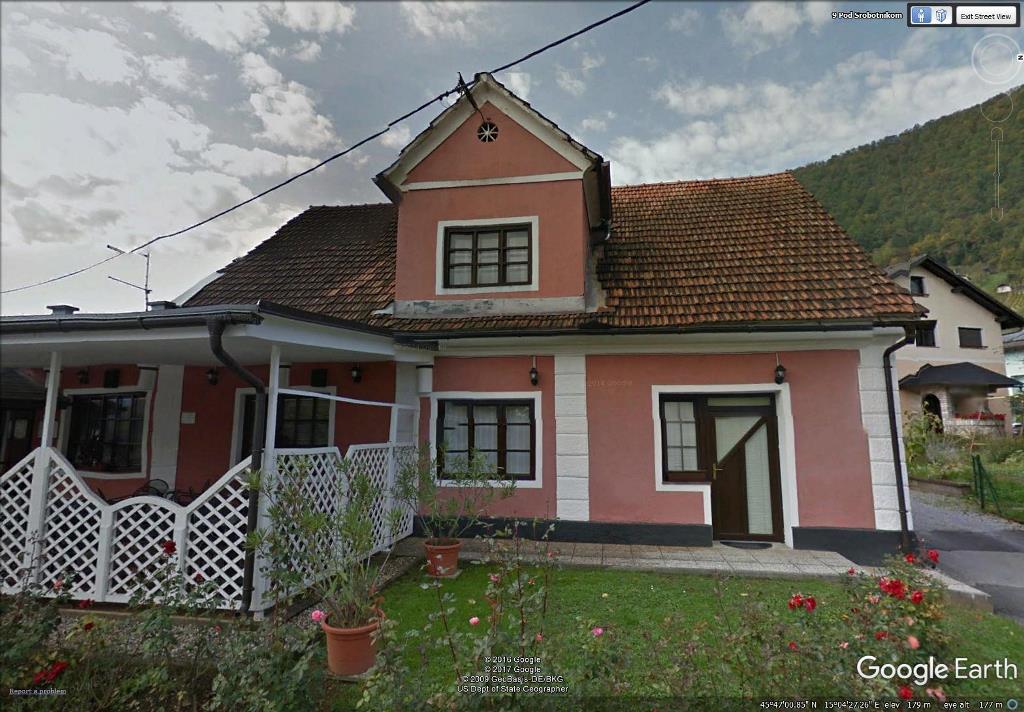
Hi!
Thank You for the photographs, we were all looking forward to Your e-mail, so we could show them around and tell our guests about Your visit.
I would just like to ask You if you mind us developing those two photos, putting them in a frame and hang them in the restaurant?
They are so interesting and we think they would be such a special and fascinating item, since we really appreciate and keep in mind the history of our town and this house, which was in the past many more things, not only a restaurant and we are always glad to tell people about it and it's past.
Once again, thank You for the photographs.
Have a nice day.
Alja Lavric
29 NOVO MESTO
We arrived early afternoon in Novo Mesto and found the museum to be closed. We then located the church that is visible on the attack photographs but also visited the school that served as a German HQ during the war and was attacked by the SAAF.
Click HERE to see the page of the SAAF attacks on Novo Mesto
.

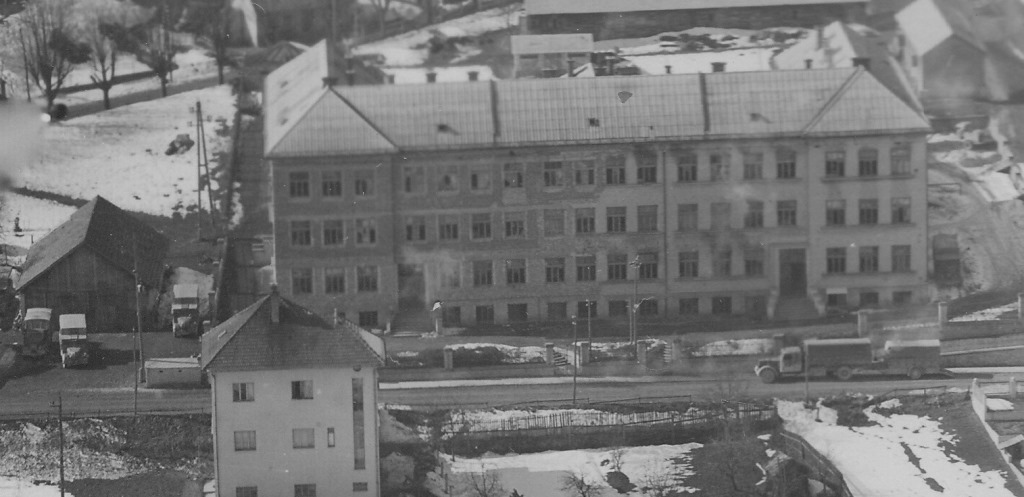


The church we visited is in top center.
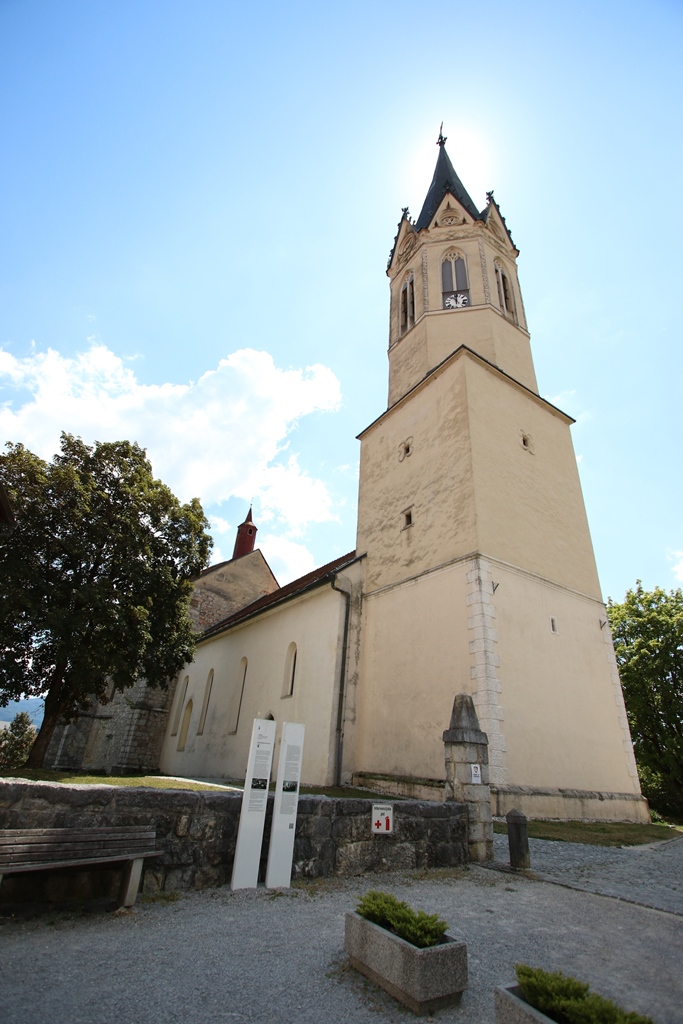
30 GRAD HMELJNIK
The castle was attacked but the wrong target was attacked by our SAAF squadron.
We drove to this desolated castle that is now becoming a ruin, up in the mountains. This Castle is closed to the public and seems not to be an active tourist location. The road going up to the castle is more suited for a 4x4 vehicle but our little Opel made it.
Here I used for the first time a drone to take some sreal shots.
Click HERE to see the page of the SAAF attacks on Grad Hmeljnik.
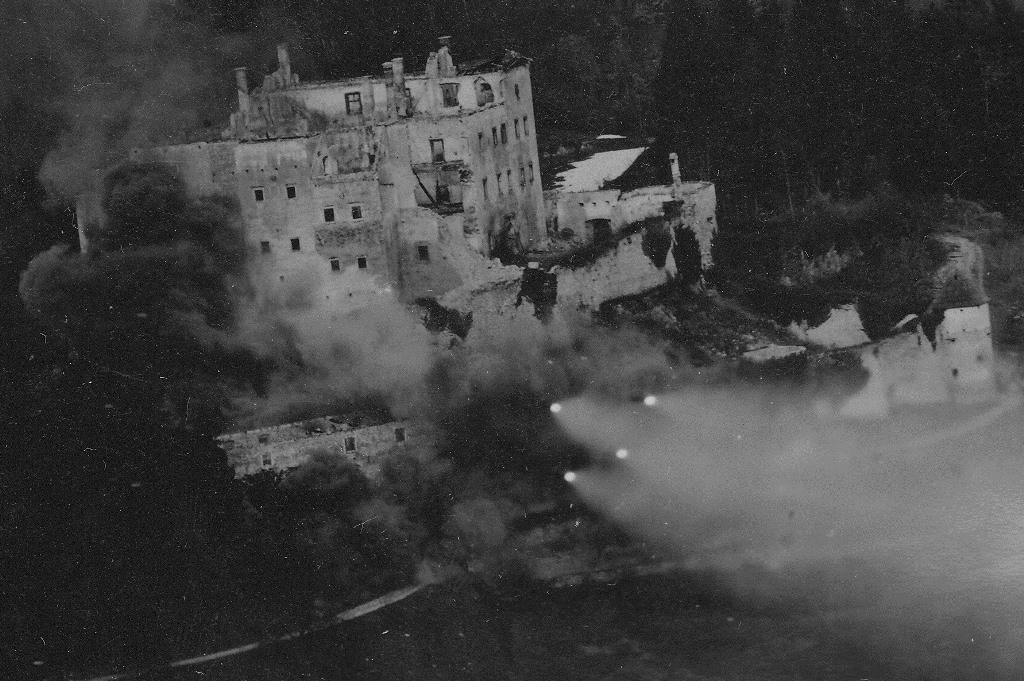
Wrong target was attacked, this building already seems to be abandoned
Castle high up the mountain
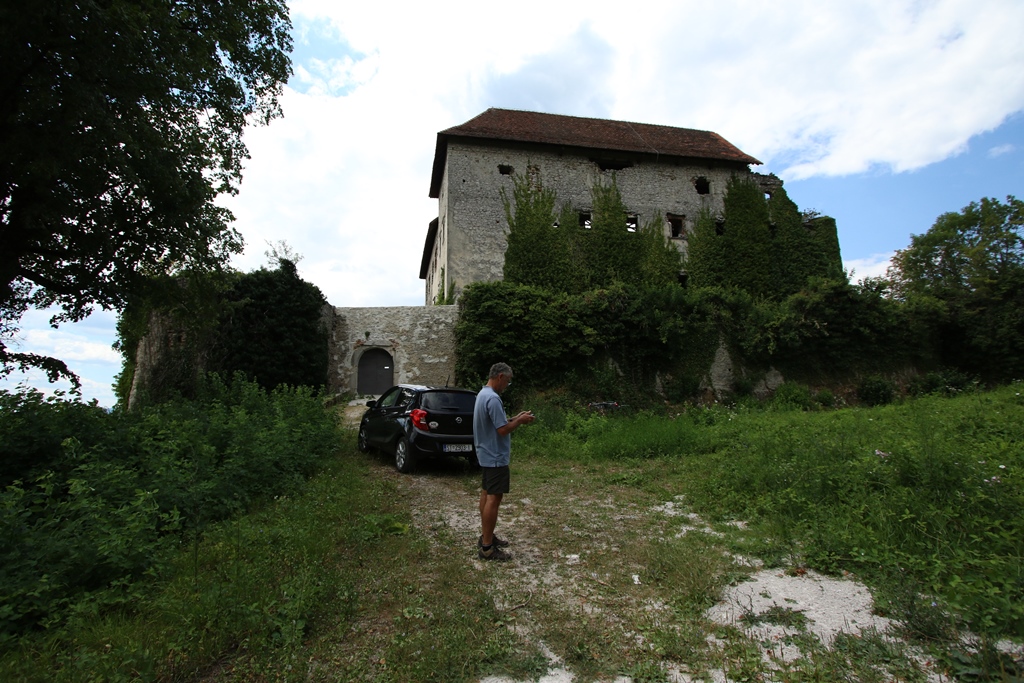
Flying the drone first time in Slovenia
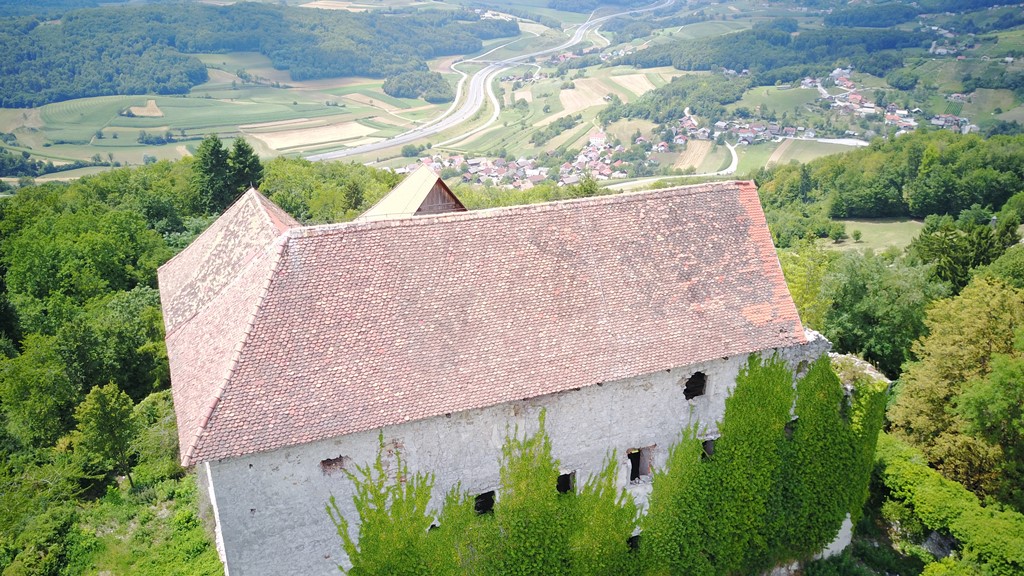
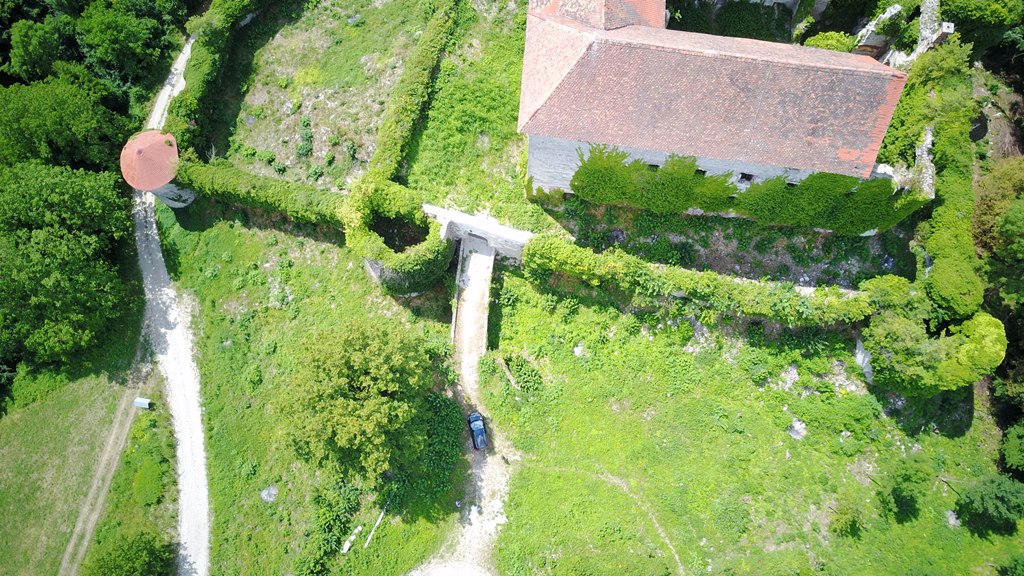
See our Opel!
31 TRIBOVLJE
It was a long drive to Tribovlje through the valleys. We found the church and target buildings in this industrial village that was attacked by the SAAF in 1945.
Click HERE to see the page of the SAAF attacks on Grad Tribovlje.

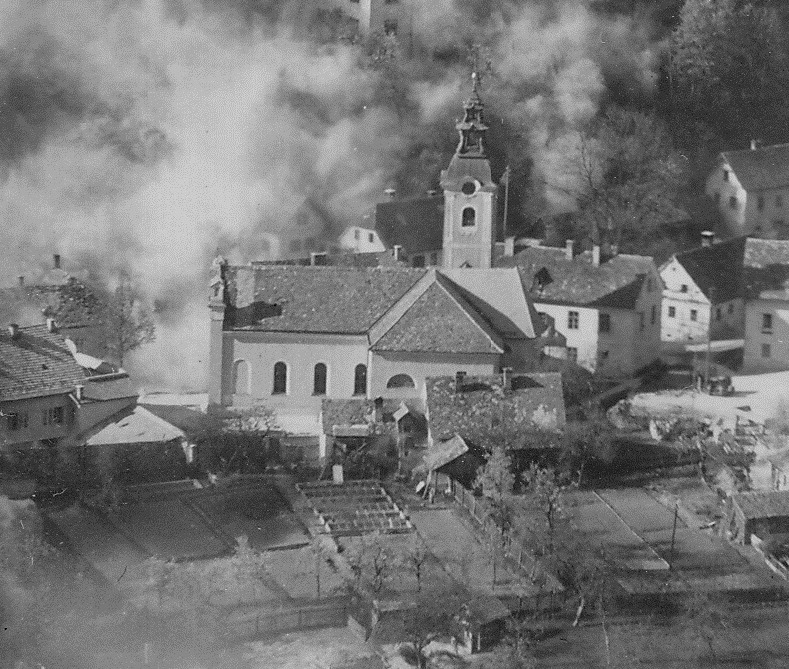
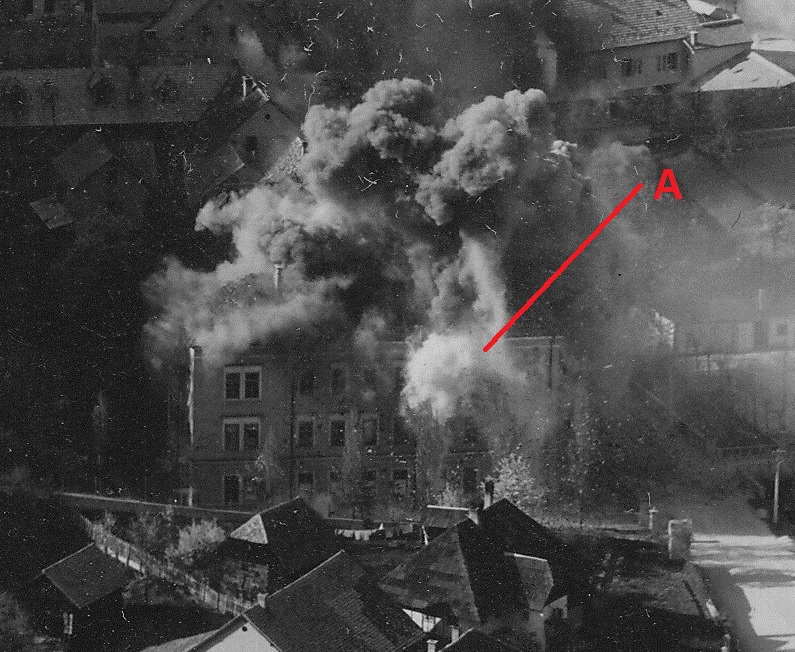
32 SEVNICA
We stayed in the most wonderful Guest house (Tourist farm Grobelnik) a few kilometers from Sevnica, in the country side.
Our hosts were wonderful and we had a good discussion (together with great locally made wine) regarding the strike photographs where features were positively identified.
The next morning we visited the railway station and photographed some of the features.
Click HERE to see the page of the SAAF attacks on Sevnica.
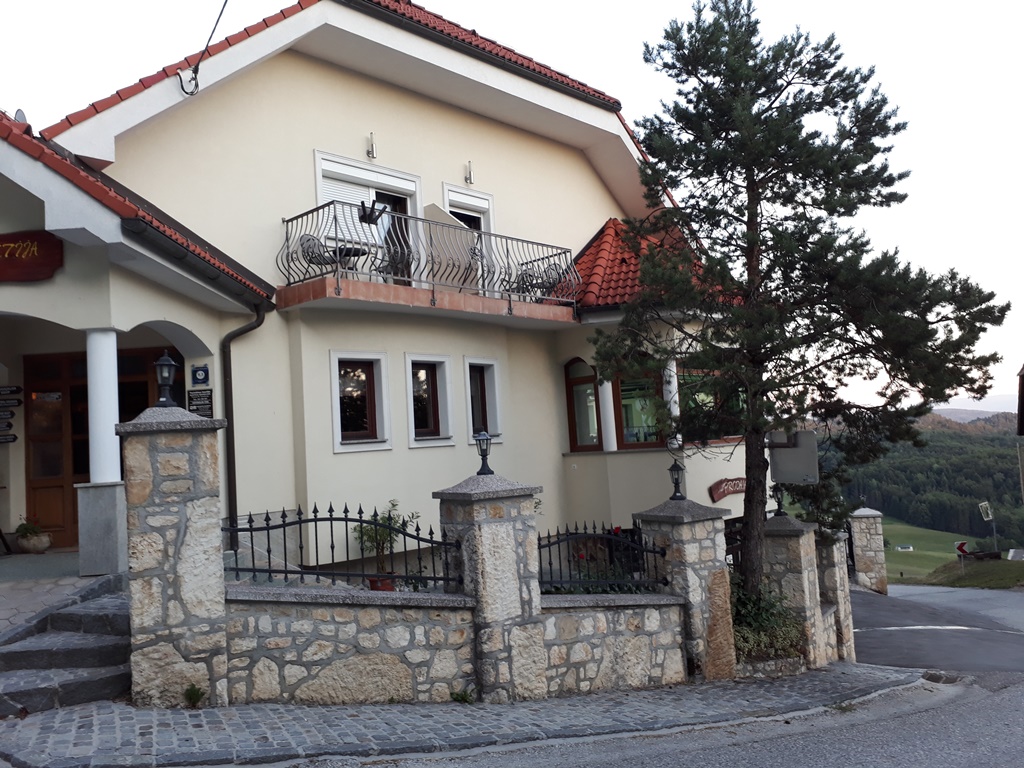
The guest house : Tourist farm Grobelnik
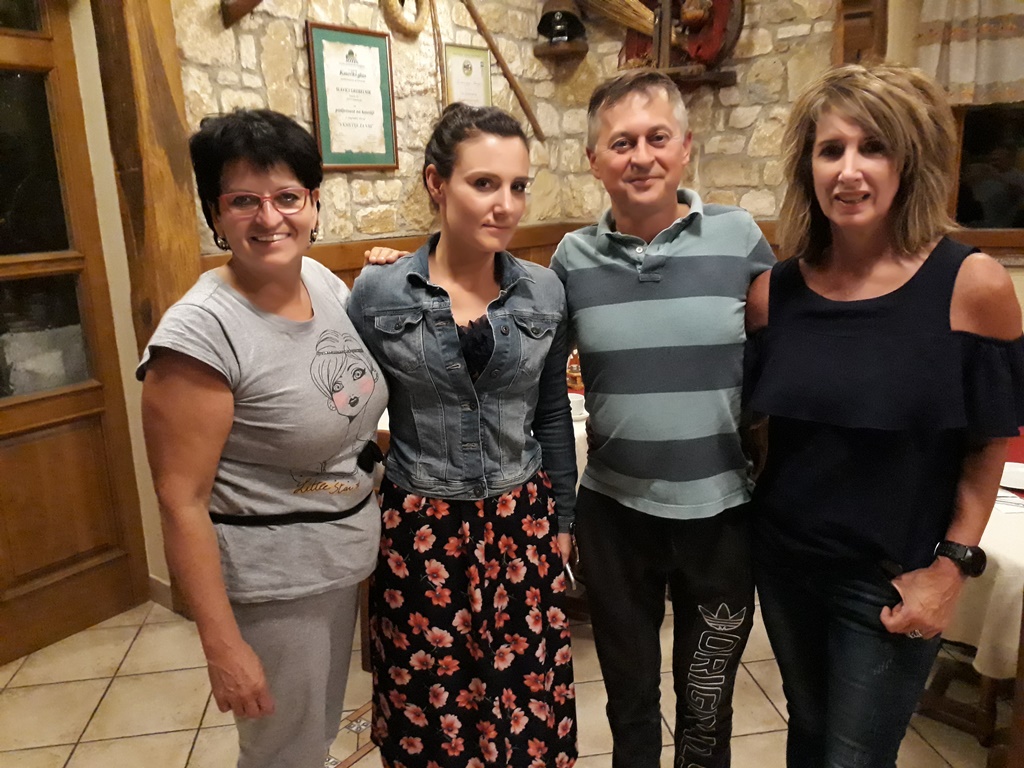
Our hosts: ??, Andreia, Janko, Tersia
Hello,
thank you for the photographs of us and those from war times.
It was a great time for us too.
I will talk with local museum about the materials you send to us and we will contact you for further informations.
Best regards,
Andreja Kobal
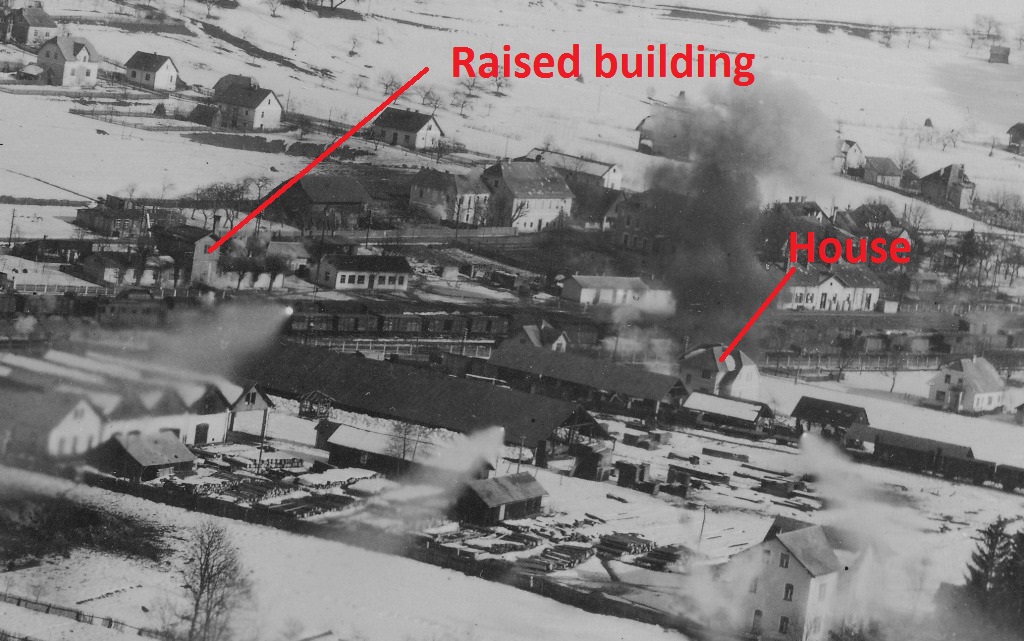
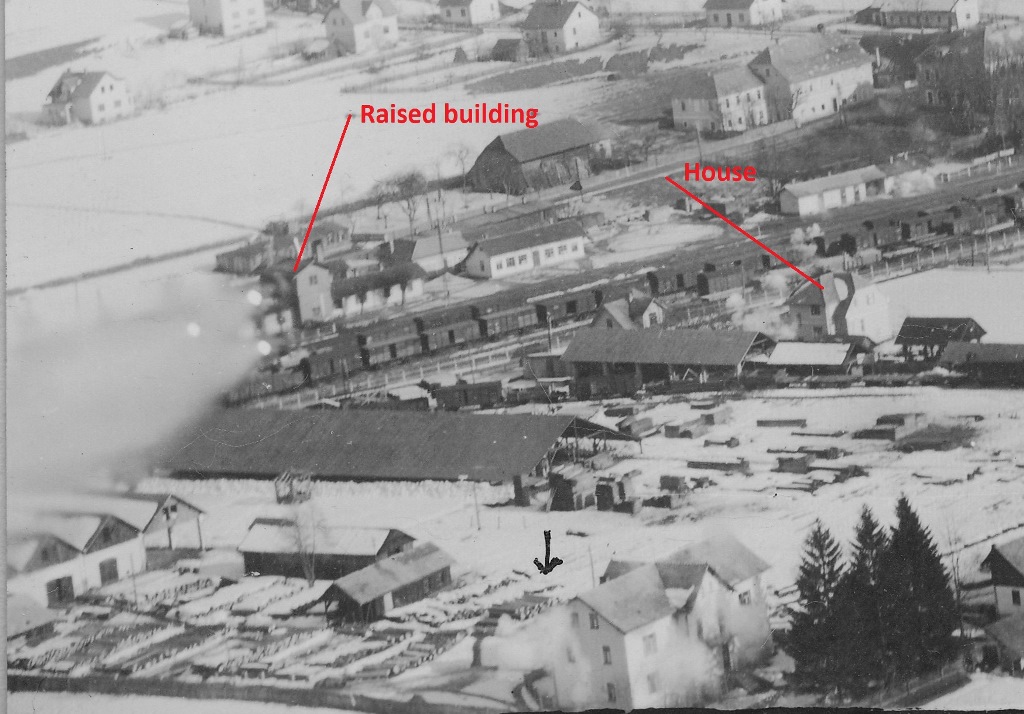
Here the raised building believed to be a water storage
House on the left identified from the strike photograph
33 PRUDNICE
In 1945 SAAF 16 squadron made a mistake where they thought Dobodo was attacked but instead the attack was made on Prudnice.
We found the railway station and also identified a few buildings.
Click HERE to see the page of the SAAF attacks on Prudnice.
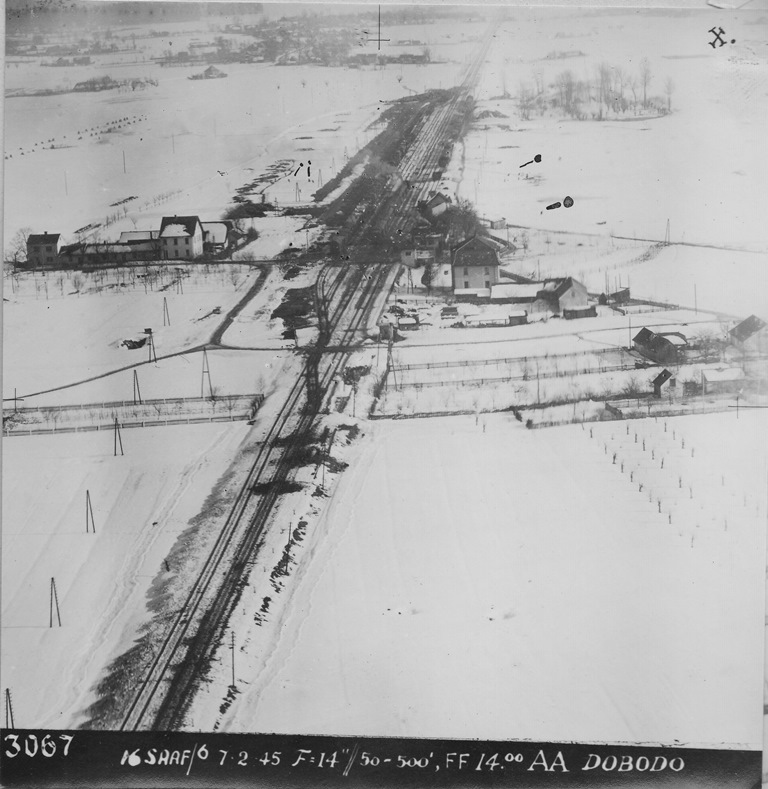

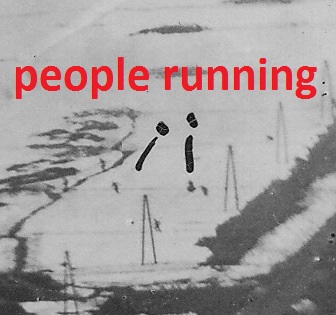
The house still there today
Station buildings still look the same
34 JASTREBARSKO
The village of Jastrebarsko was a major stronghold of the enemy and hence was attacked by the SAAF.
We identified several buildings that was attacked including those in the center of the village and also the huge castle on the edge of town.
At the local museum we met the curator, Jelena, who especially came to office to meet us as she was on sick leave and to see the historical strike photographs.
She told us more about the history of the village during WW2 and akso showed us around in the museum.
Click HERE to see the page of the SAAF attacks on Jastrebarsko.
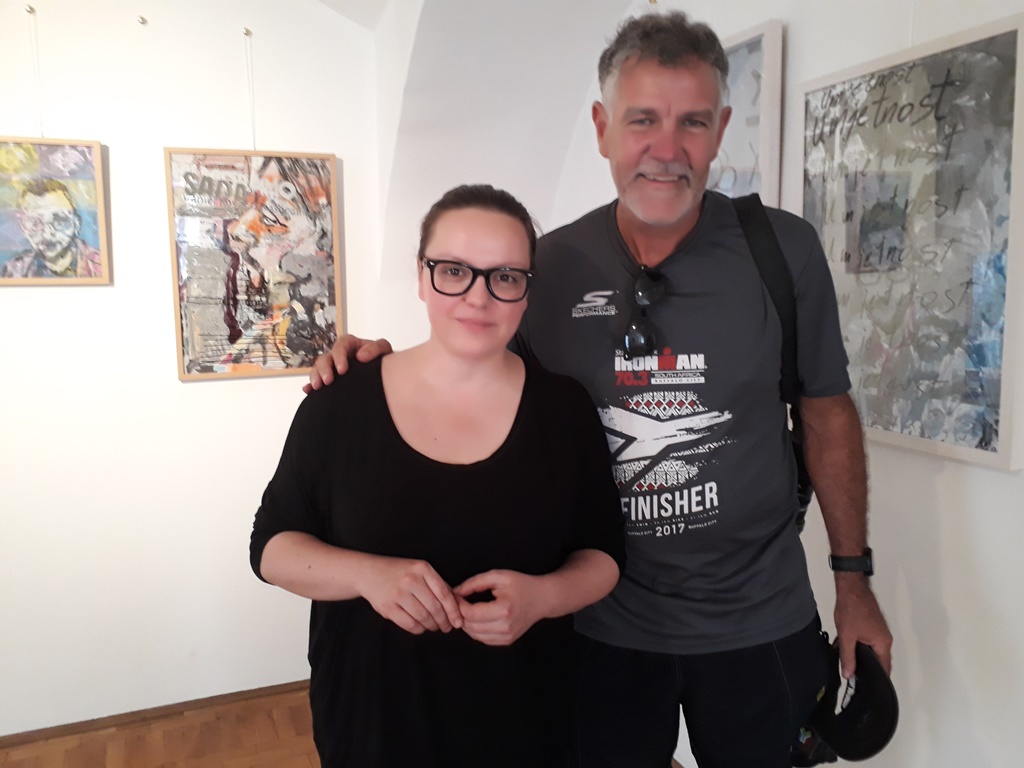
Jelena Škrabe
Dear Tinus
Thank you for links and photos, they are of great interest to me ( as museum curator) and to city of Jastrebarsko.
I just arrived from my sick leave, and started working in office.
Today, I will show photographs
of April 18., 1945. attack to Mr.Strmecki.
He was officer in JNA (Jugoslavian National Army), so from that point of view,
I hope that we will find some objective answers to target questions; why this
areas of city were important, and so on...
I looked in books on 1945 strike (from Jastrebarsko history), but there is no real answer still.
The only thing I find is that in the Castle of Erdody, there was orphanage for children, but that is something I know from before.
Also, 18.april 1945 is known and
called The liberation day (by partisans) of Jastrebarsko.
I'll keep working and putting the story together , and brief you with any new findings.
As I sad to you when you visited, the history and military documentation of II. WW, in general, was neglected and sometimes destroyed, in Jastrebarsko. I'll try my best to connect the pieces, by talking with people who have right info, and looking into forgotten literature.
Please, It wold be great if you send me the high resolution photographs, that would be treasure for my archive and for present and future work.
Best regards,
Jelena Škrabe
Hello Tinus
It's great to receive your e-mail because just few days ago, I finally got some strong information about why the building you were asked about, the ex city hall, was targeted in the attack in 18.4.1945.
The information is this;
At the first floor of that building, there was, in the moment of the
attack,headquarters of USTAŠE (ustashe).
So there was no german or italian soliders, only croatians born troops-Ustashe (soliders of NDH).
Major Josip Fištrić (Fishtrich), who was in charge, wasn't there anymore at the day of attack, because he run away from the country with Ante Pavelic (Pavelich), head of NDH and Ustashe army, to Argentina. He was very close to Pavelich, so they fled together. Soliders that were left were killed as war criminals, got in prison or run to hide in villages near Jastrebarsko.
Pearson who told me the information is lawyer Nikola Žunac, and he got the information last friday, from Mrs. Neda Dabelić (Dabelich), grandchild of Izloda Polak.
Mrs.Nada Dabelich lived in house next door, the one next to building that was attacked. She was 17 years old in April 1945. and she remembers that Ustashe headquarters was there.
I'm sending you the photo of today buildings and drawing of old house Polak ( Polaks are grandparents of Nada Krmpotich) that was there at that time.
It's really amazing that Mr. Žunac, the lawyer that gave me the information, met with Mrs. Krmpotich last friday, for some legal reasons, and you wrote to me just then!!!
And dear Tinus, I'm glad that I
can finally give you info, because this is the story from first hand, lady was
there at the time. Unfortunetly, no written info (from journals, books or army
files) was there to find, but that is not strange, because all chaos that become
after '45....
My official e-mail is this one: muzej@czk-jastrebarsko.hr, so you can put it in your report, and pictures too, that's great.
Greetings from Jastrebarsko!
Jelena Škrabe
City museum of Jastrebarsko M
USEUM OF JASTREBARSKO
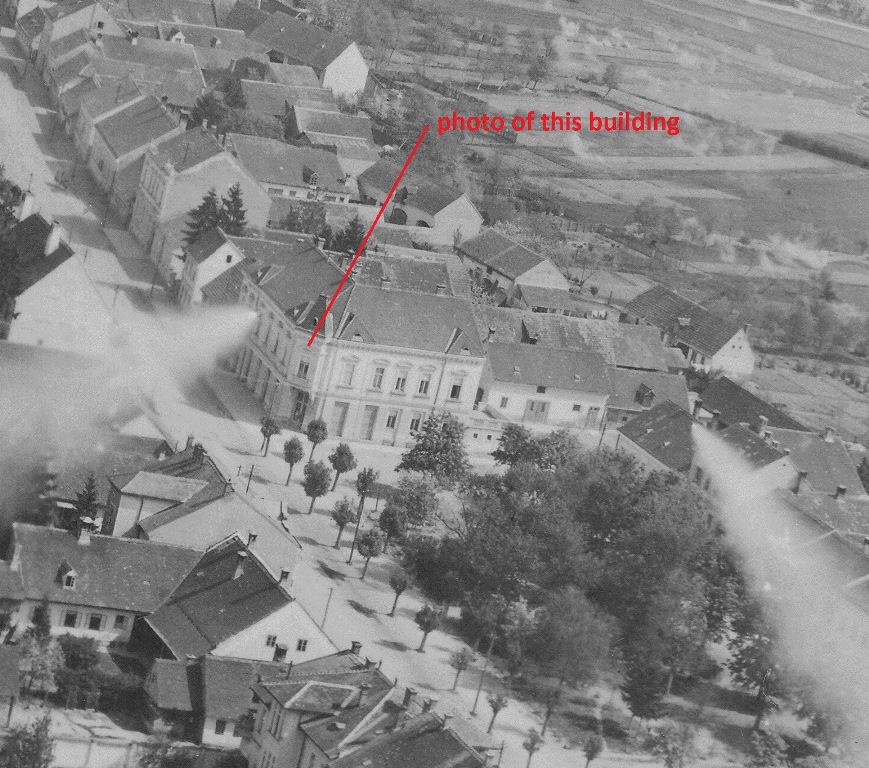
On the second floor of this building was the HQ of the local USTAŠE
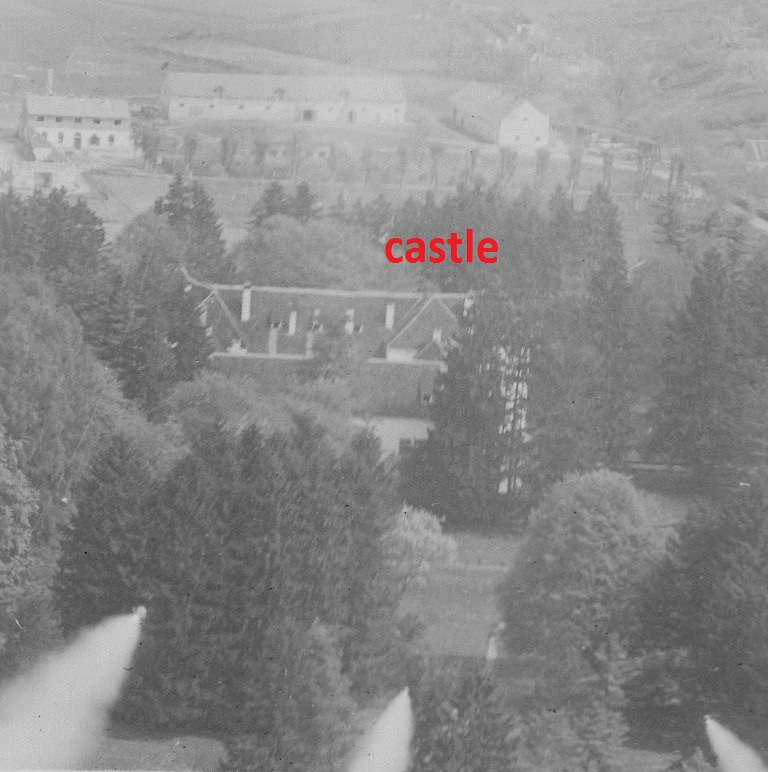
Castle today

Church with the house of the priest next to it and how it look today below
35 OZALJ
The village of Ozalj and the beautiful castle of Osalj were attacked by SAAF 16 squadron in 1945.
We visited the castle and showed the photographs to the curator, Stjepan Bezhak. He was quite impressed with the photographs and kindly took us on a tour through the castle. We also visited the village of Ozalj with the hydro generation facility.
Click HERE to see the page of the SAAF attacks on Ozalj.
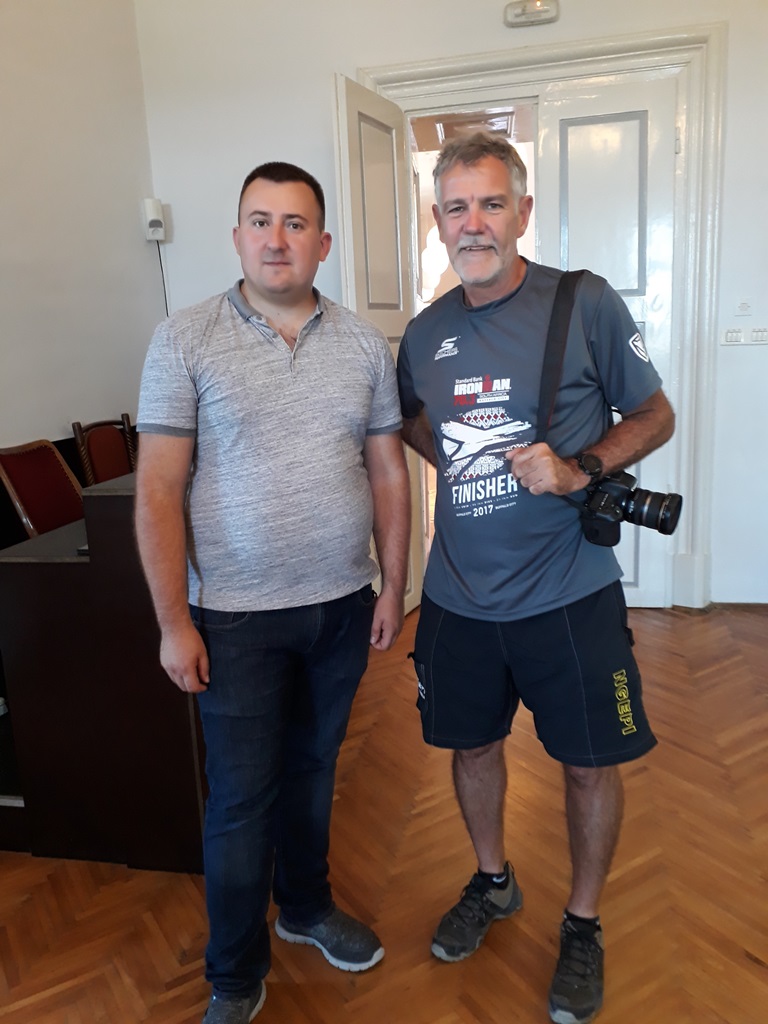
Stjepan Bezhak Director, curator of Regional Museum
